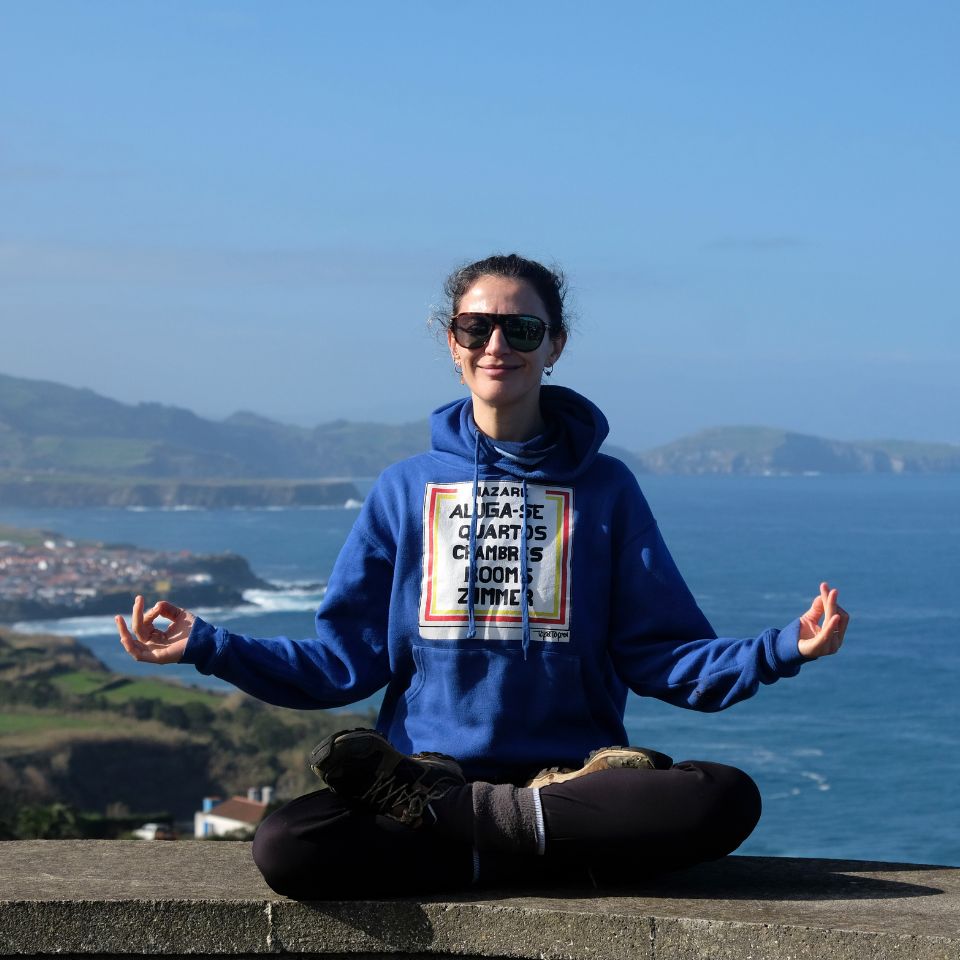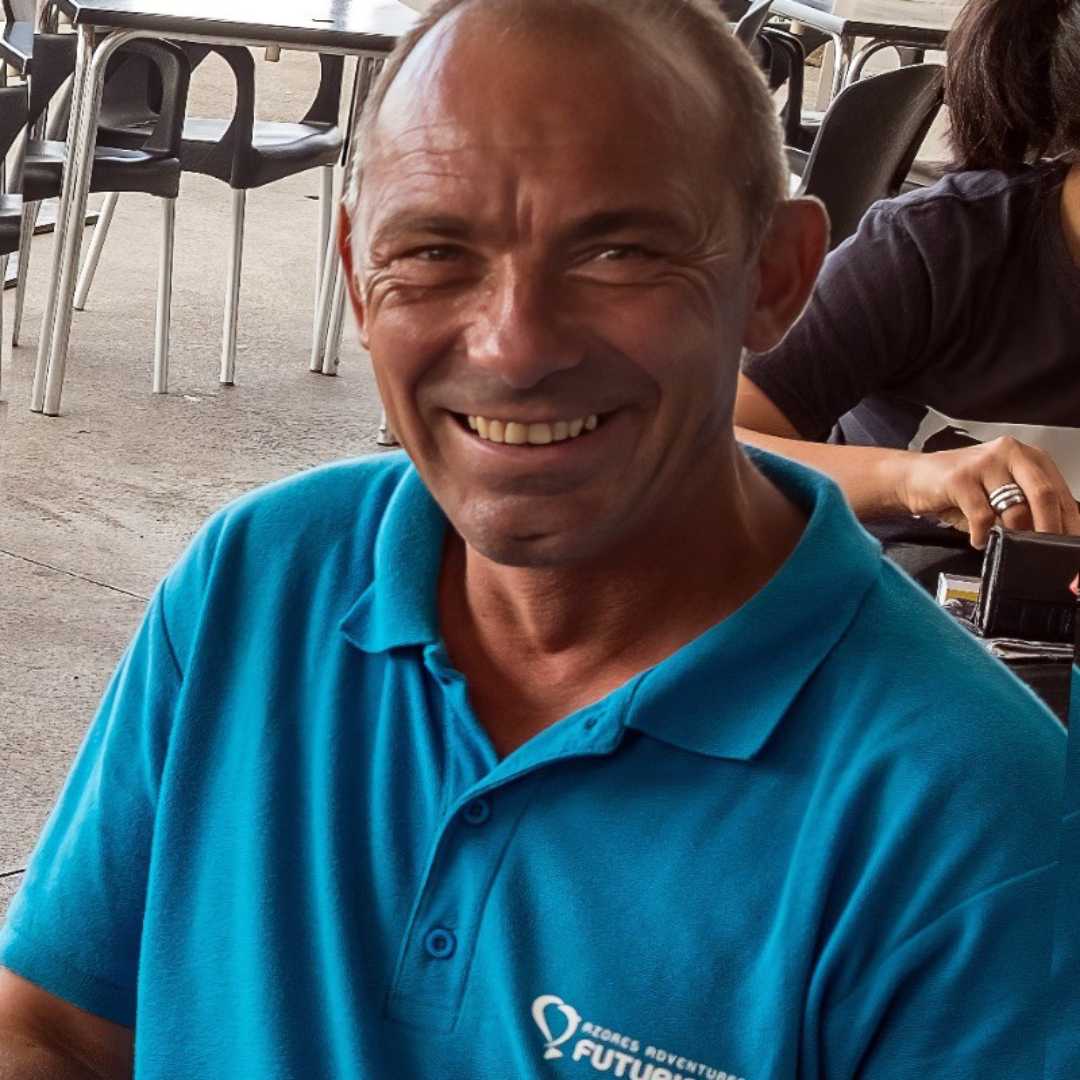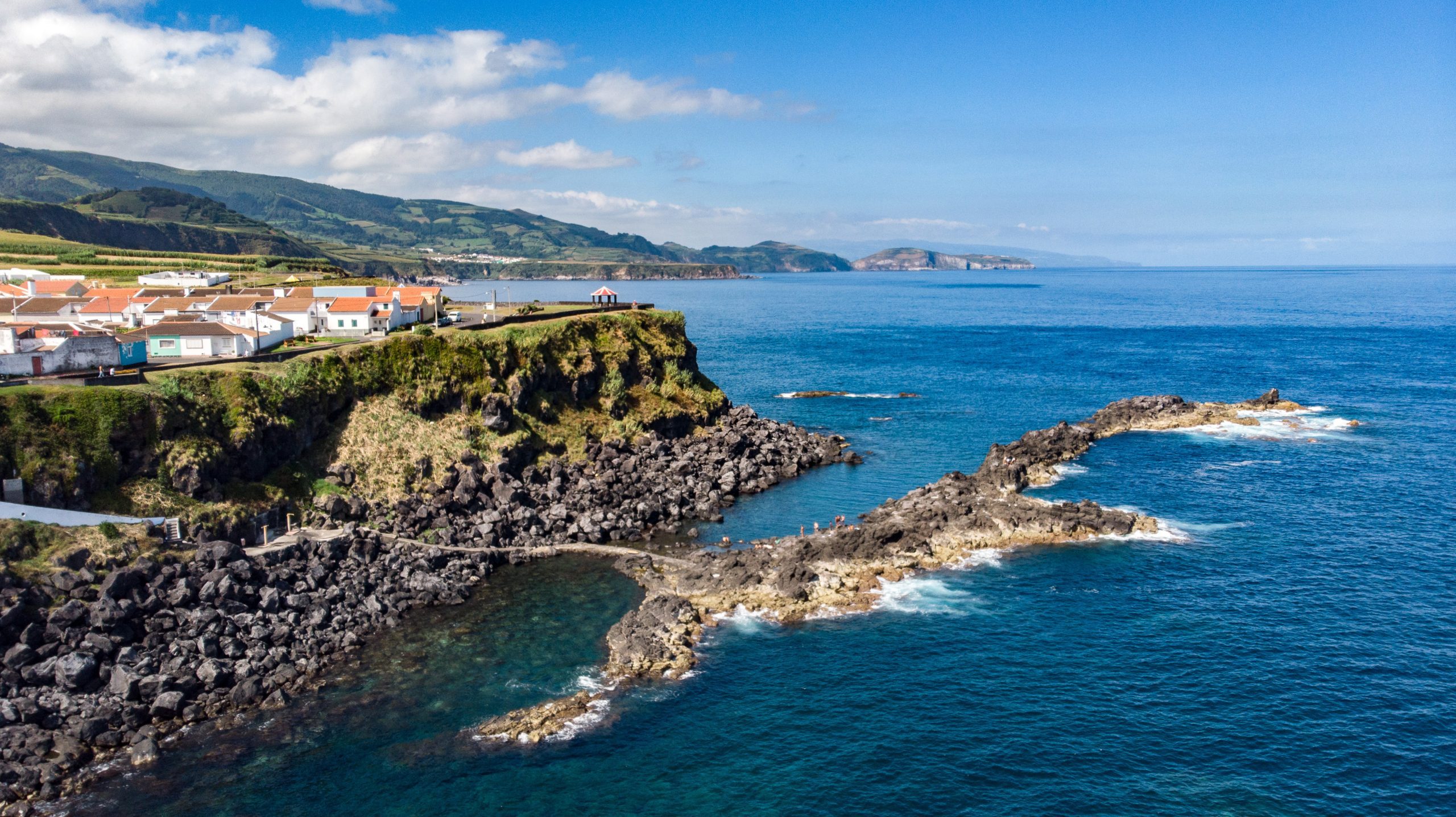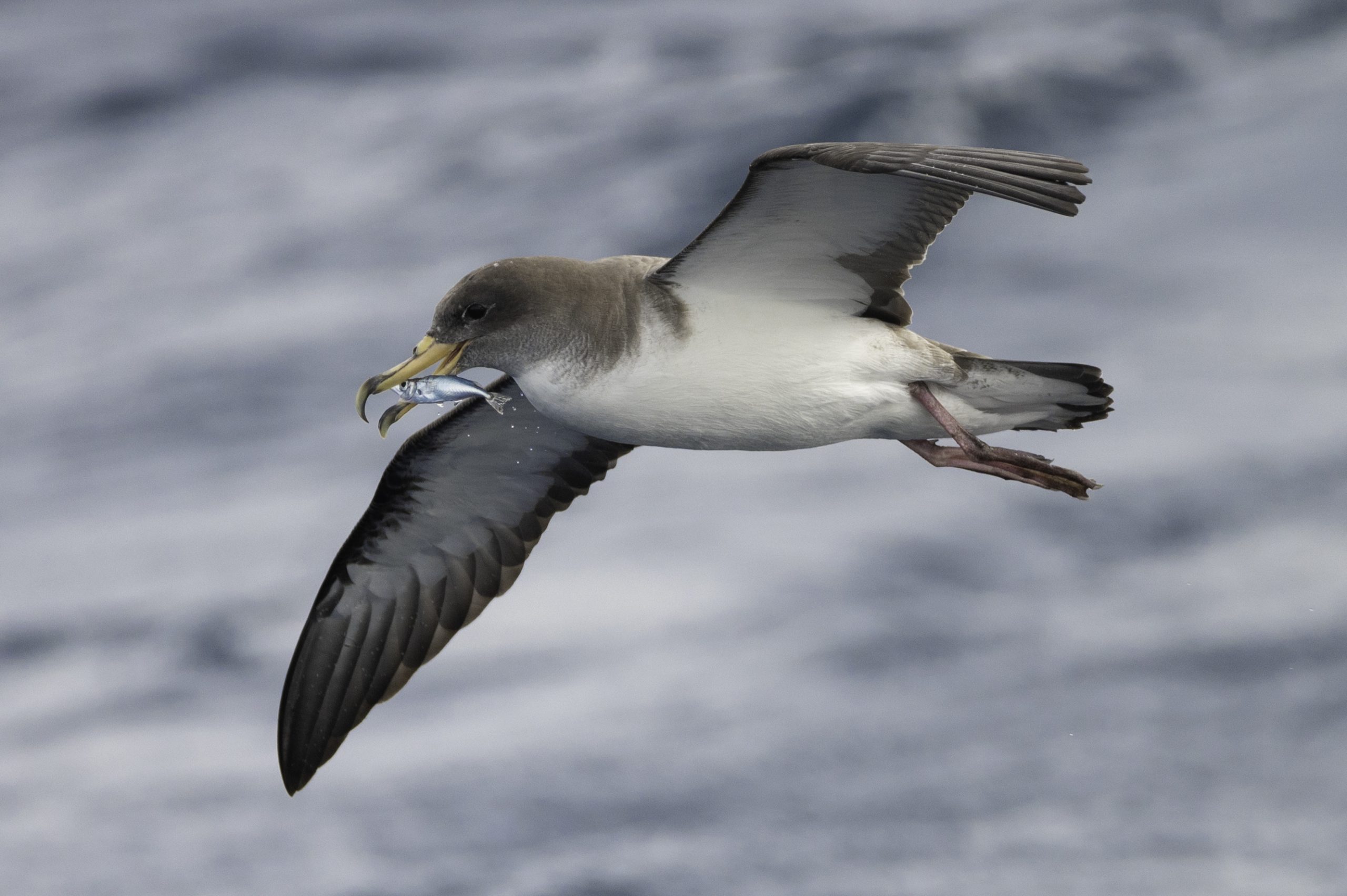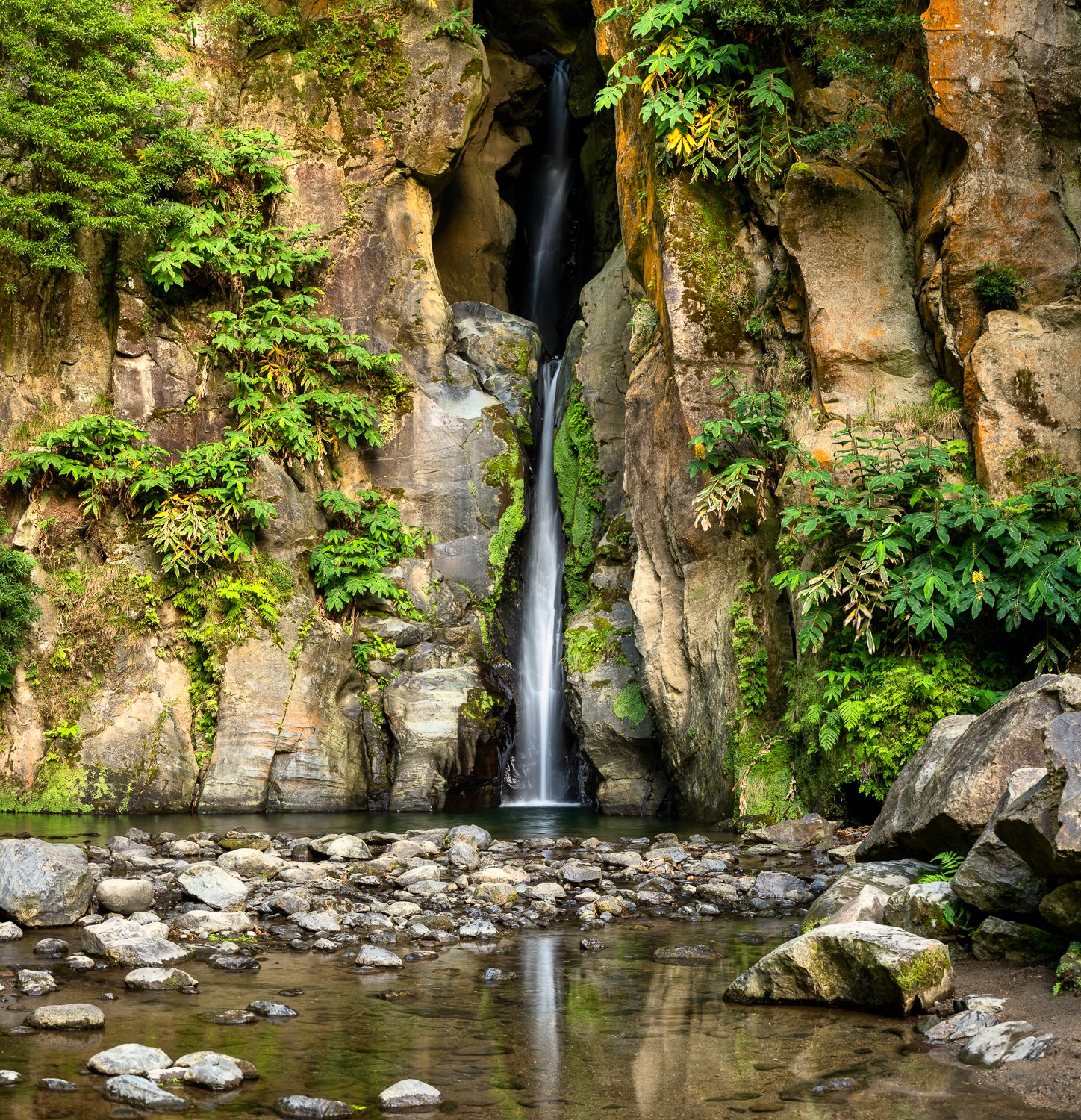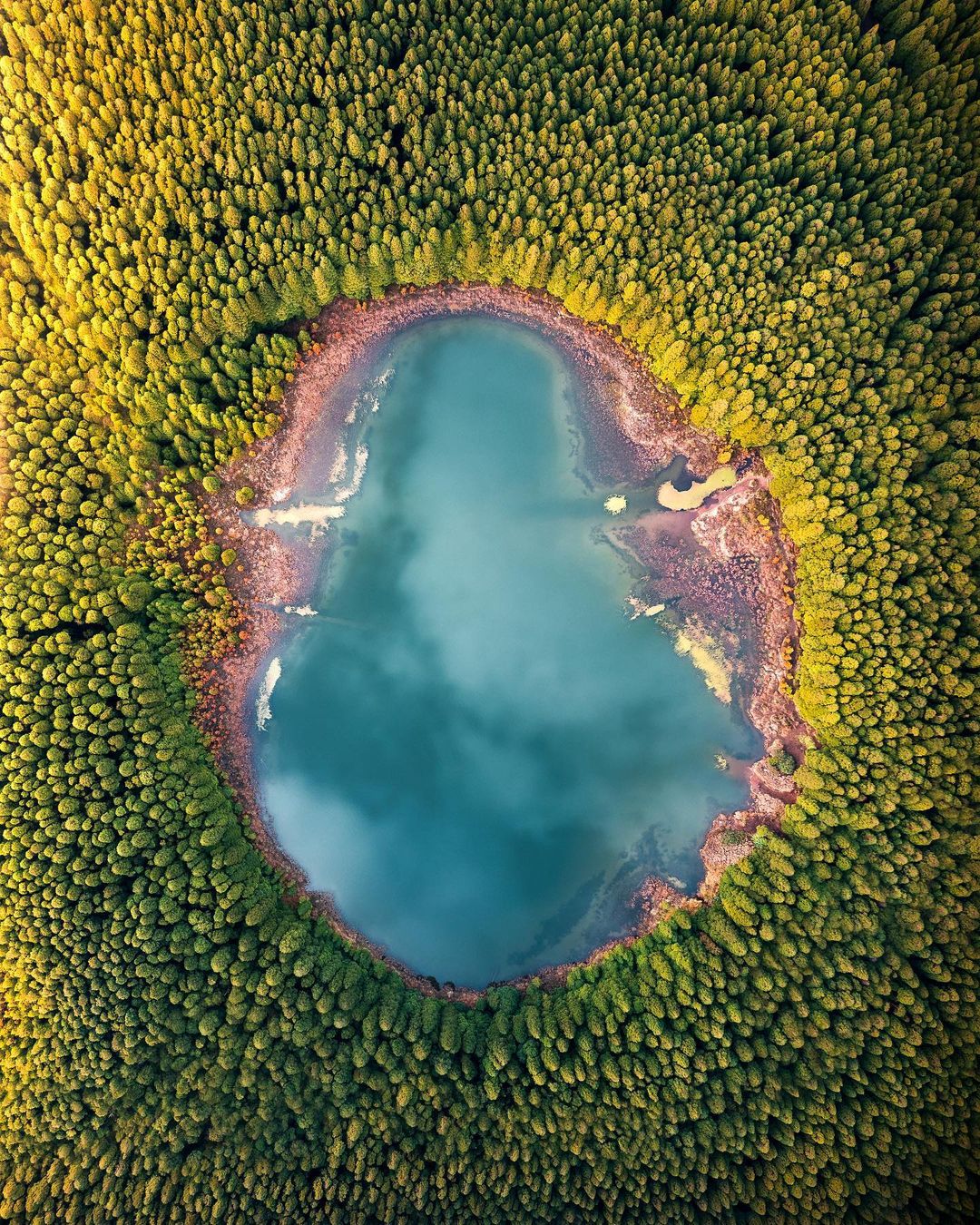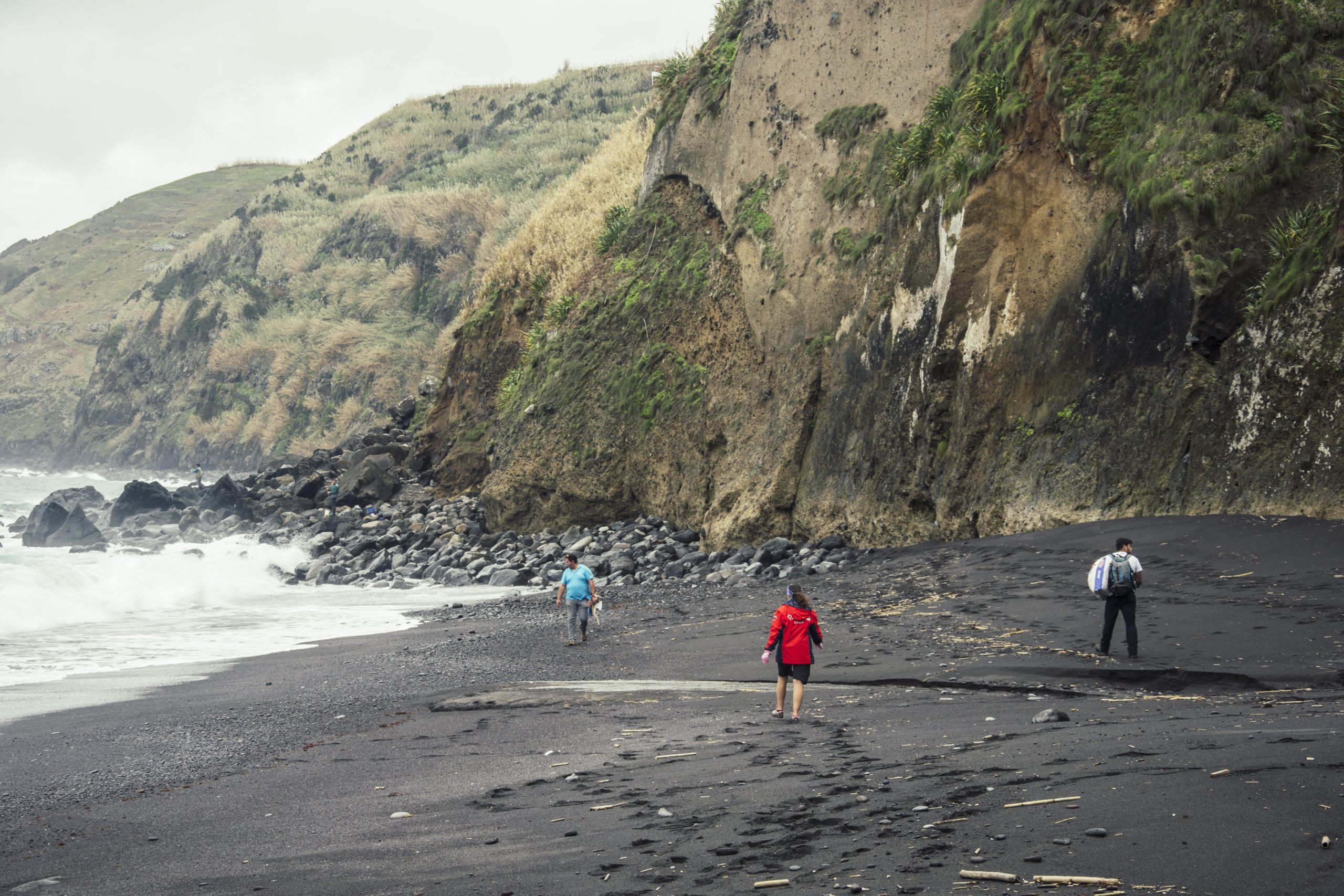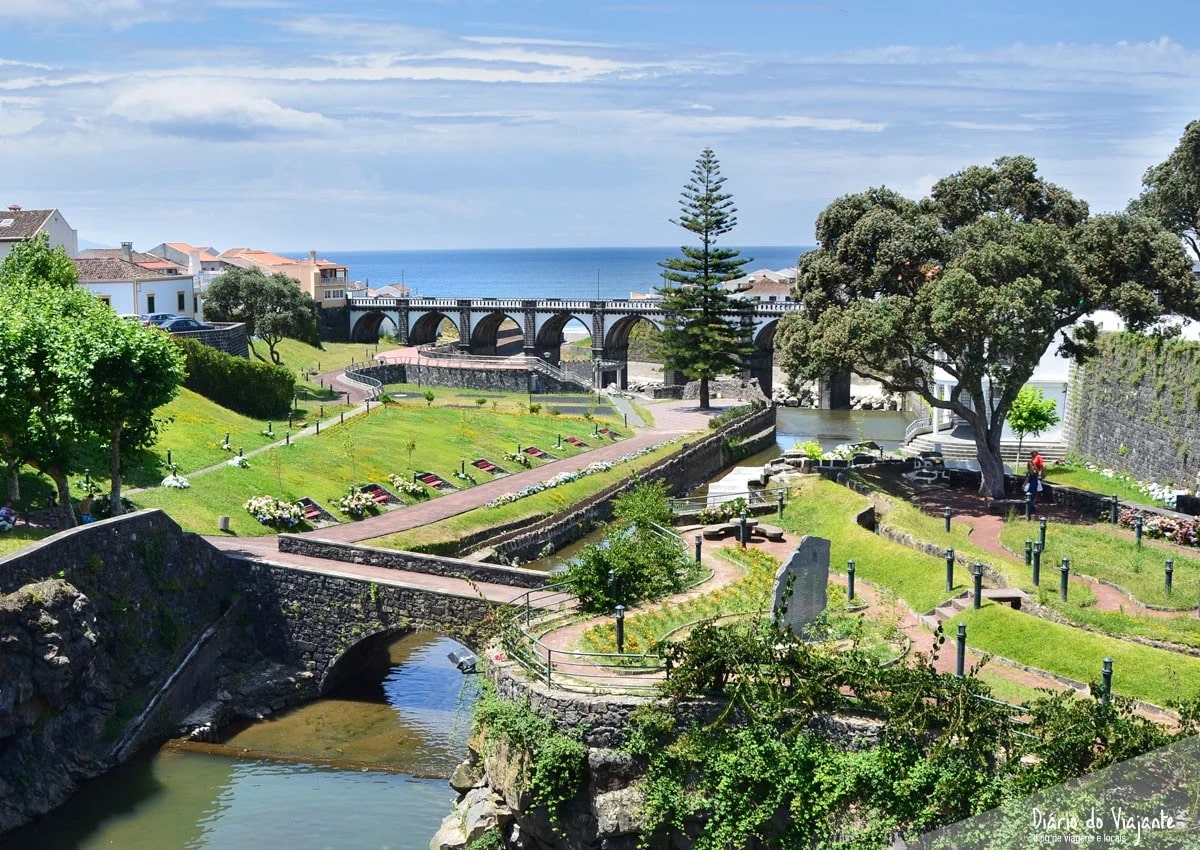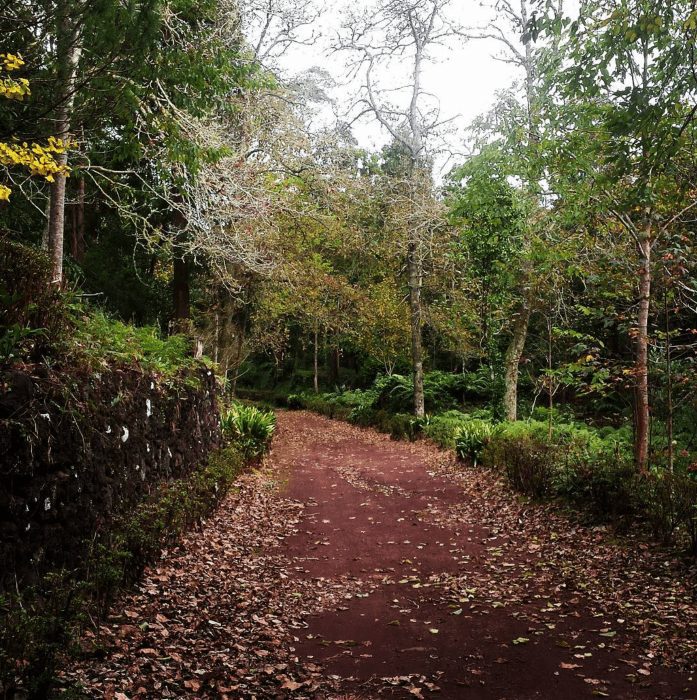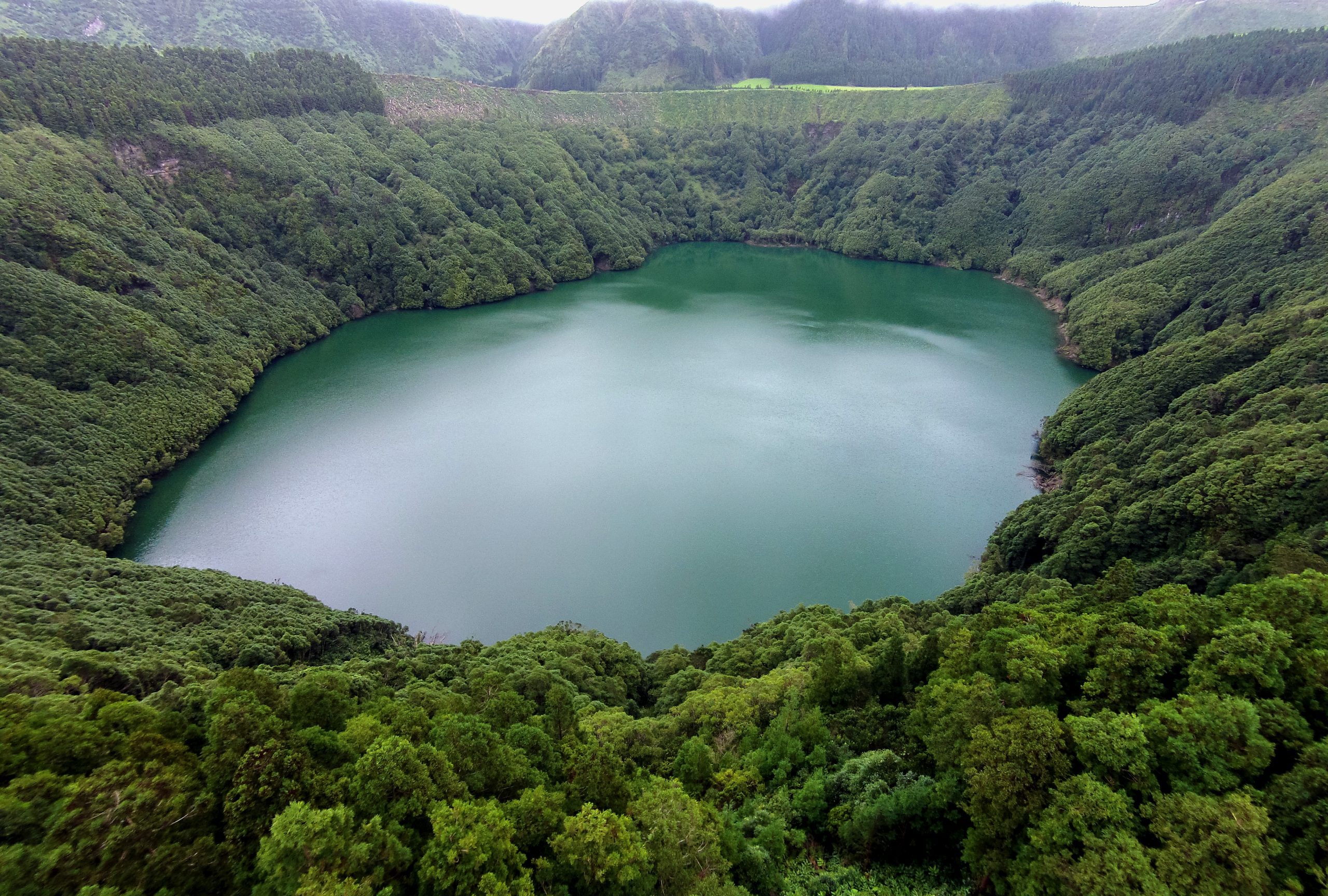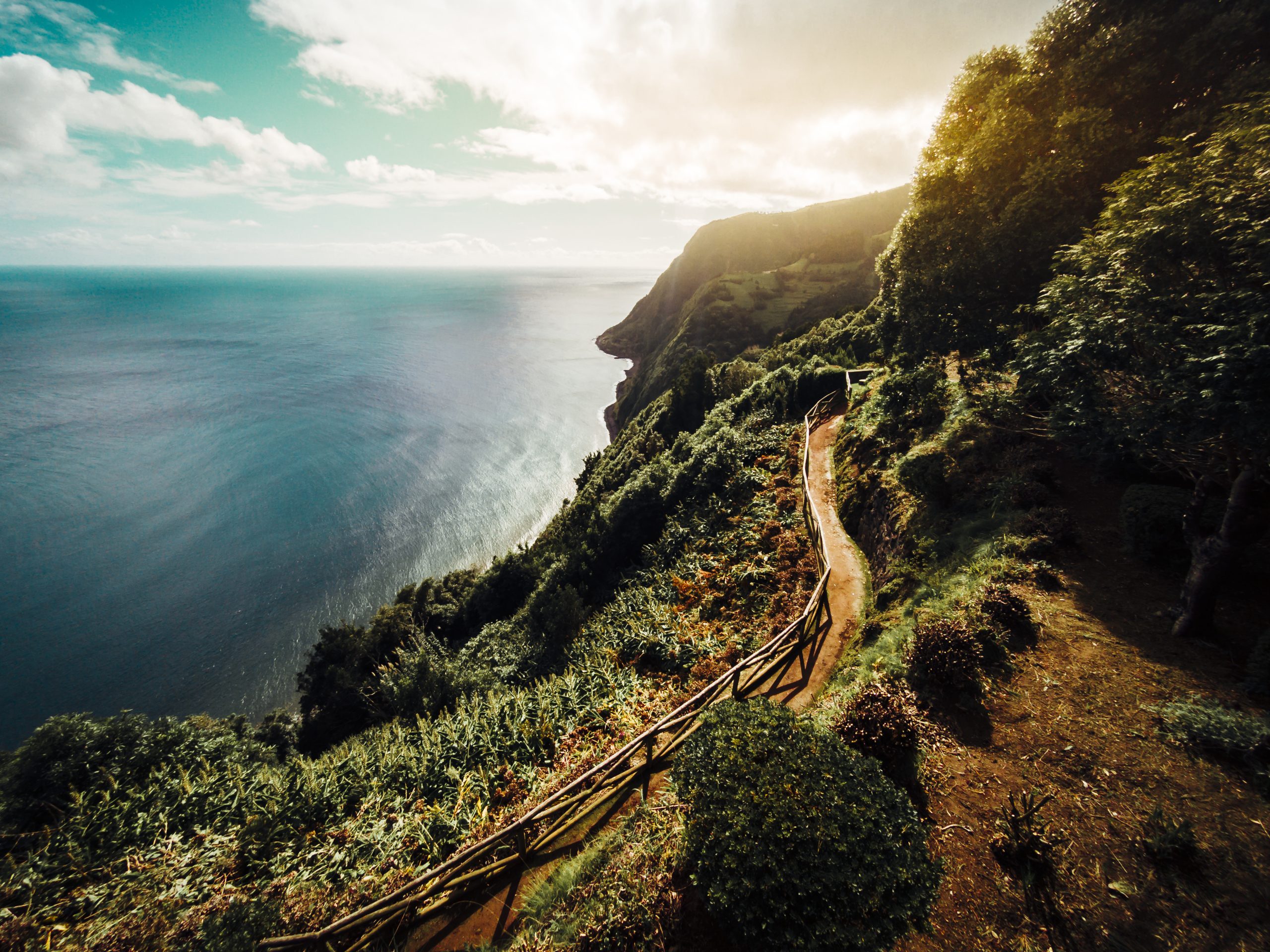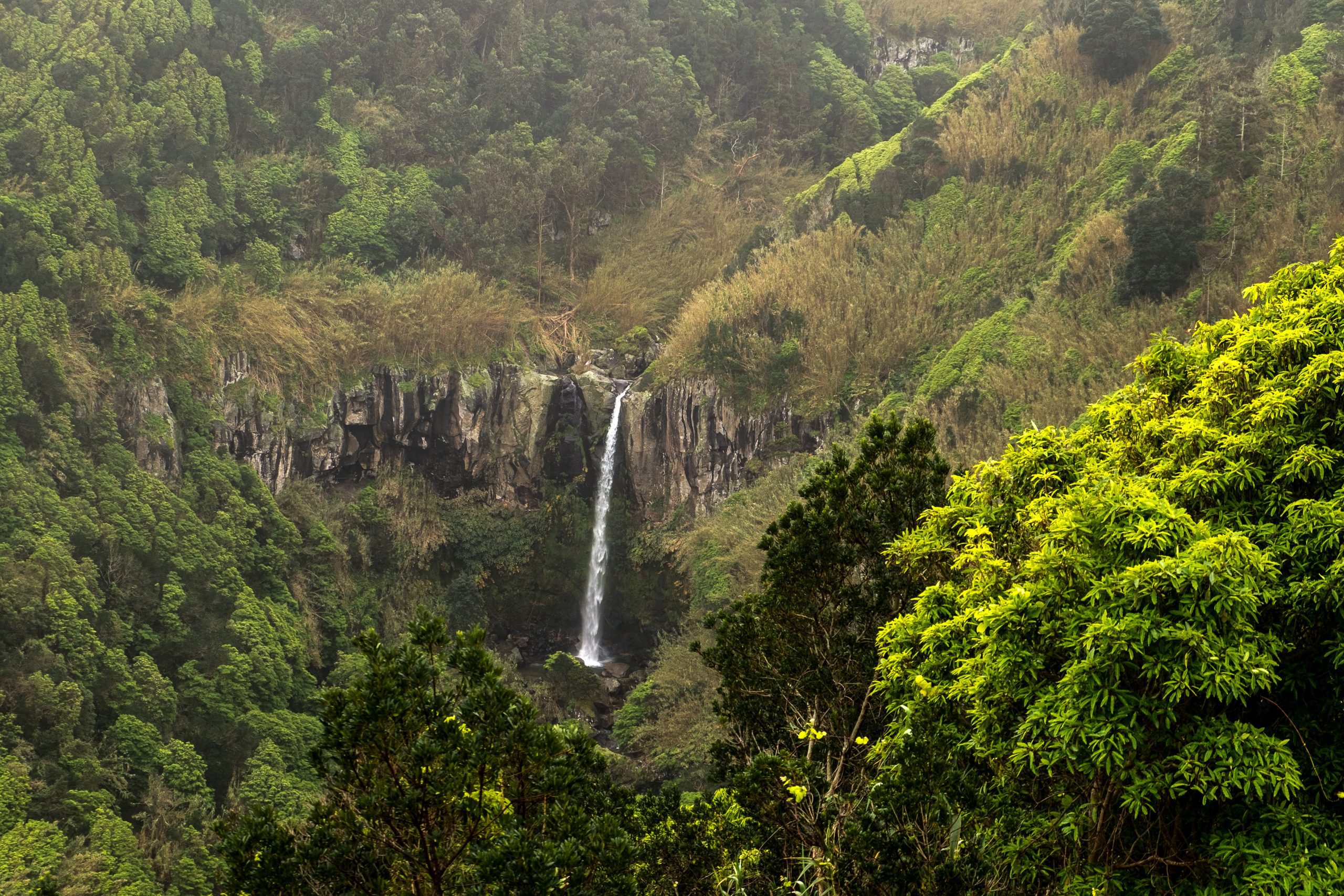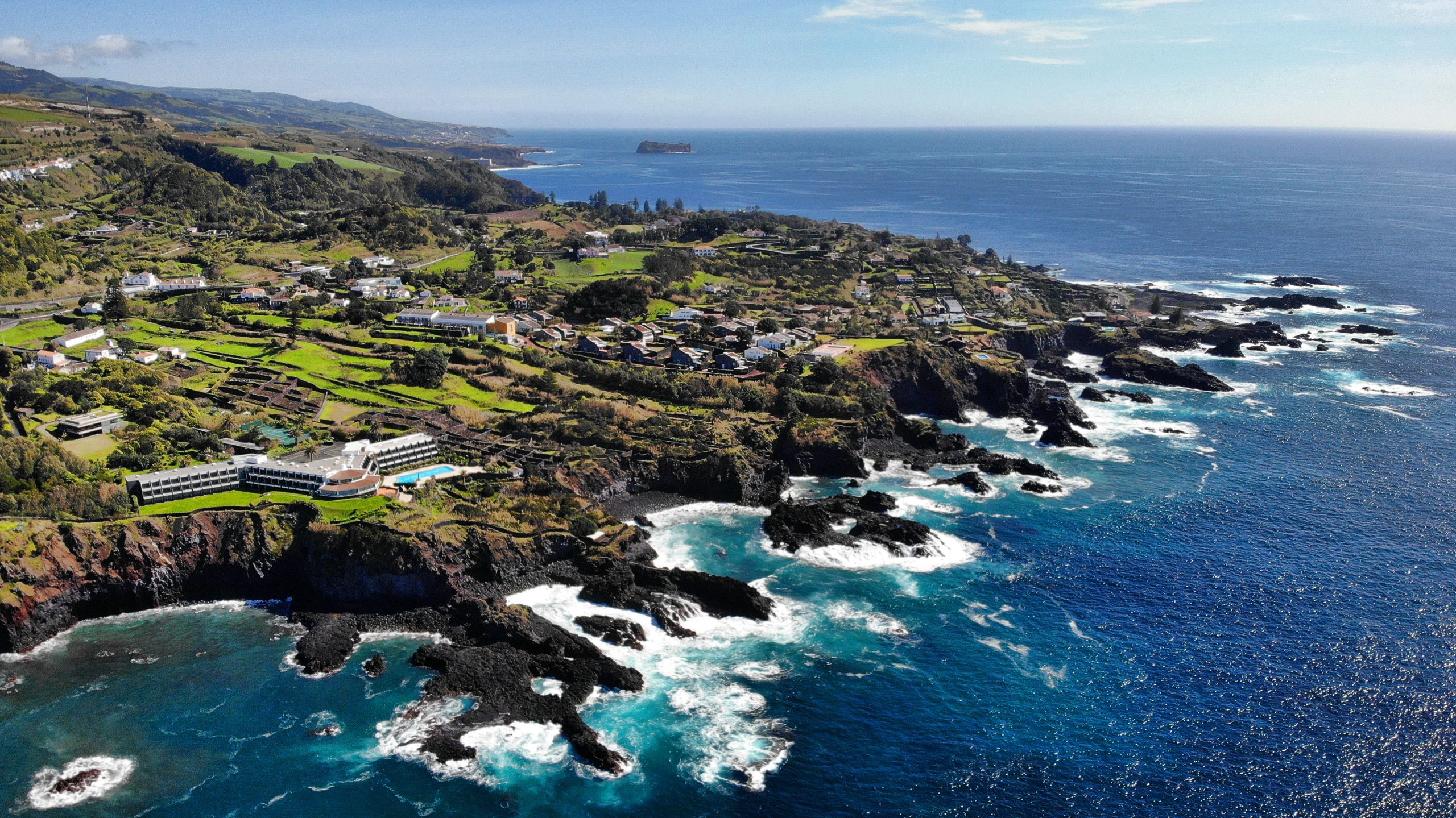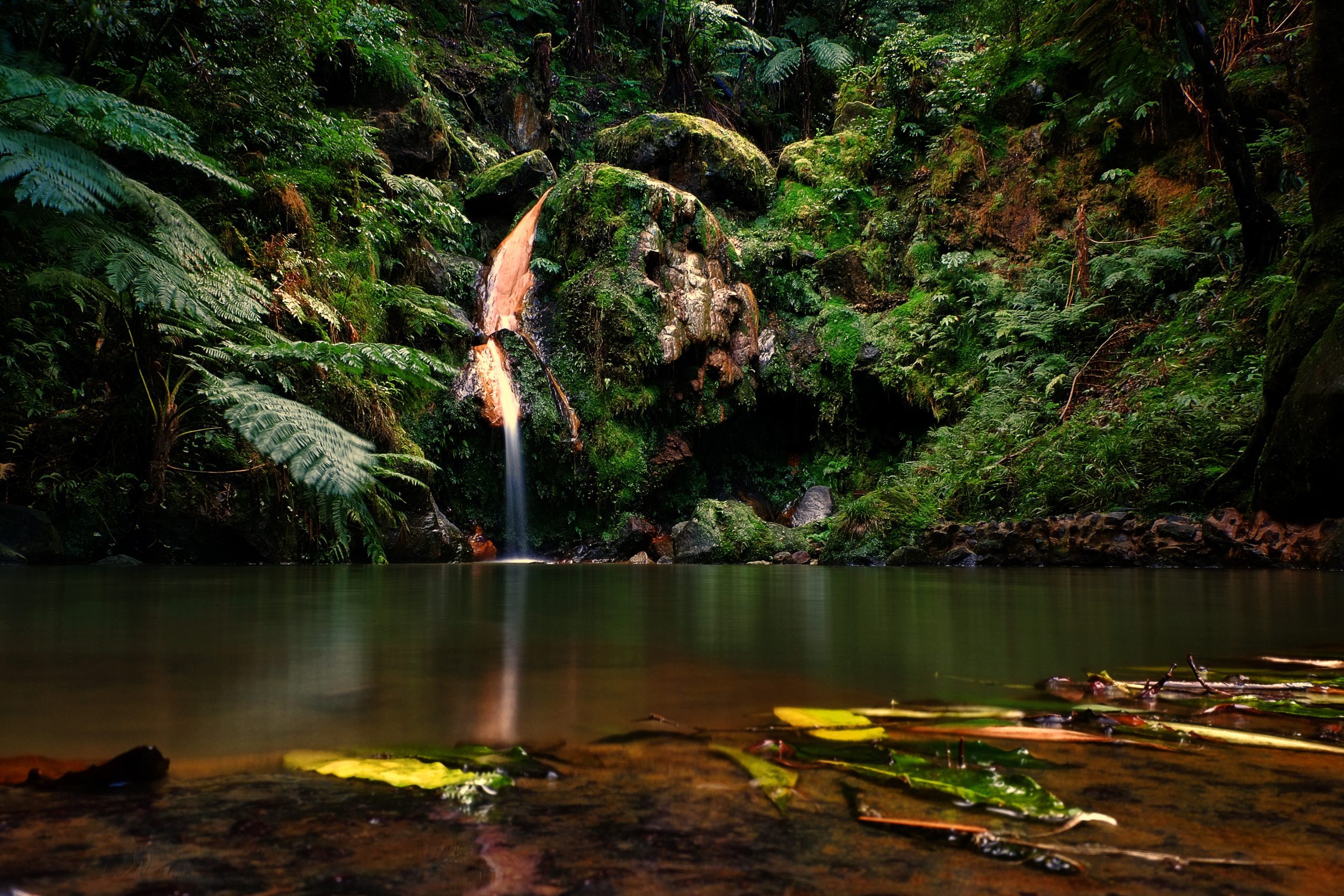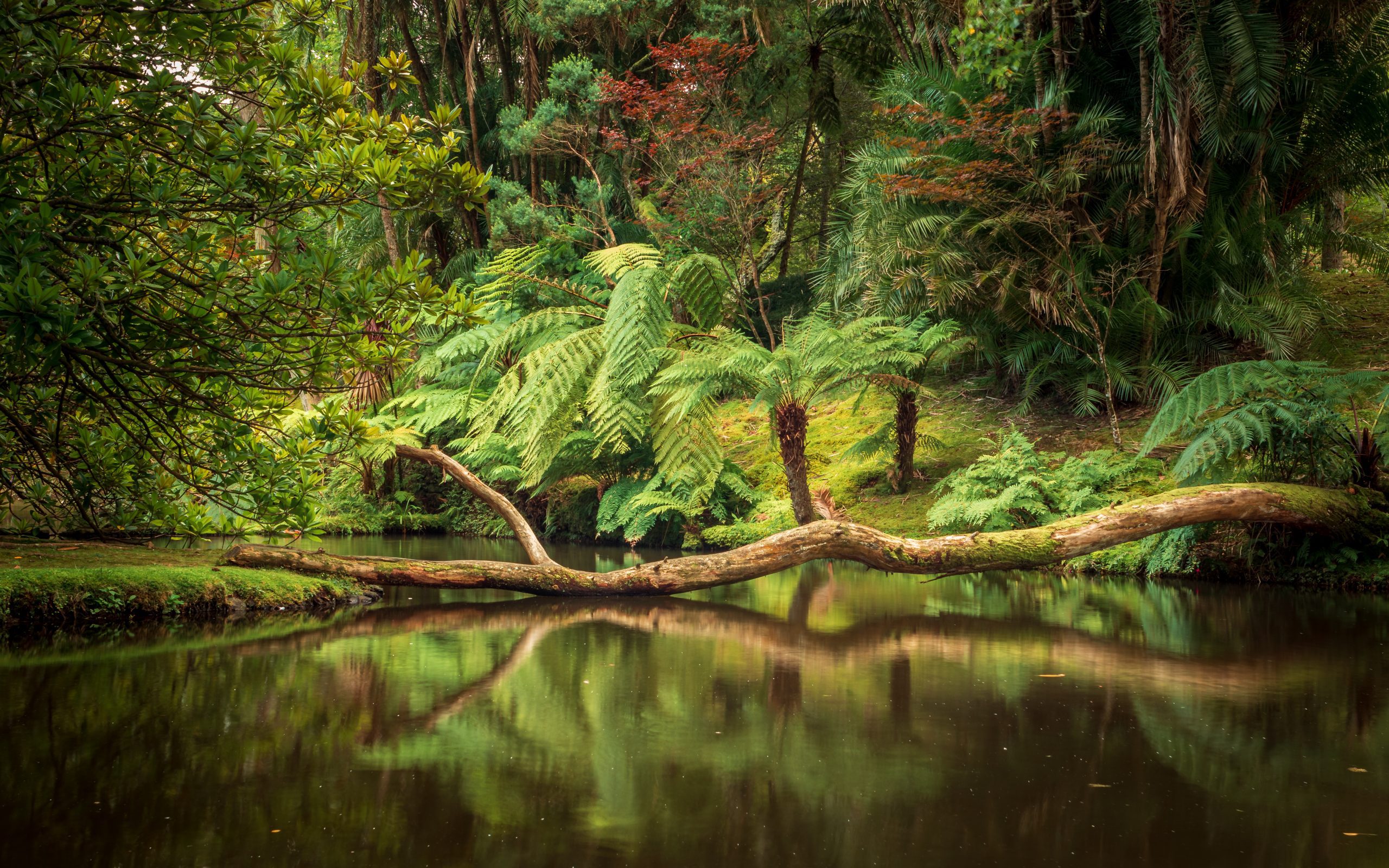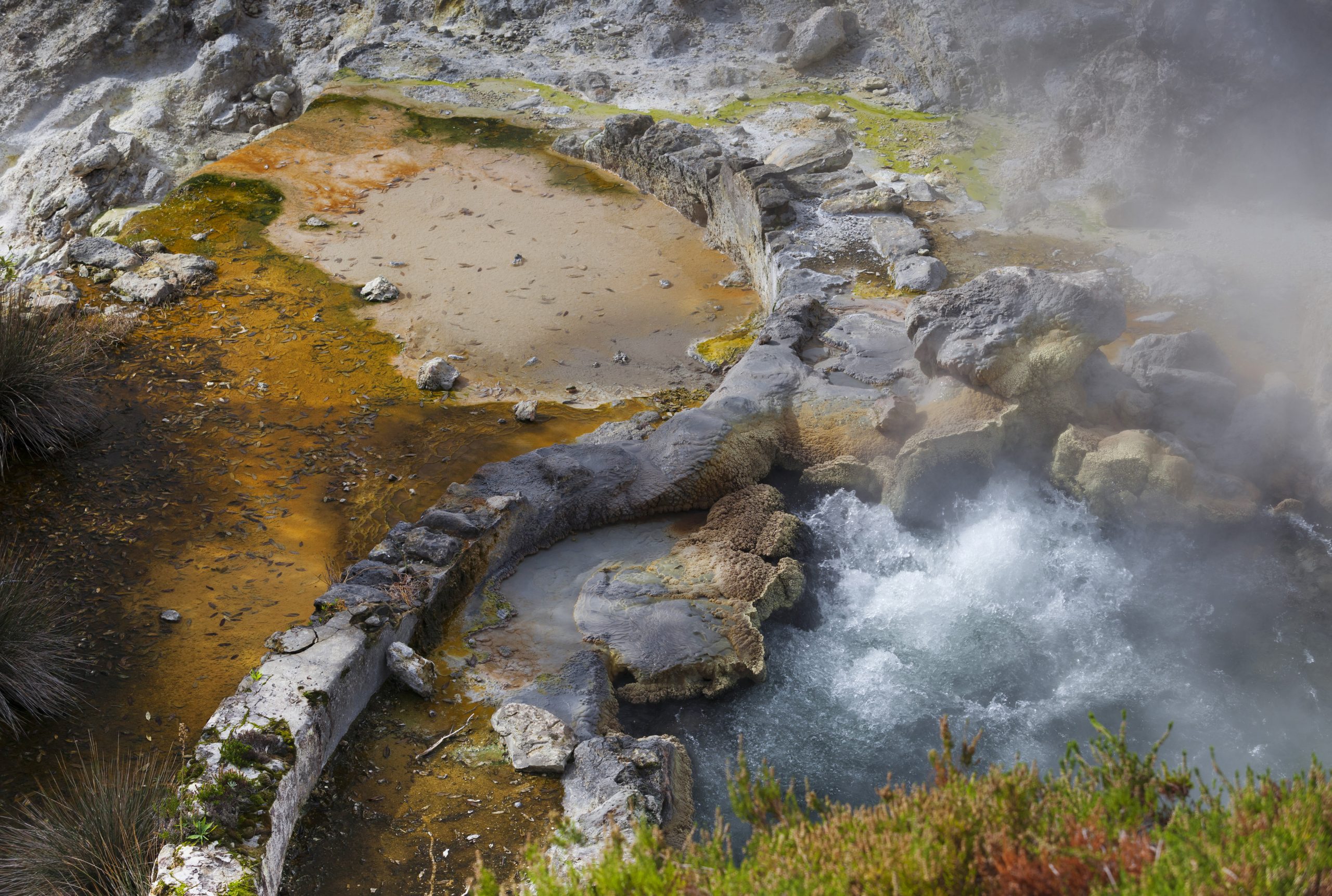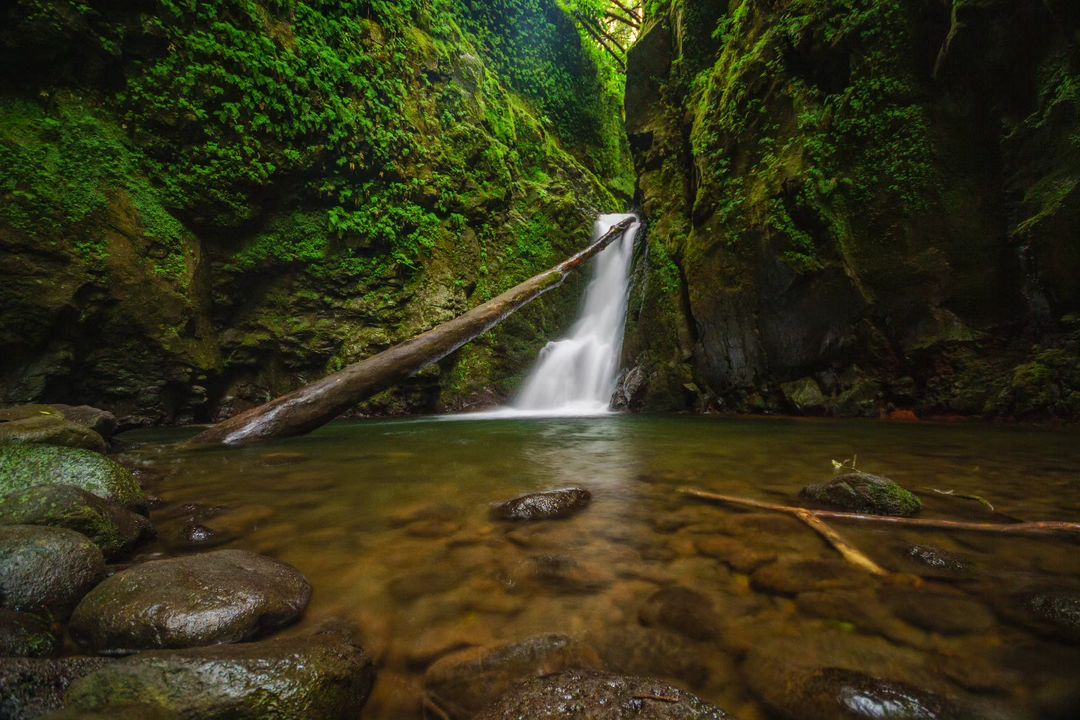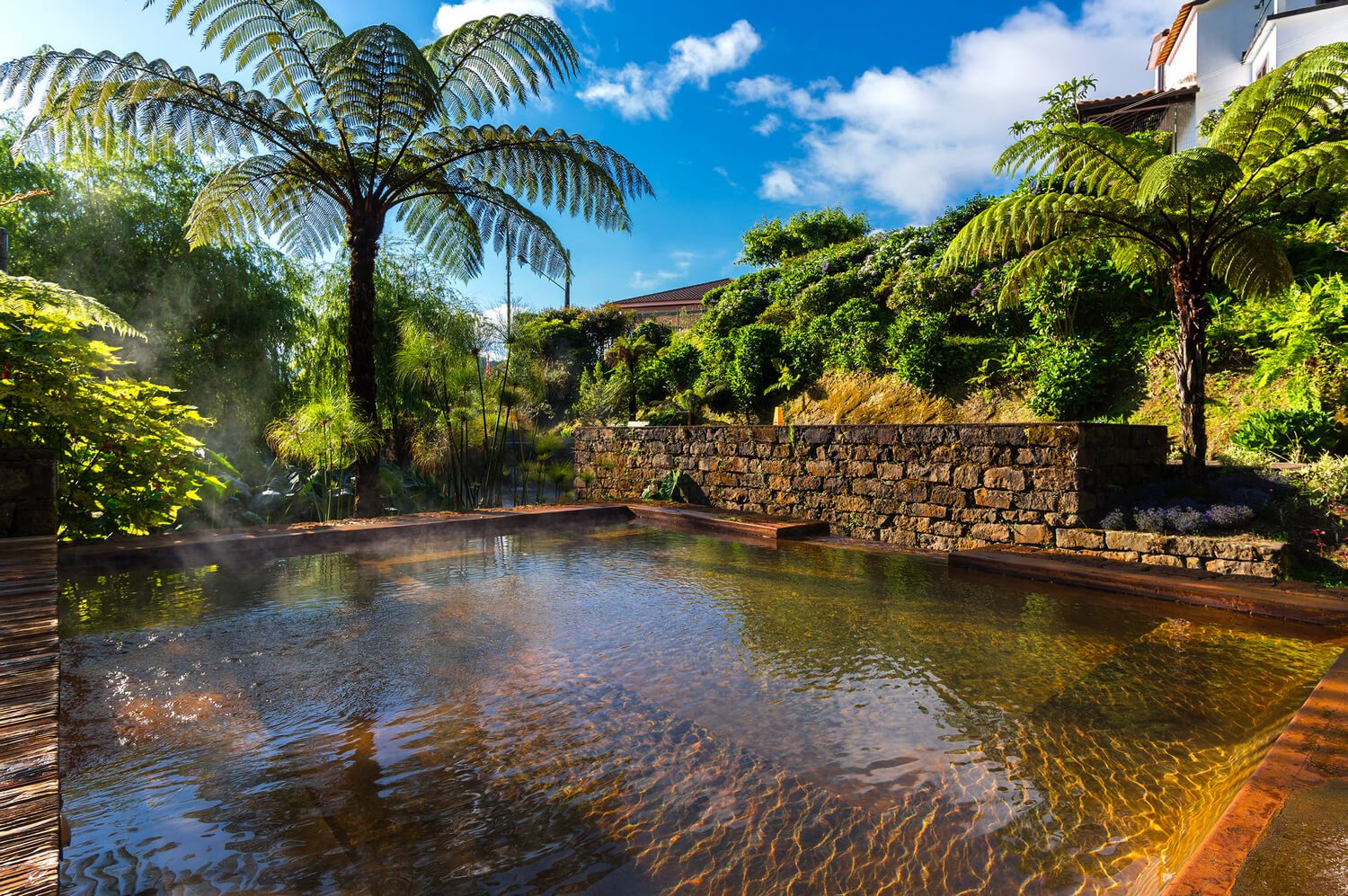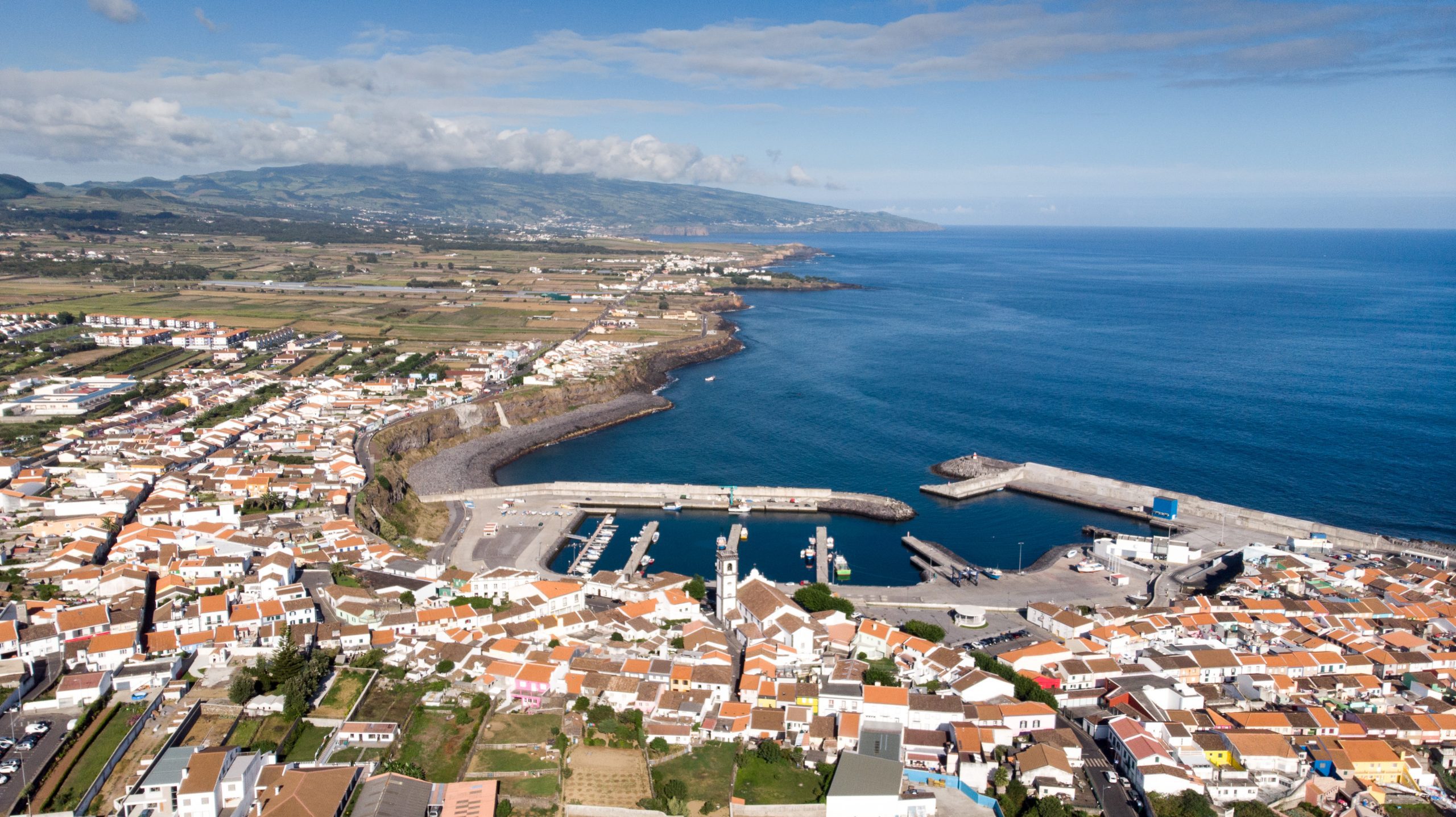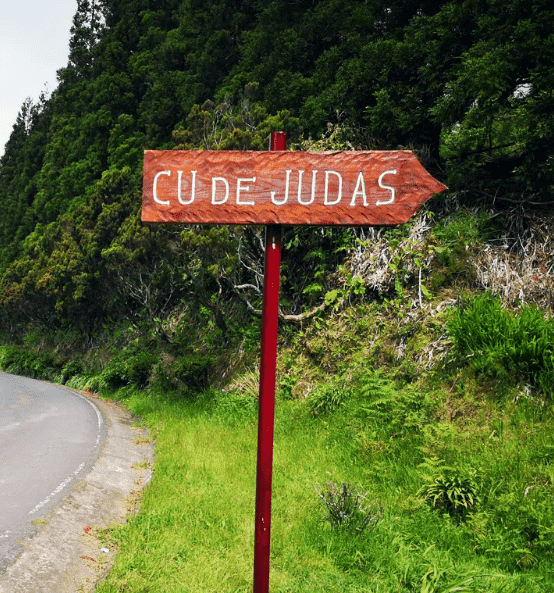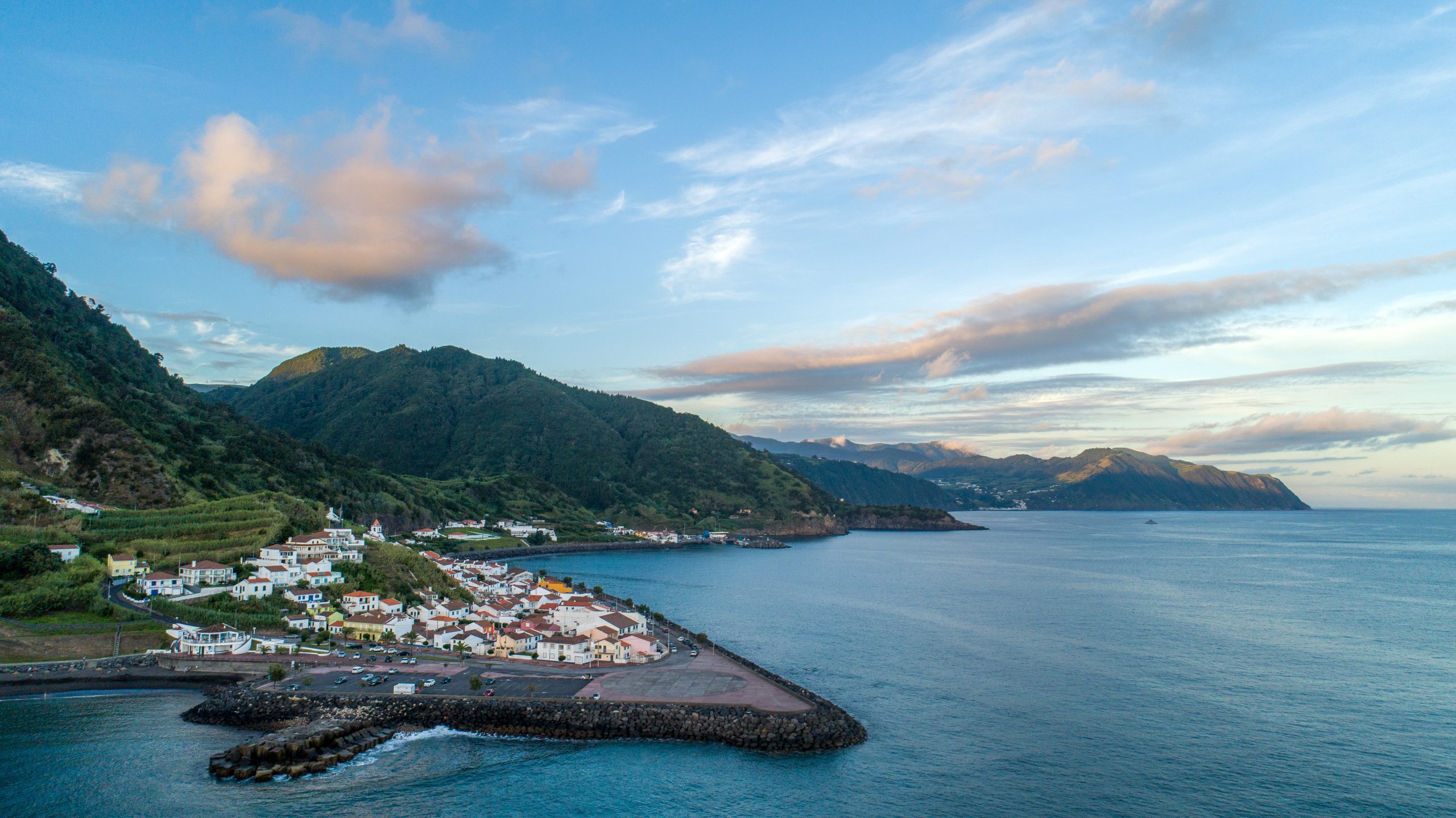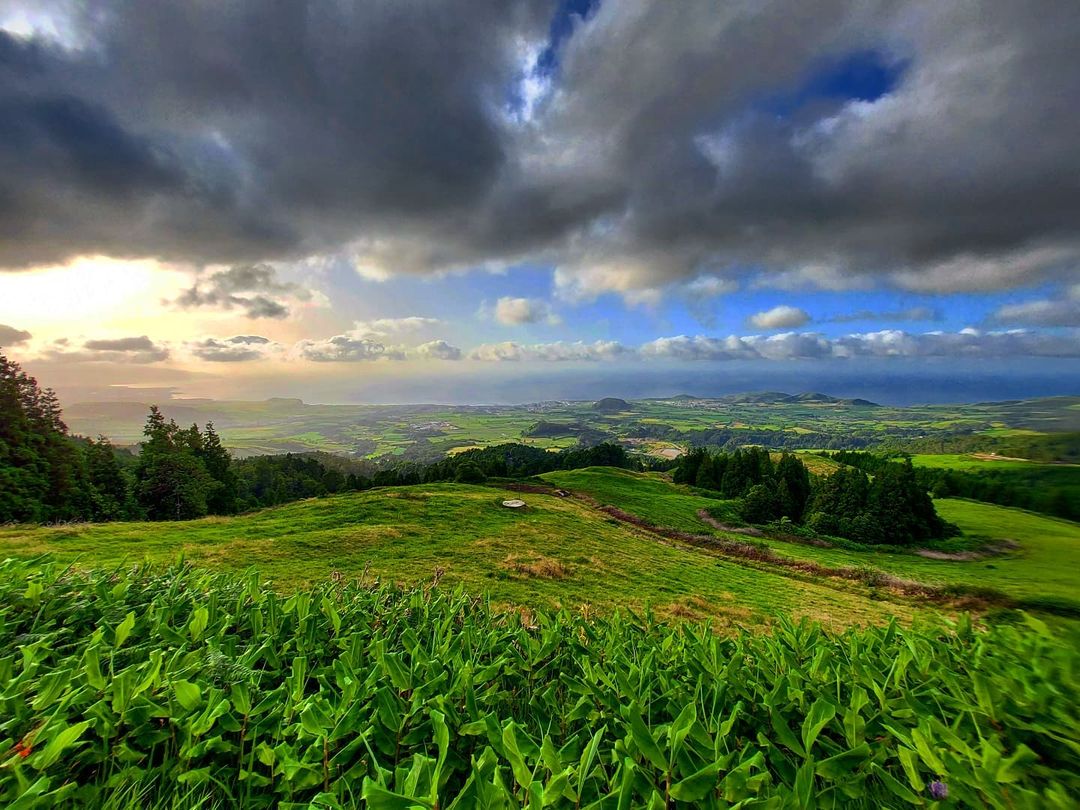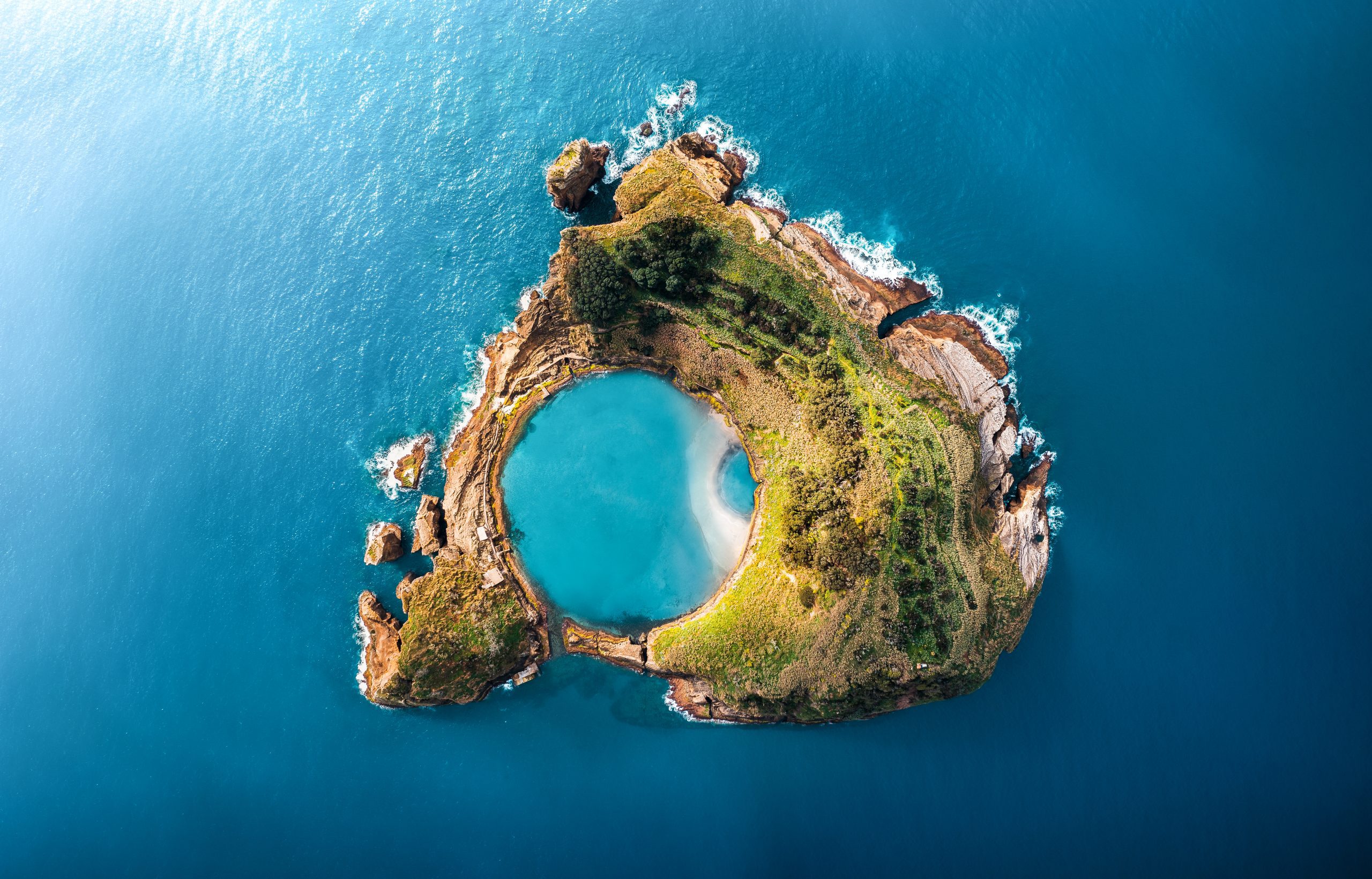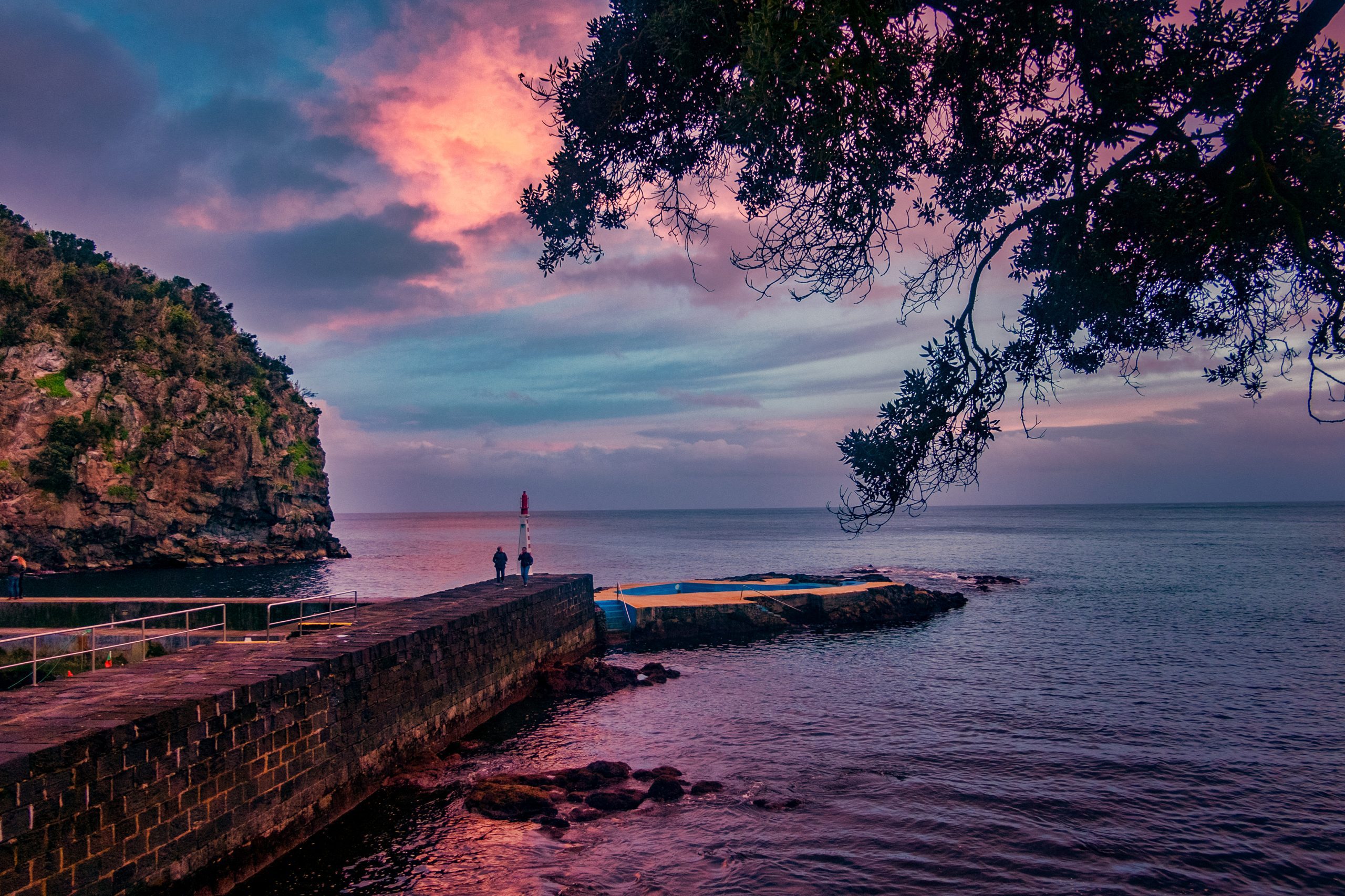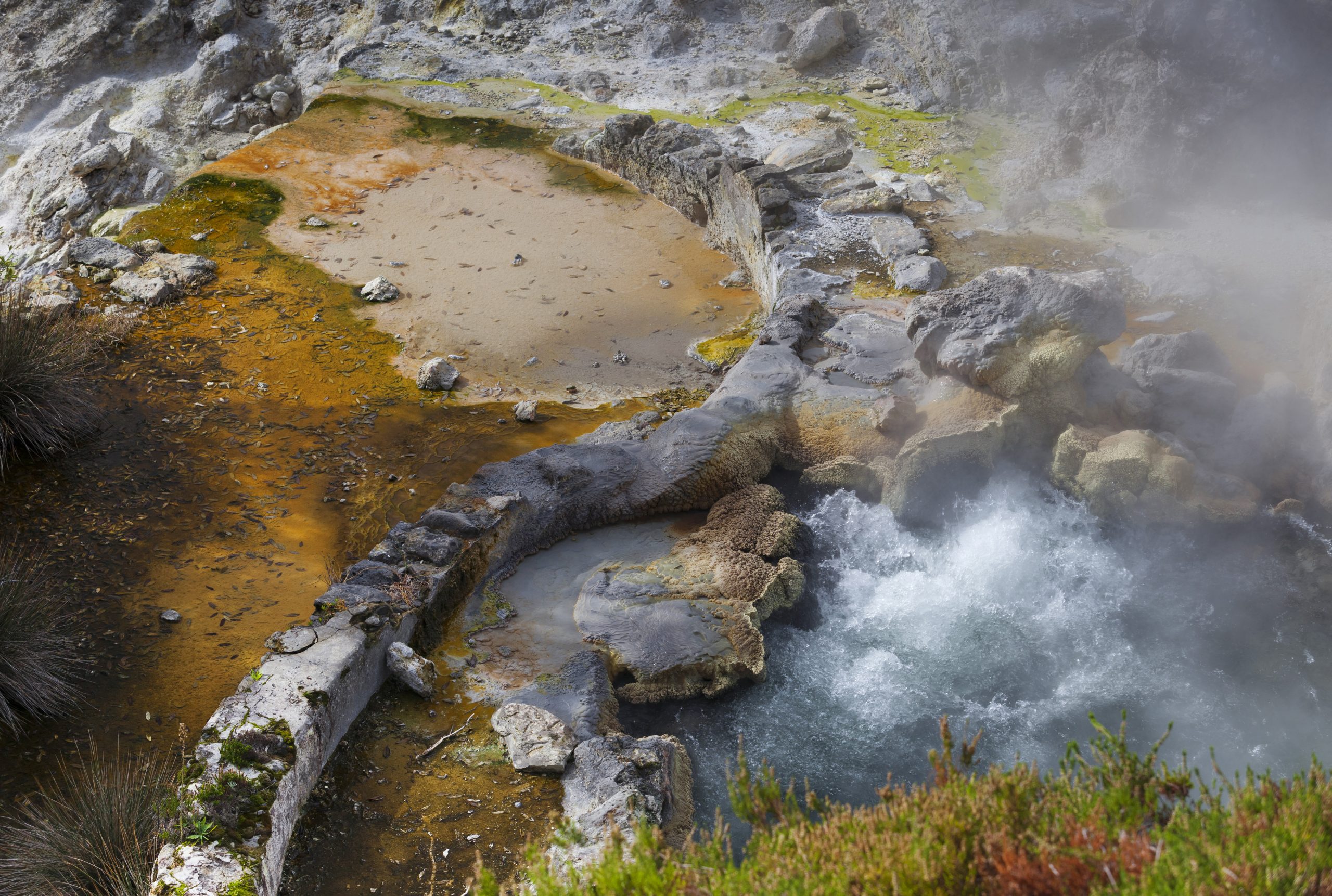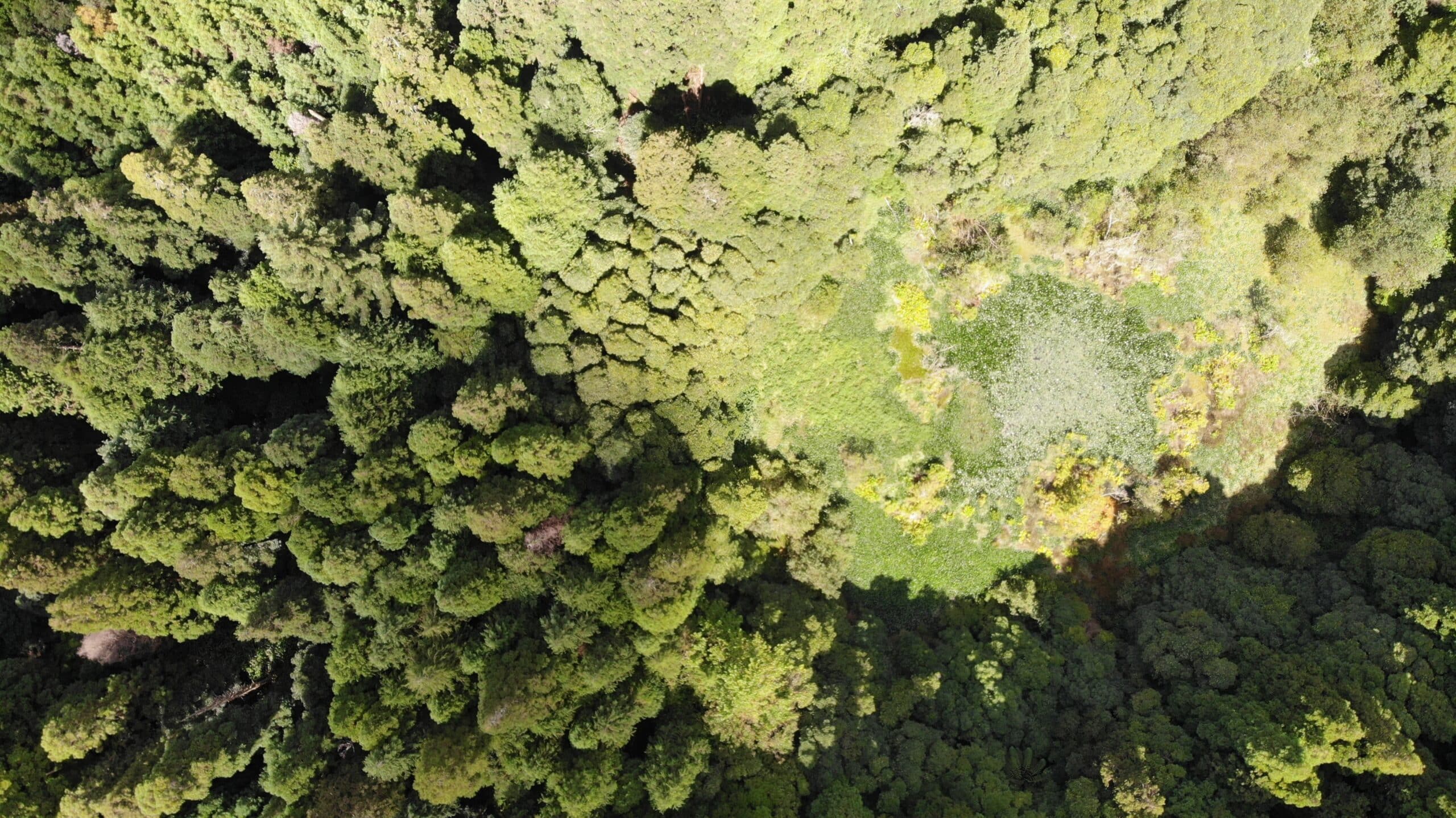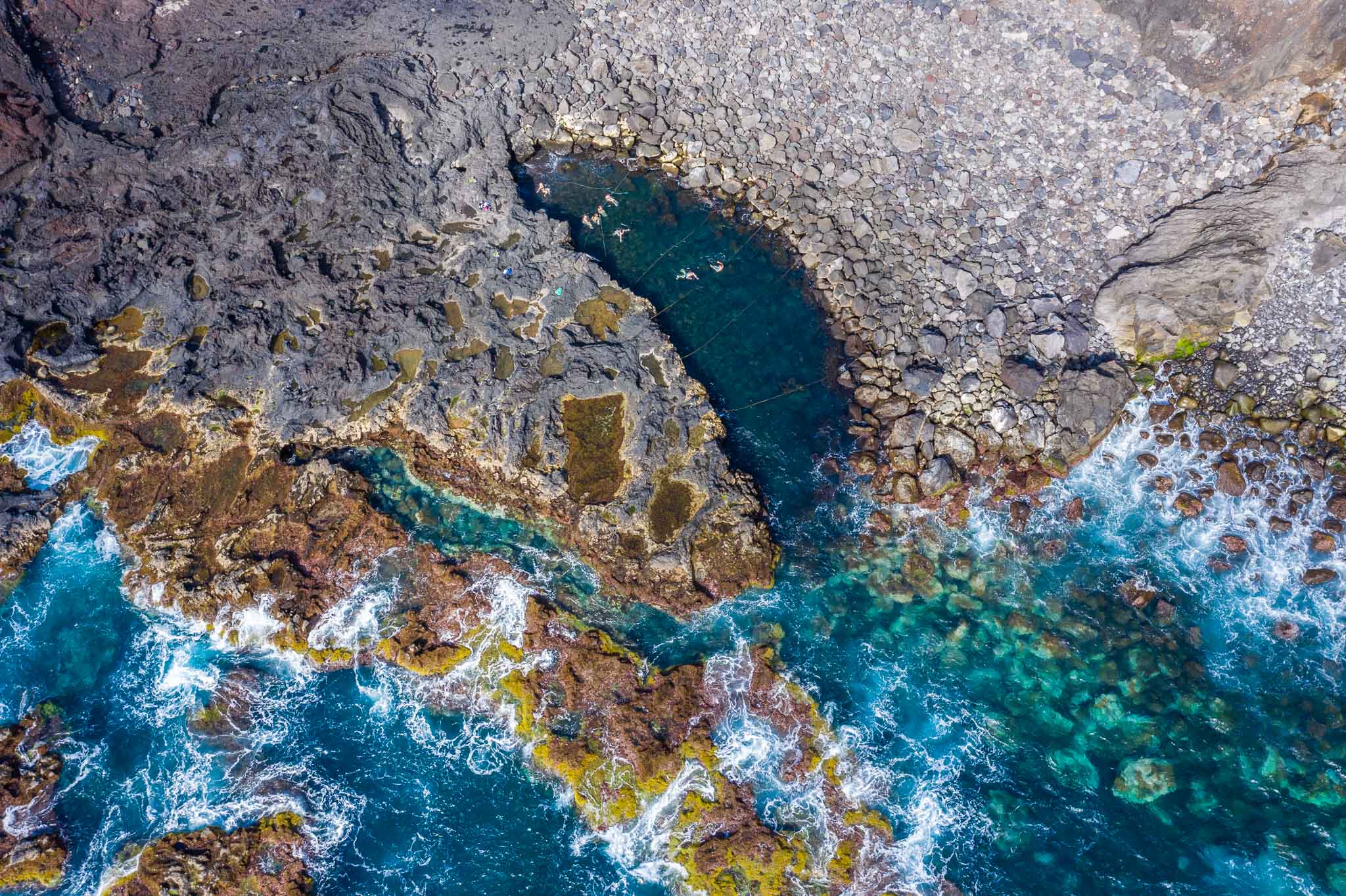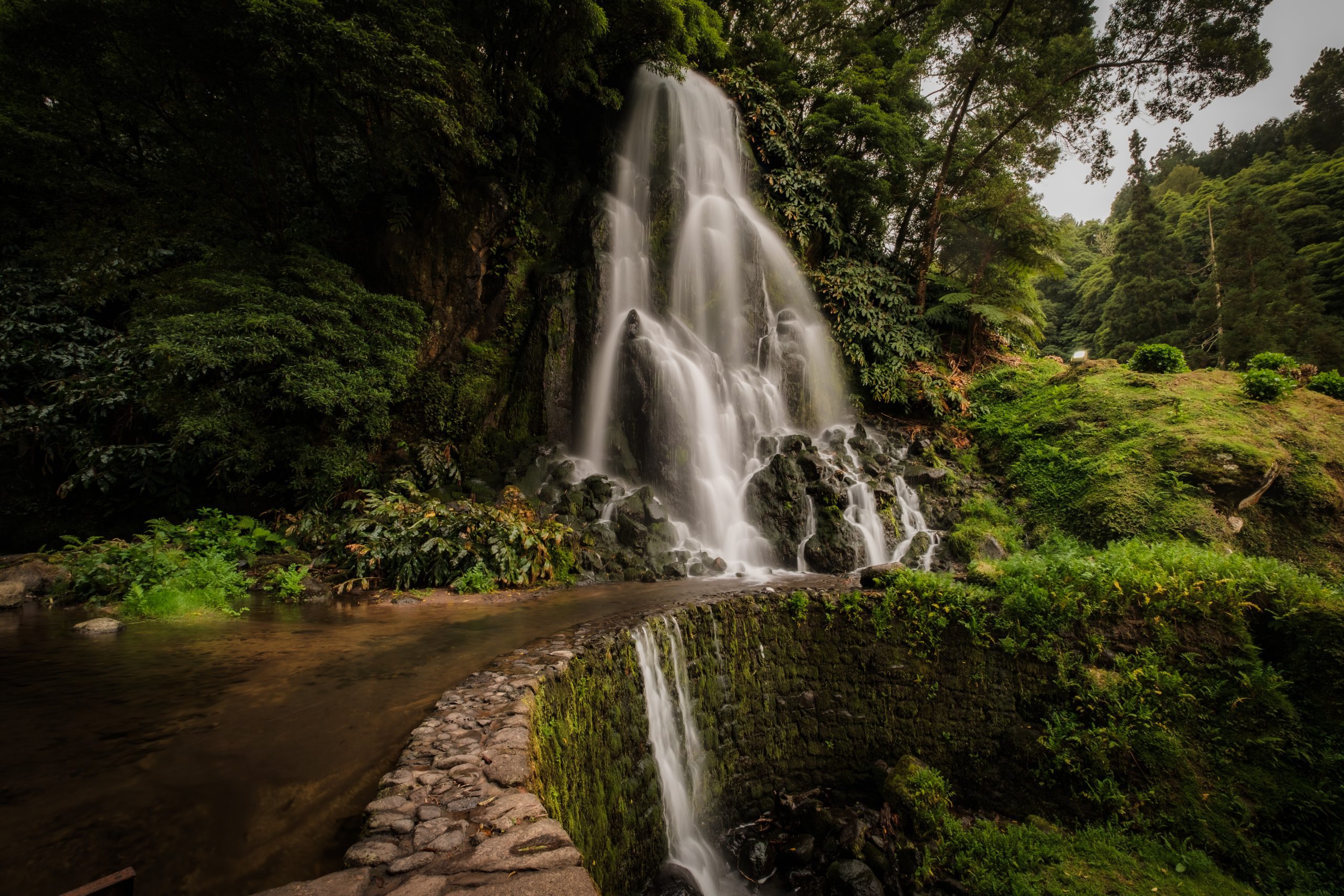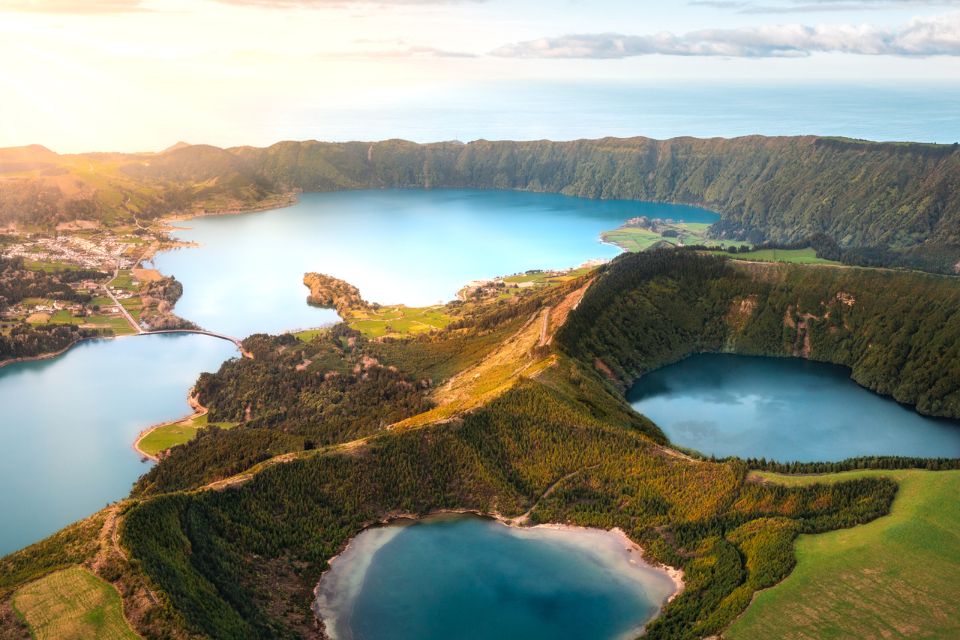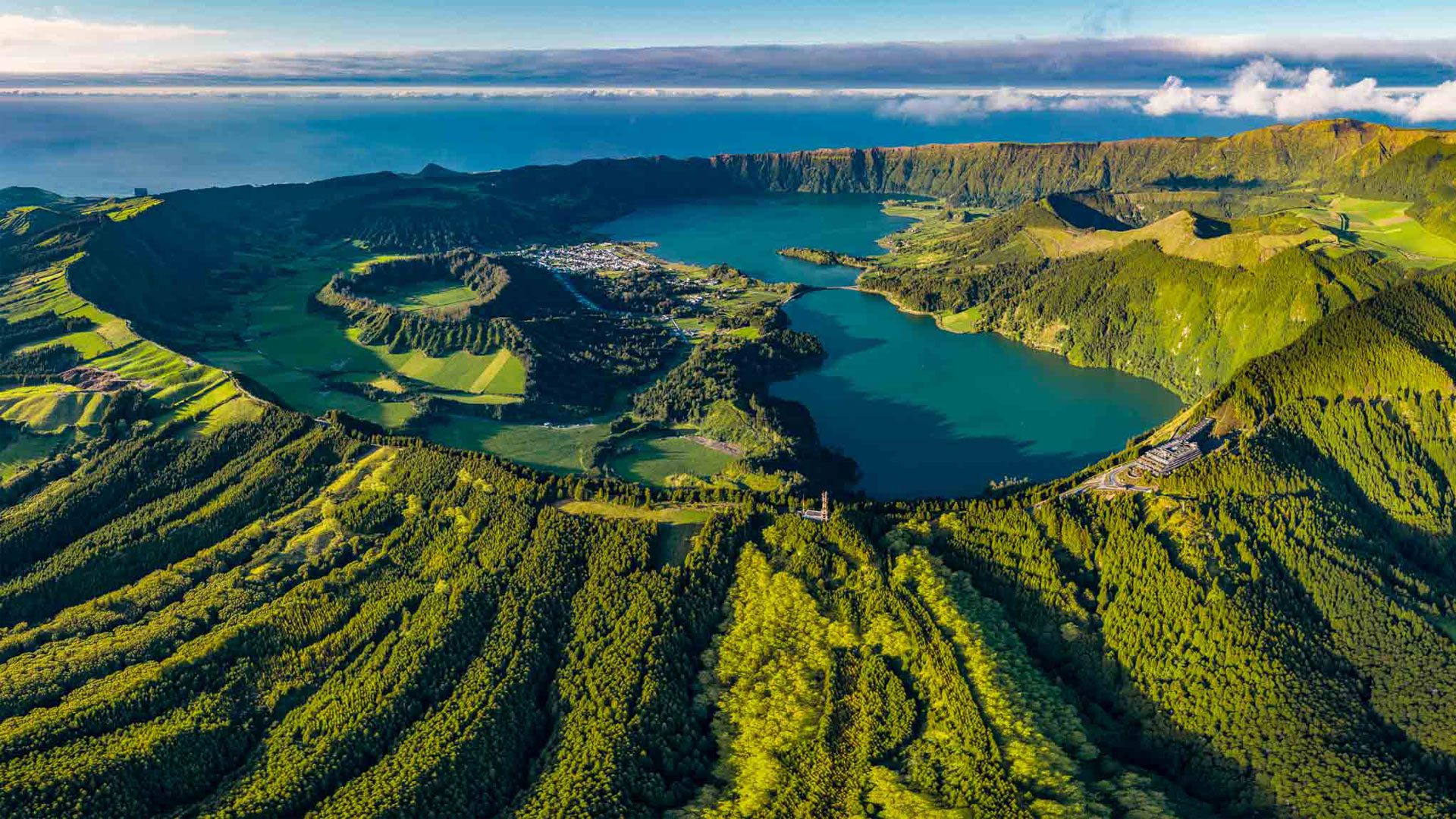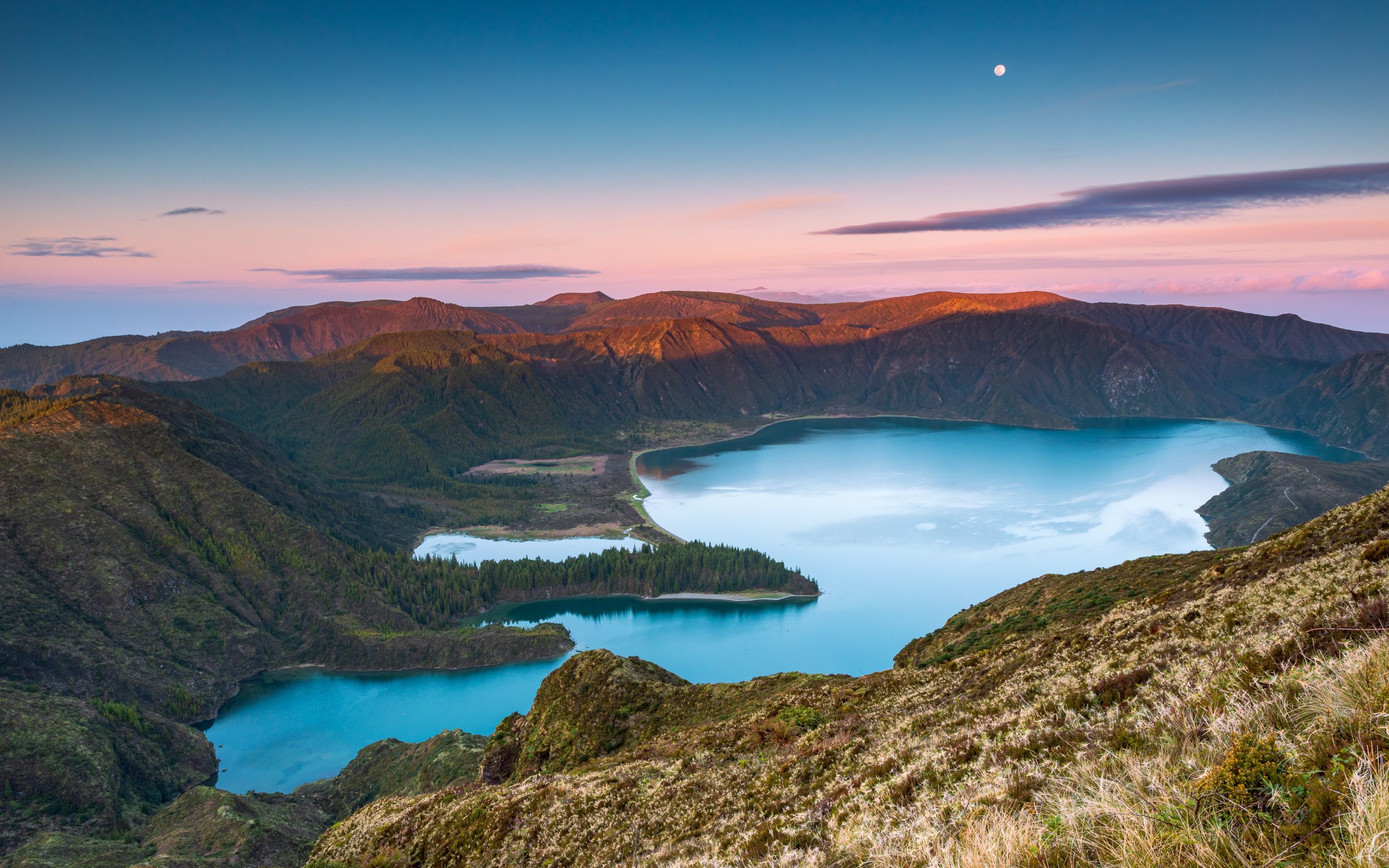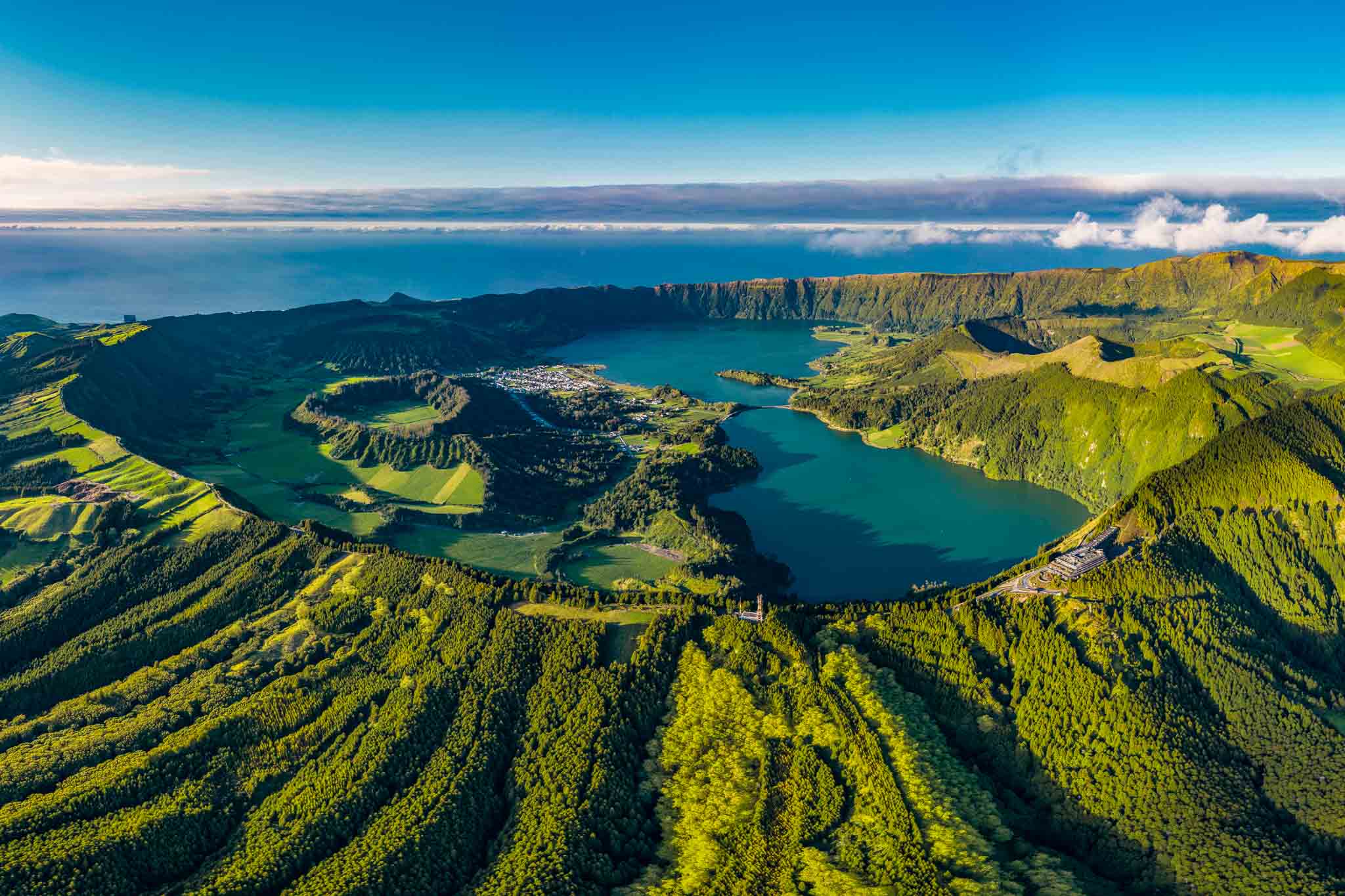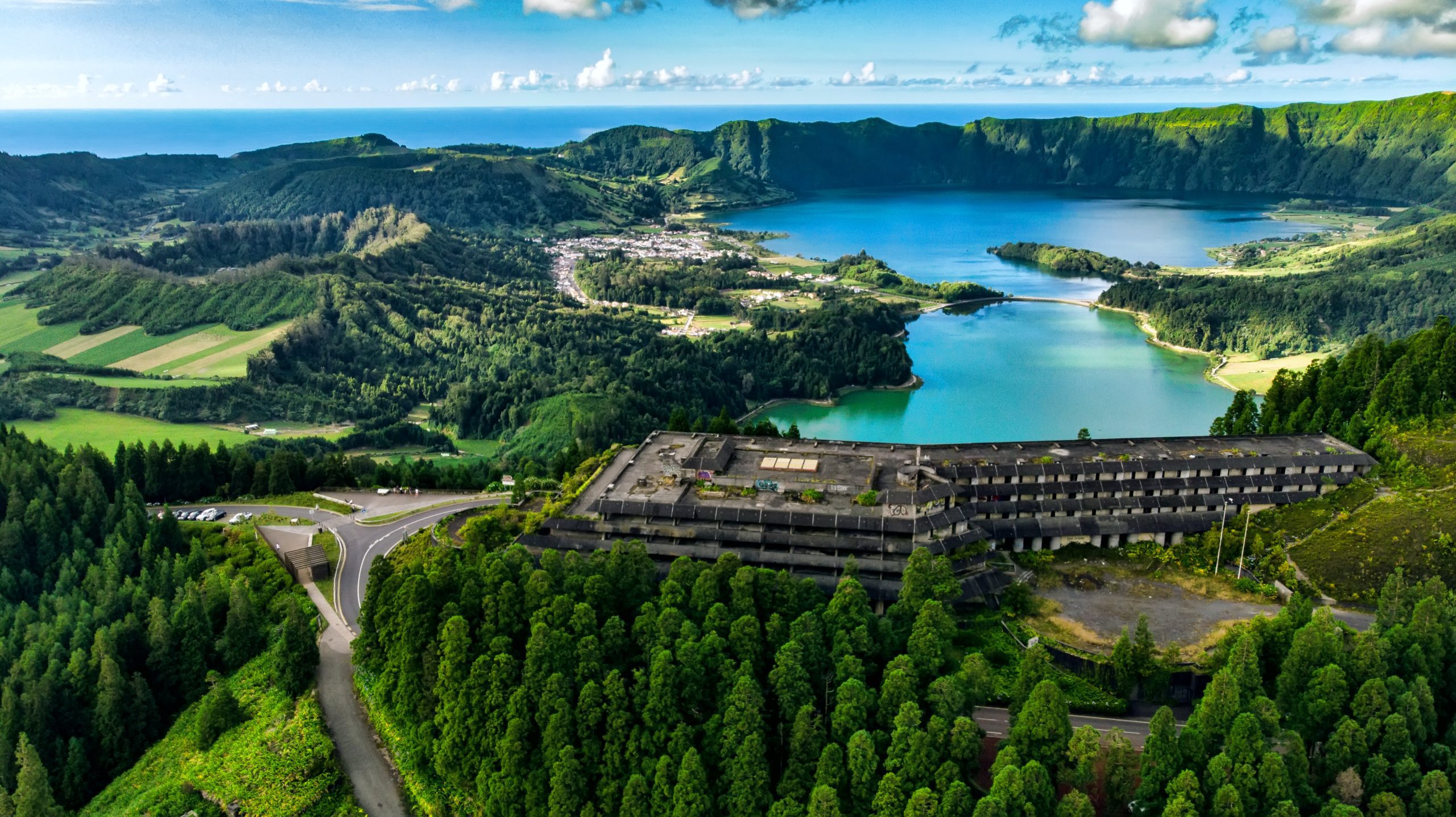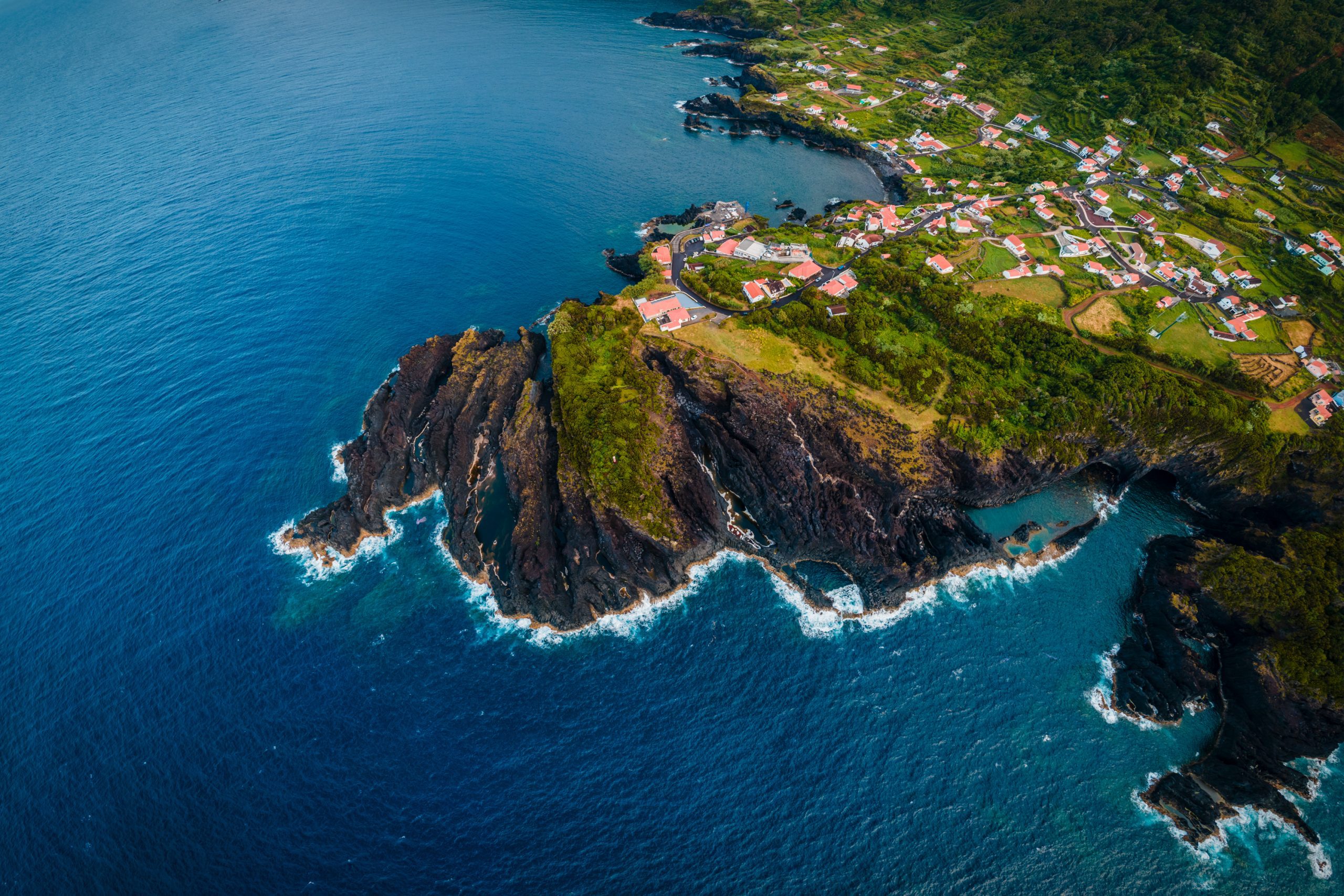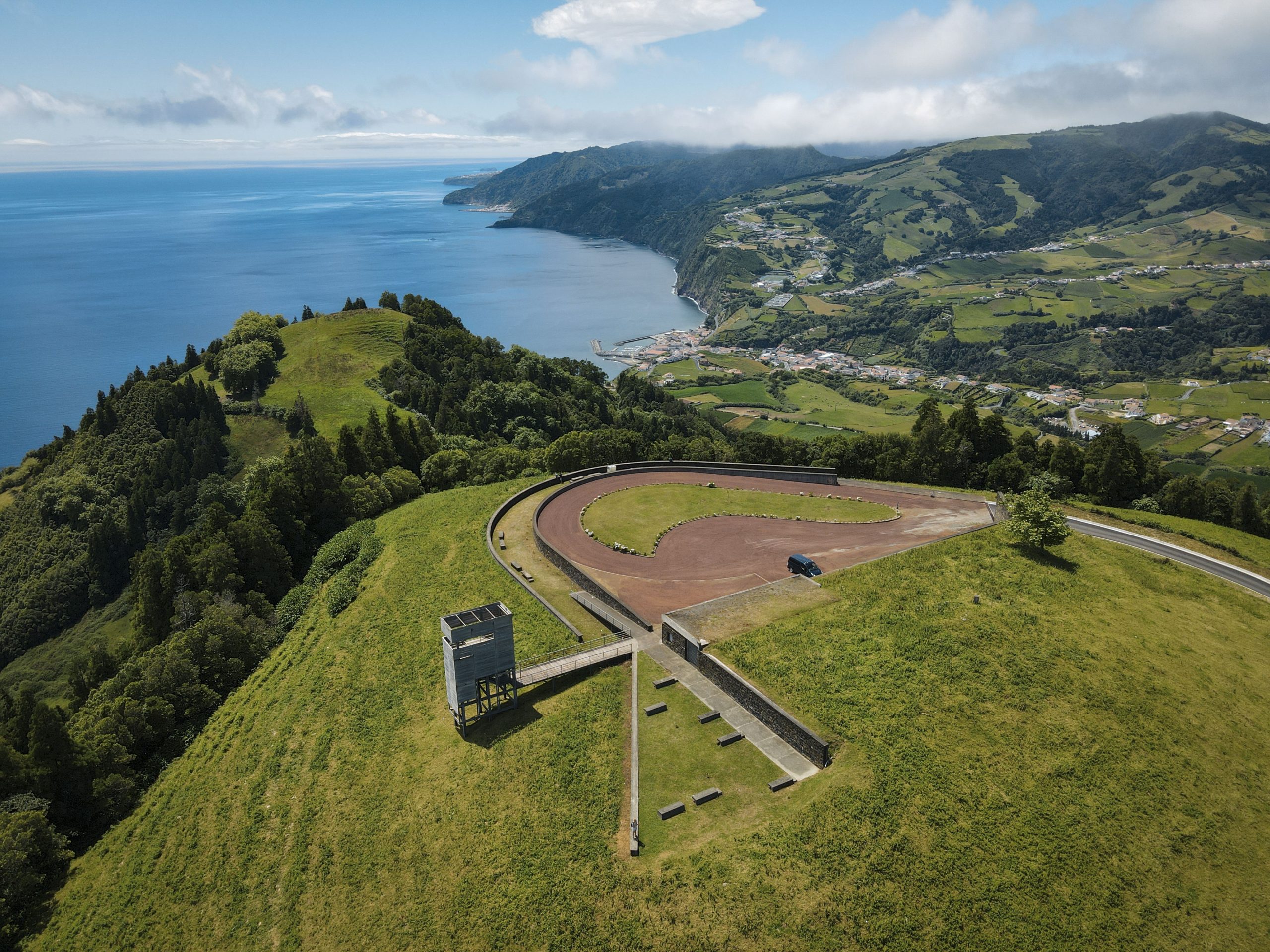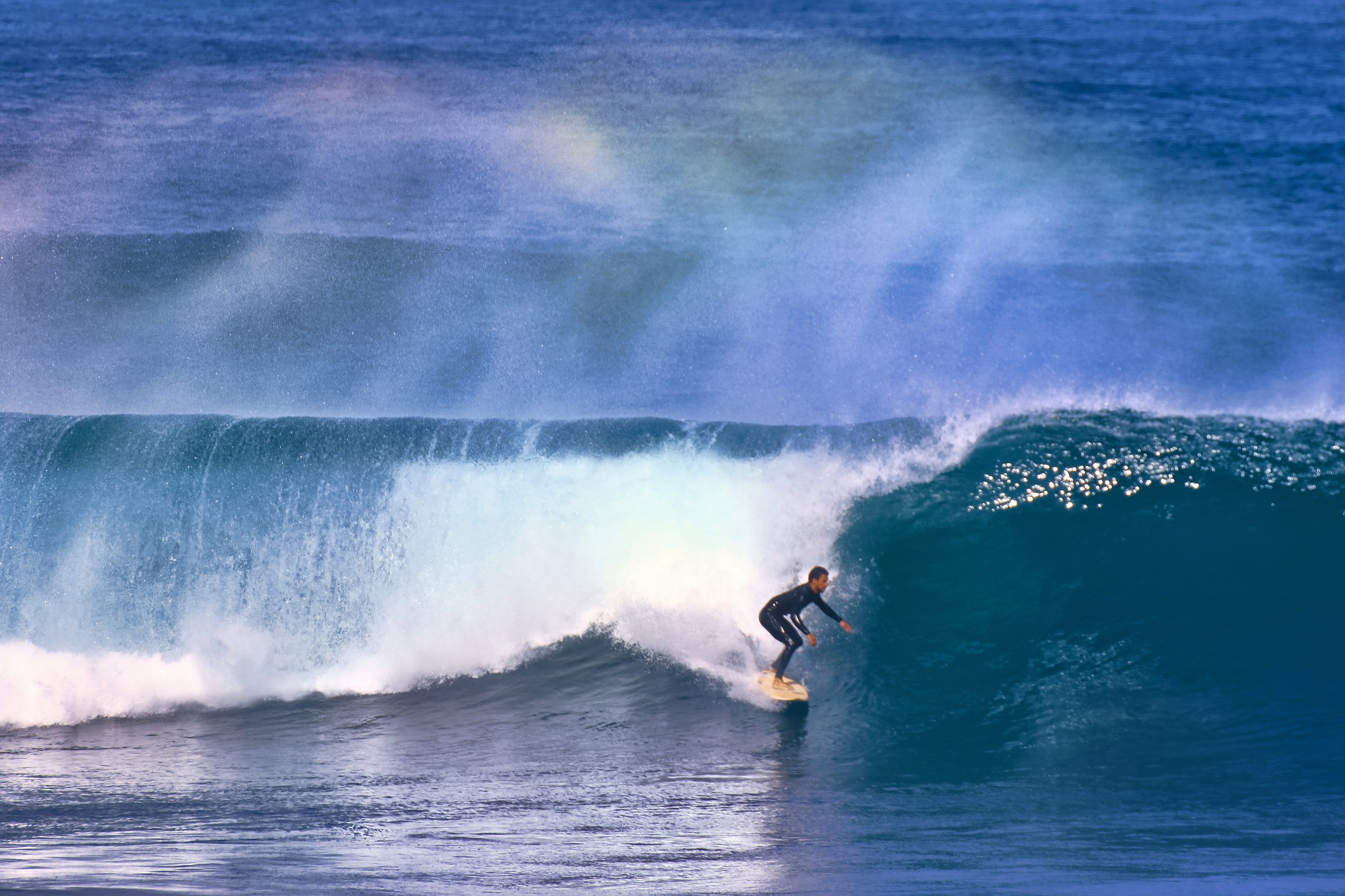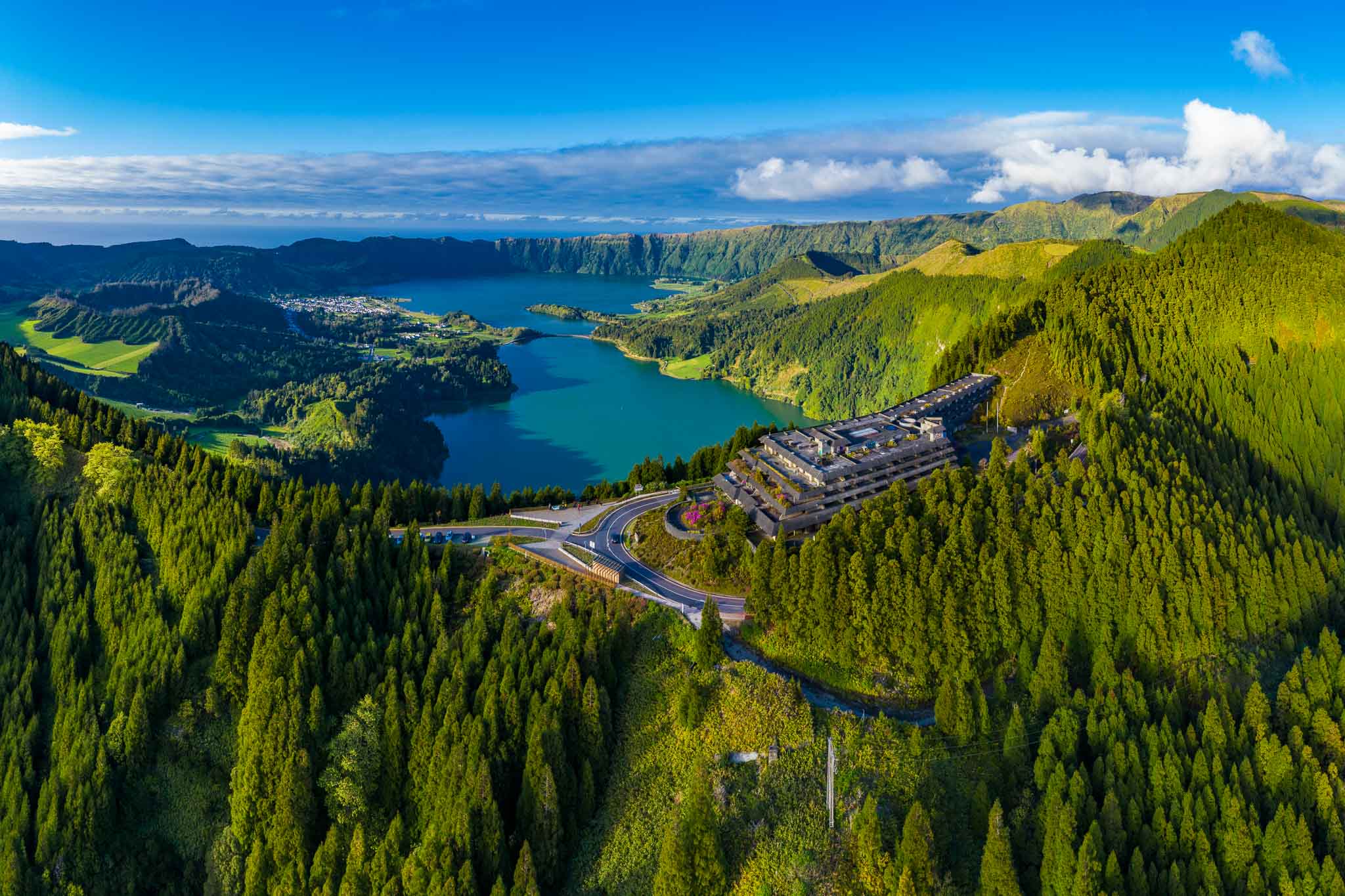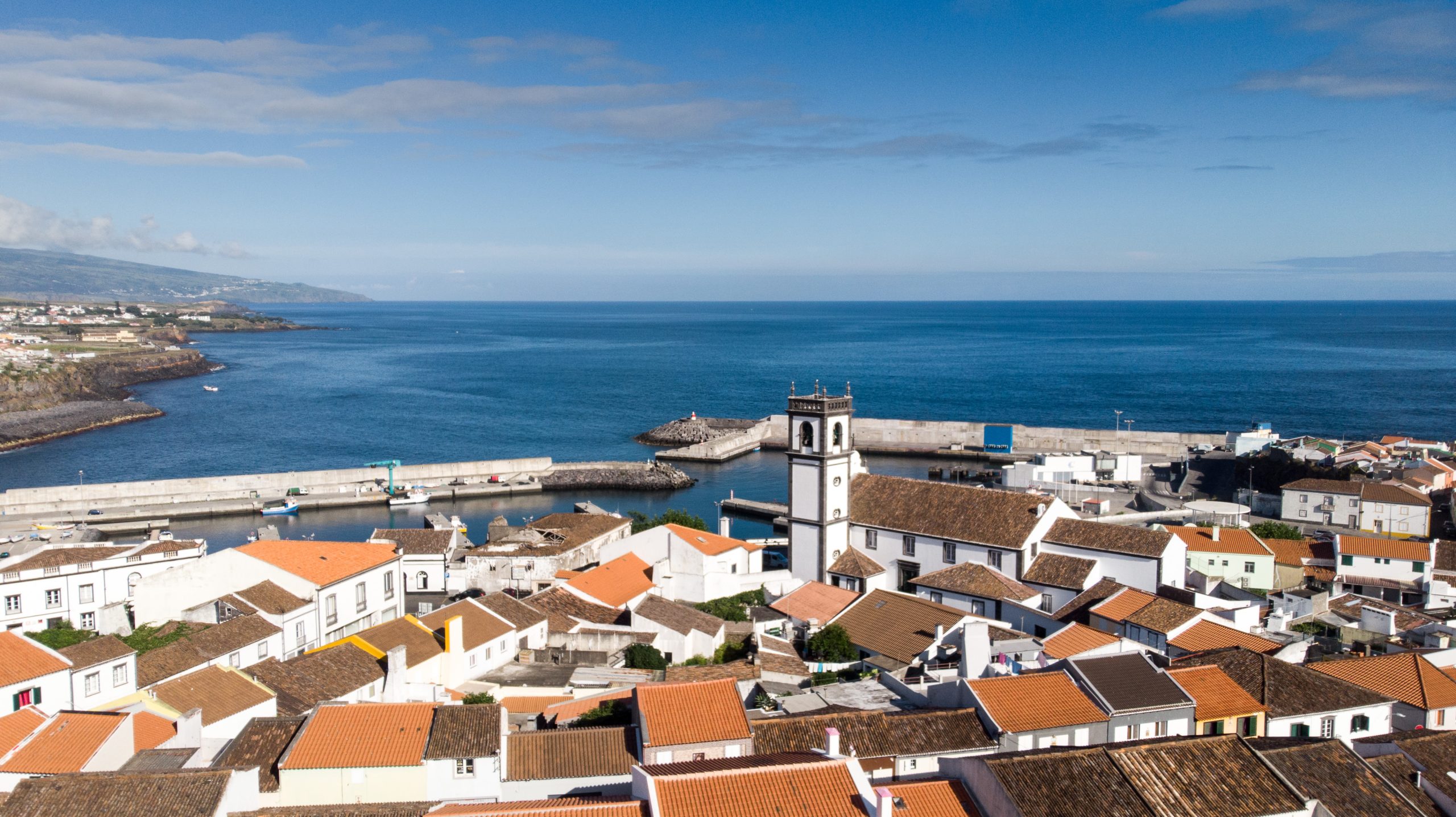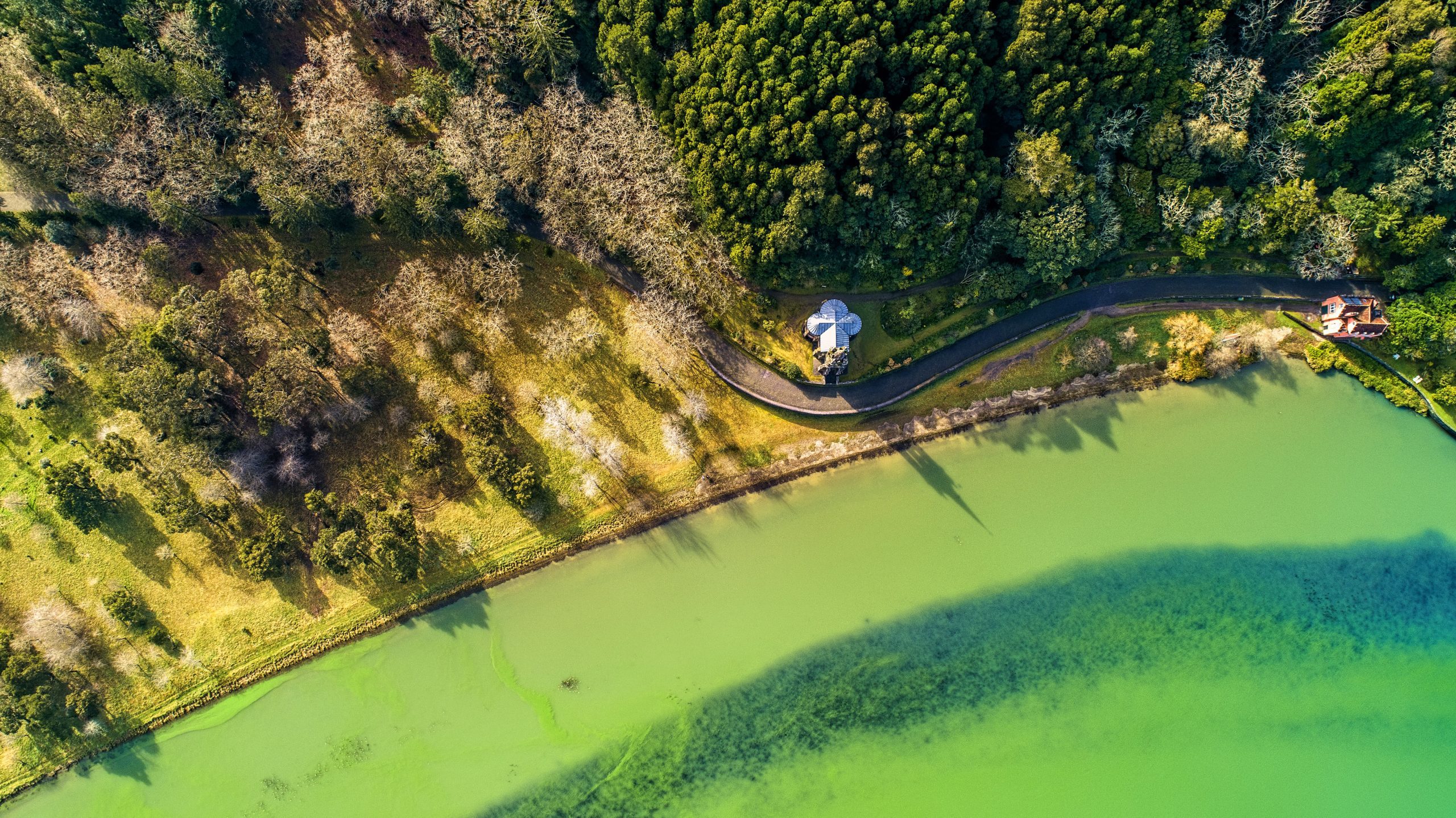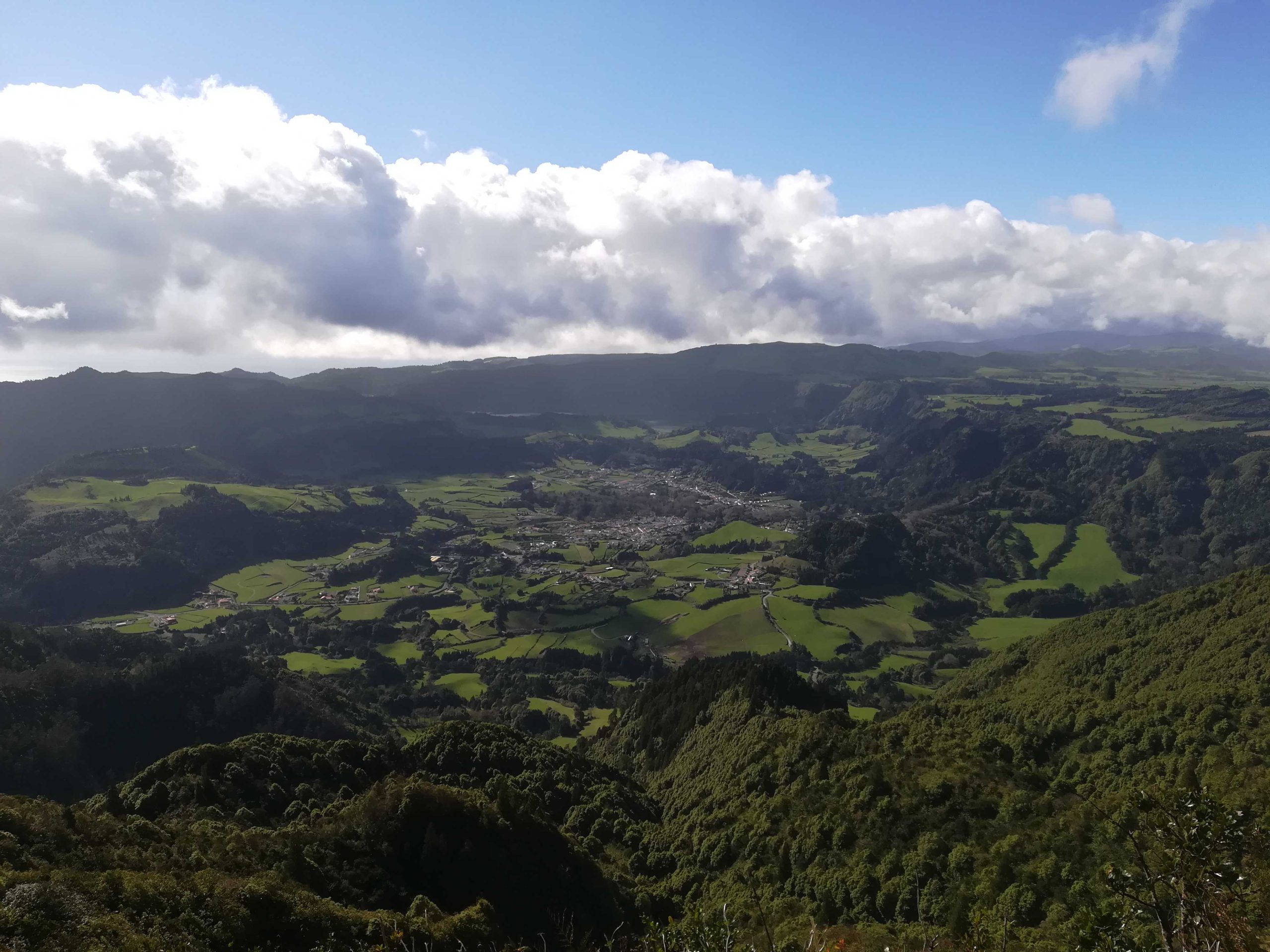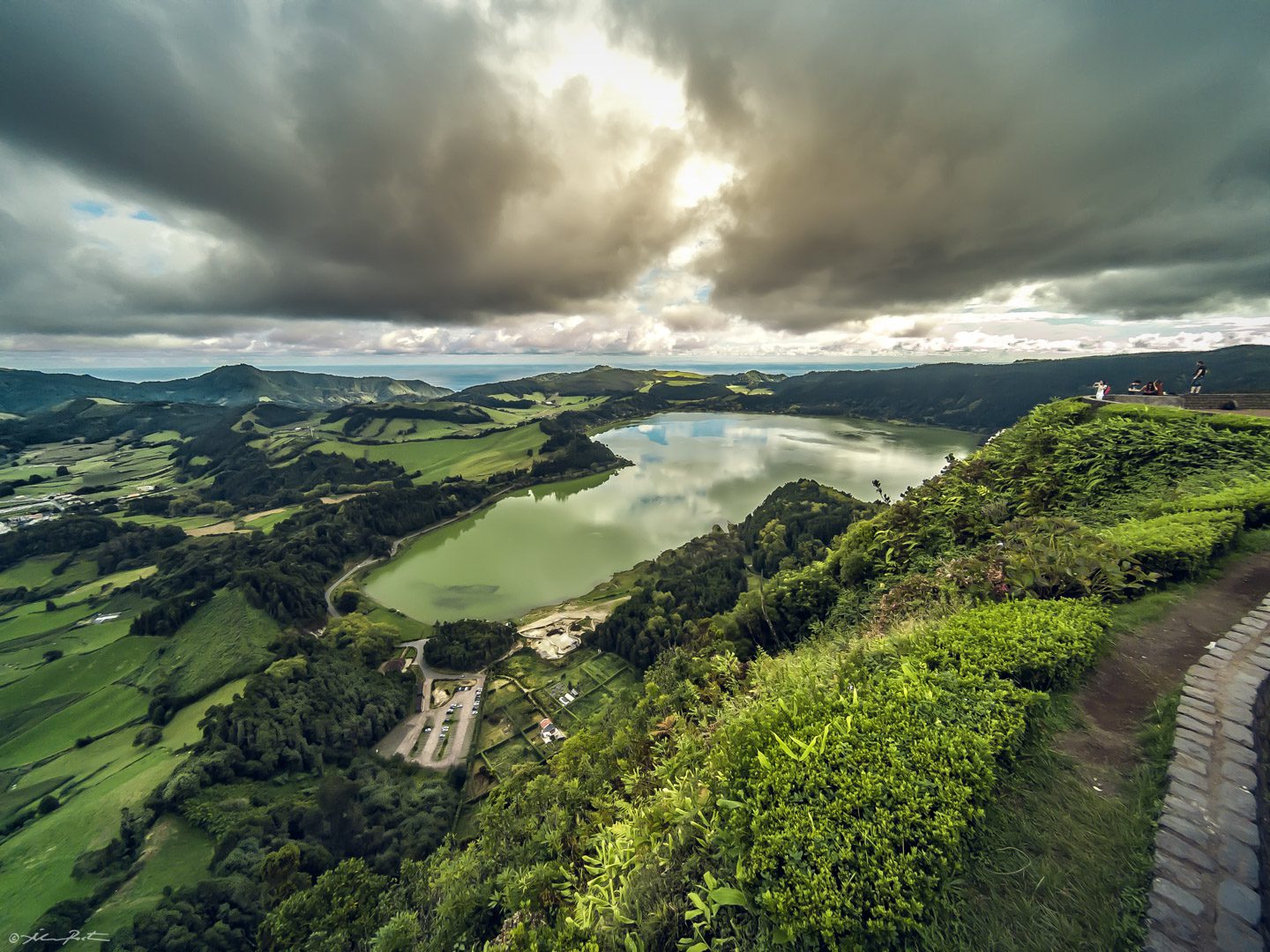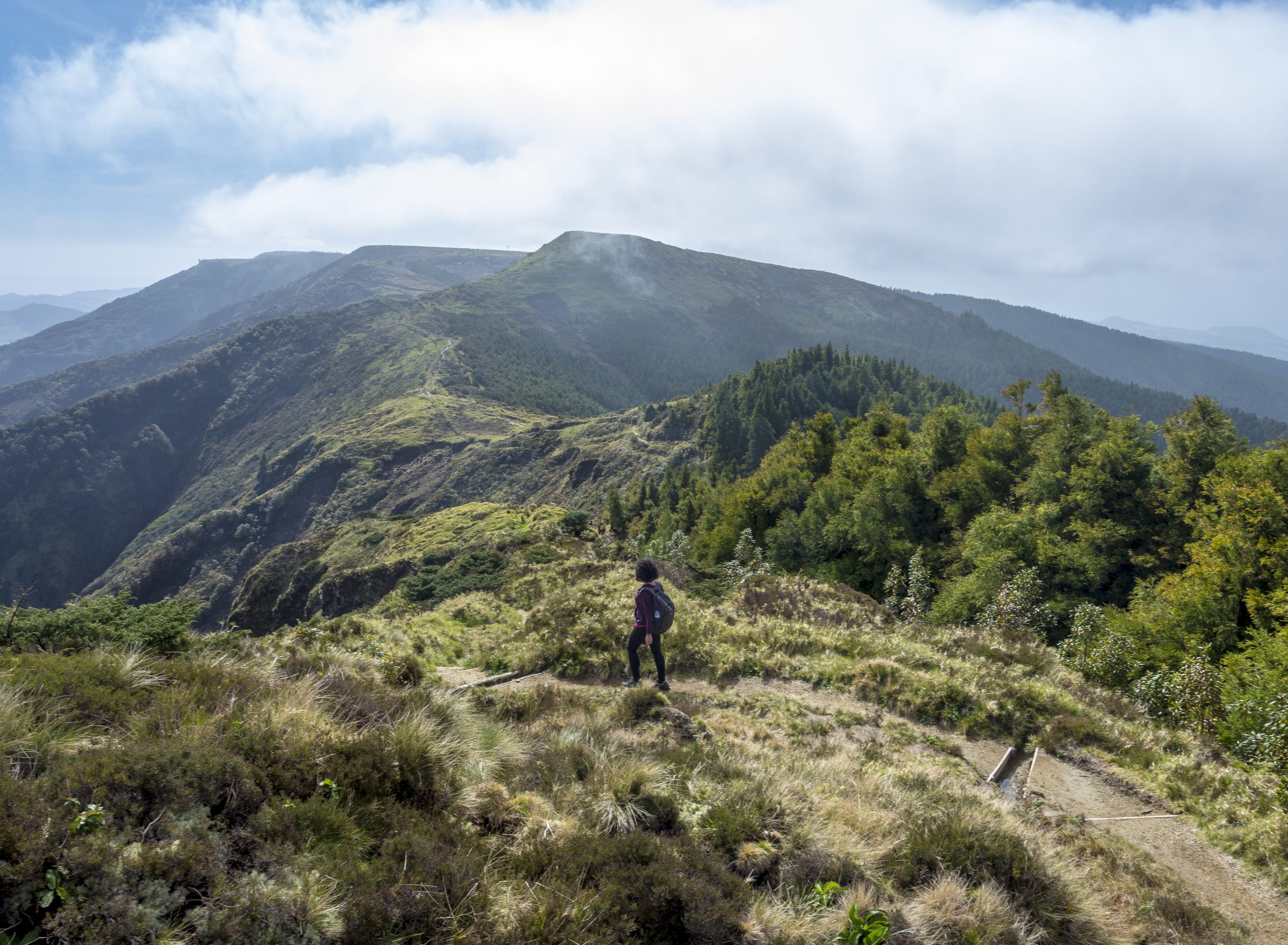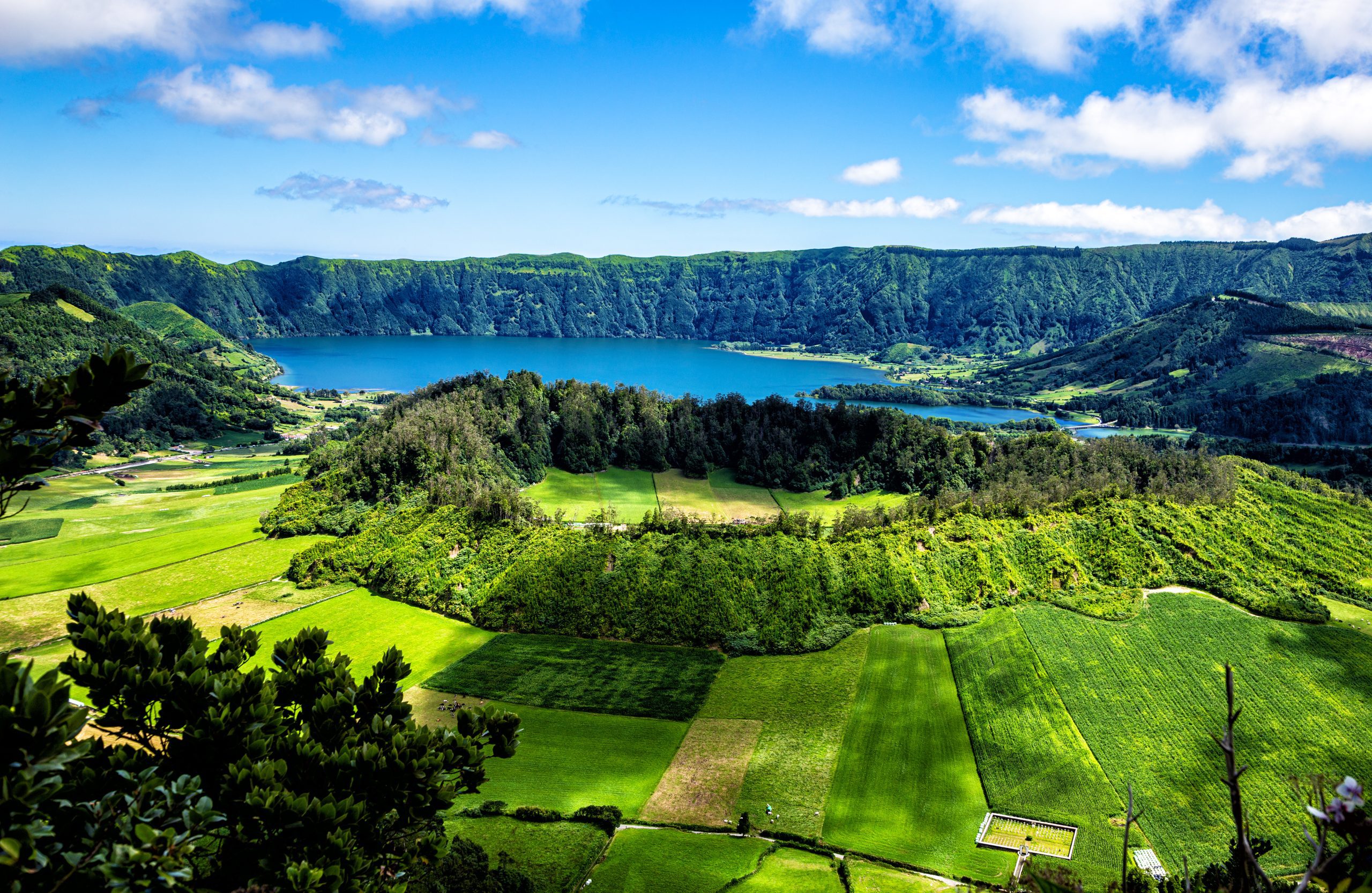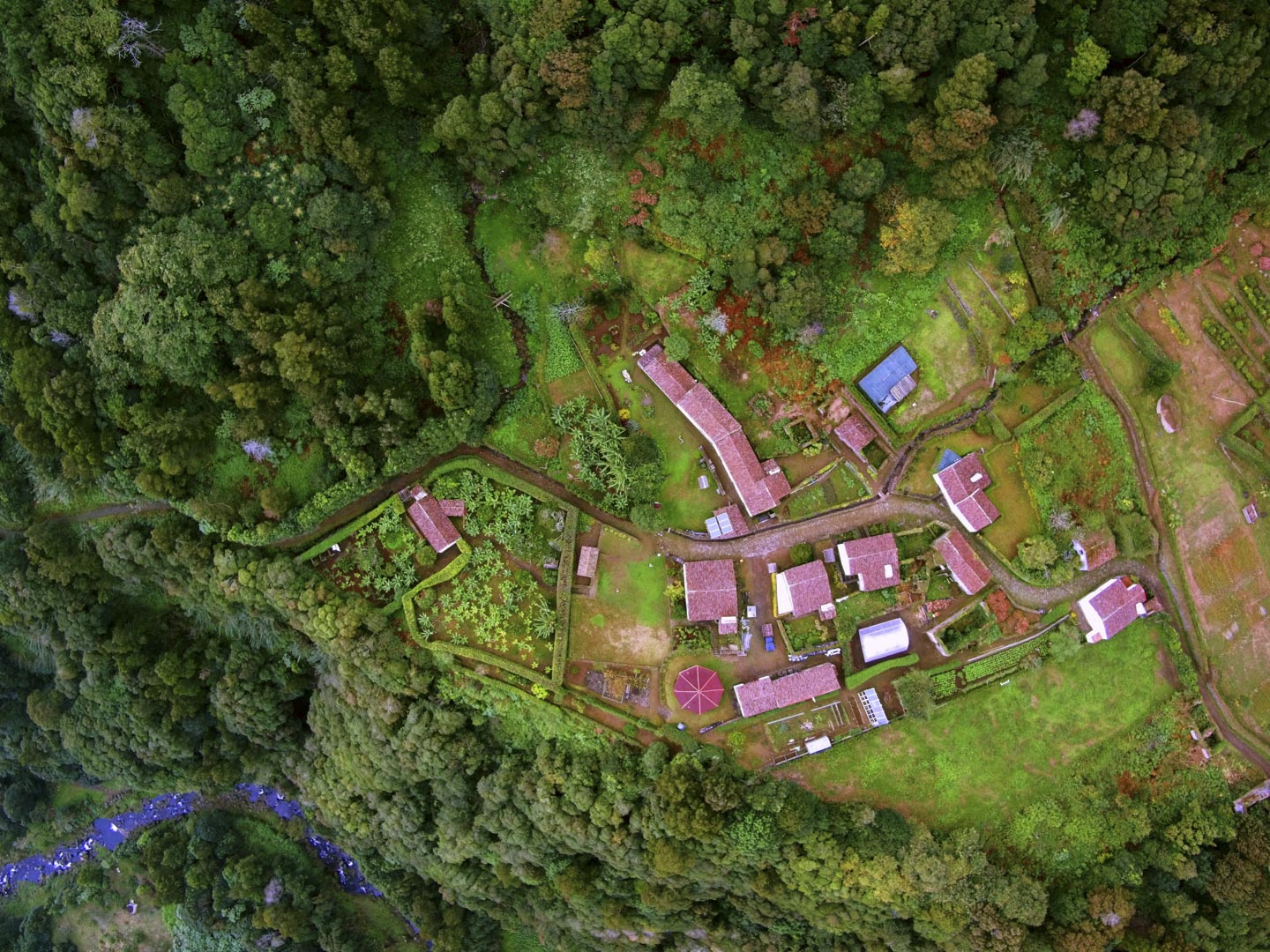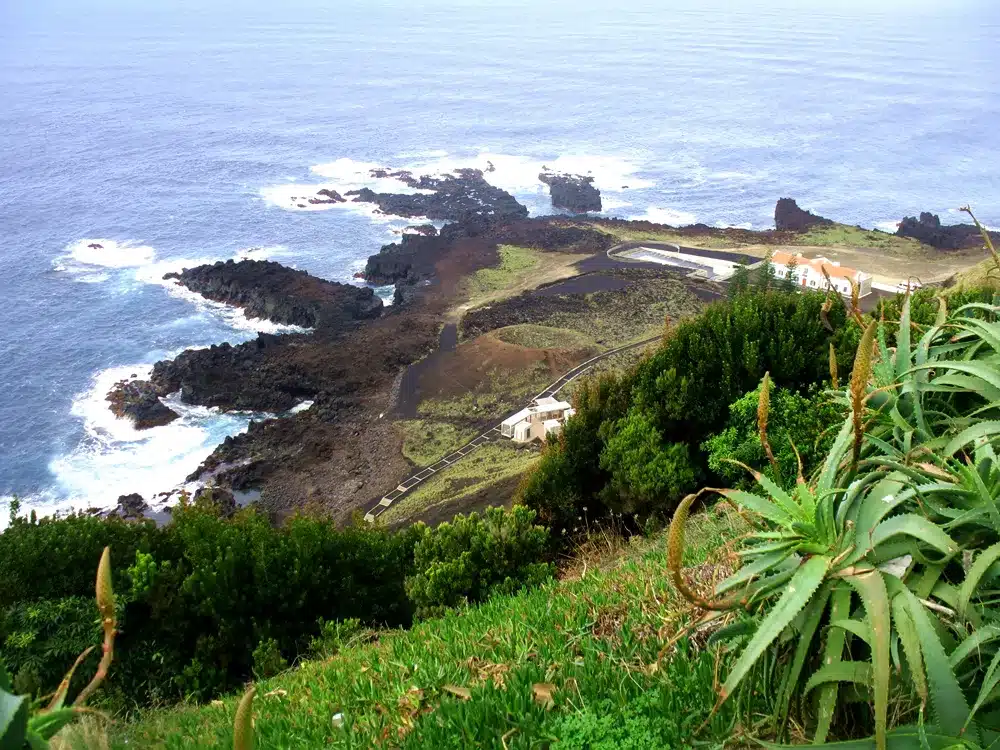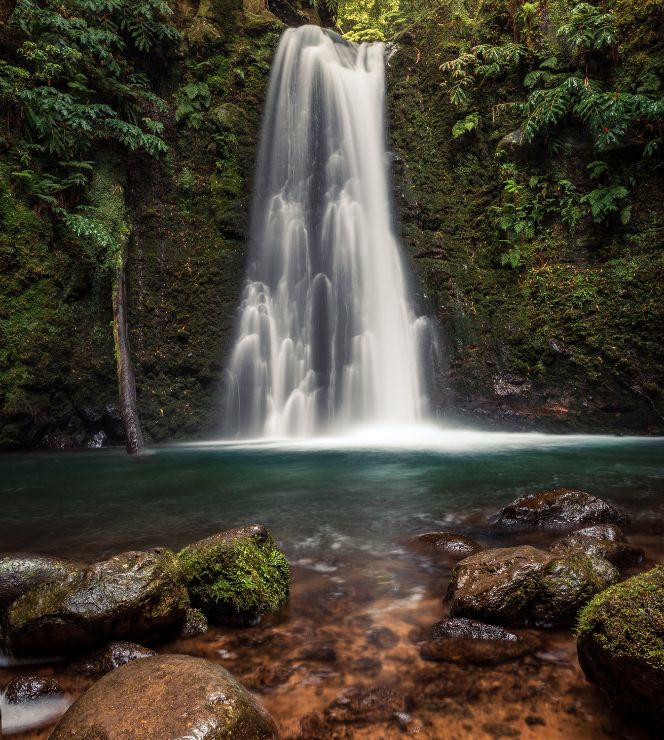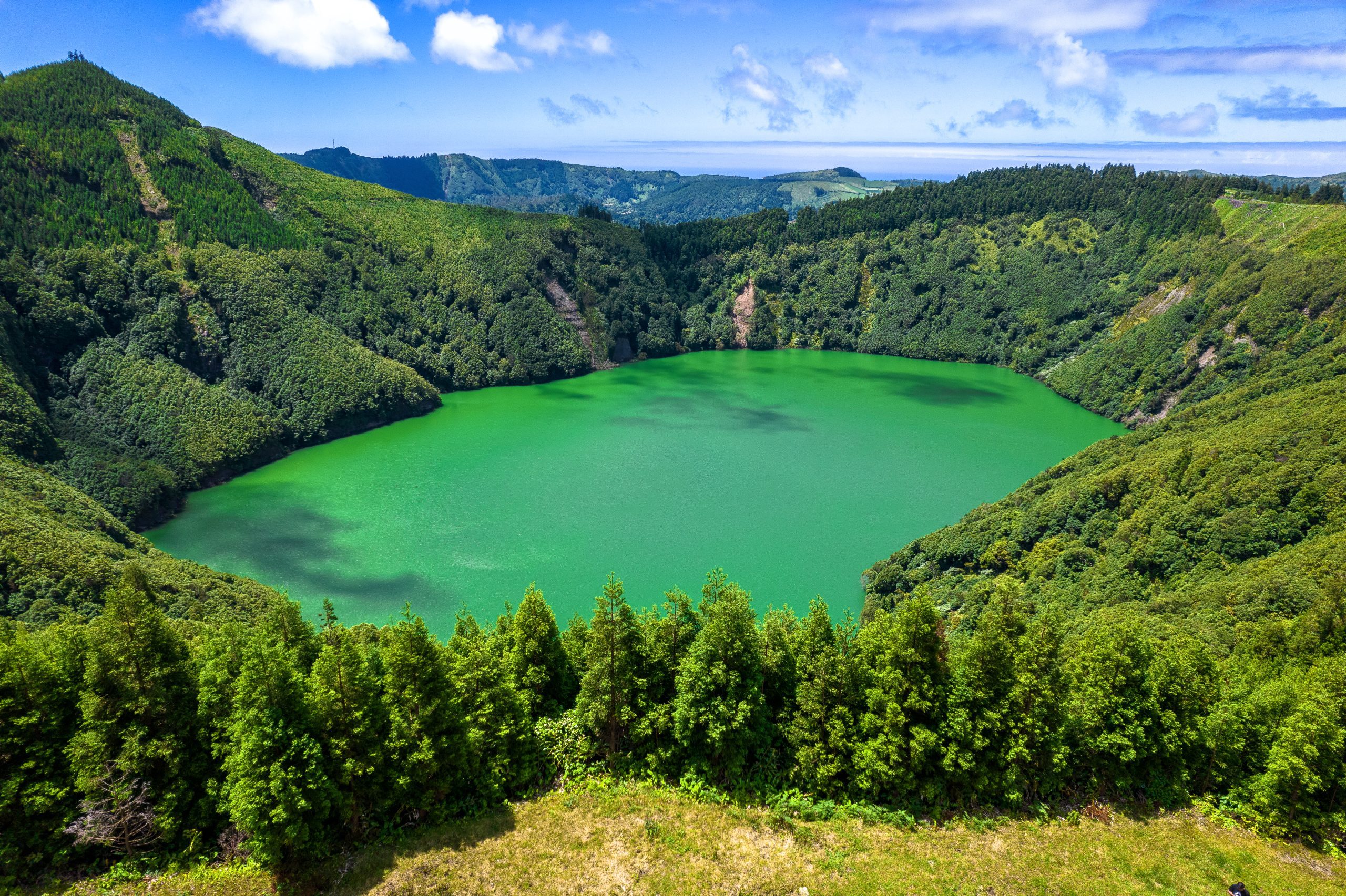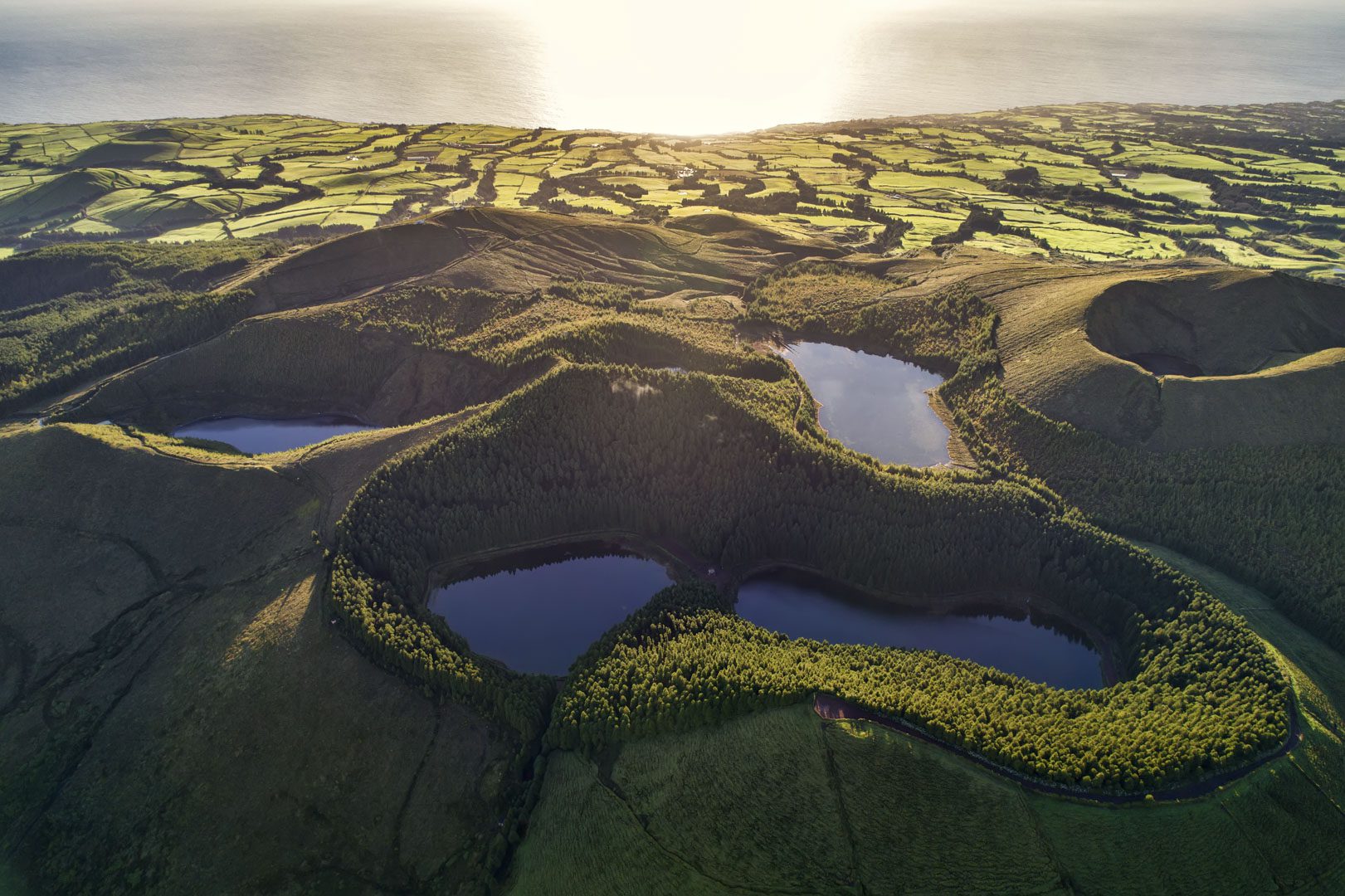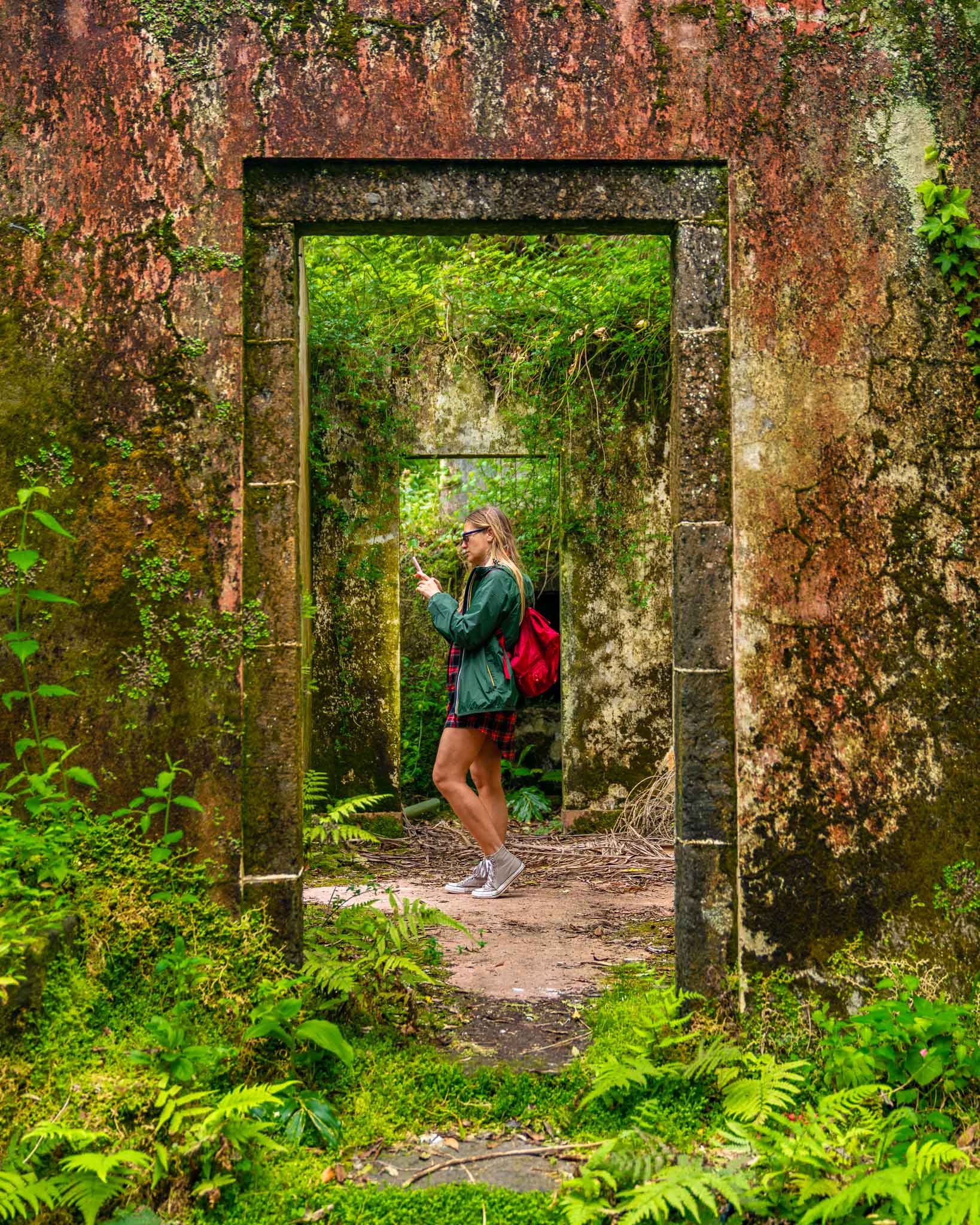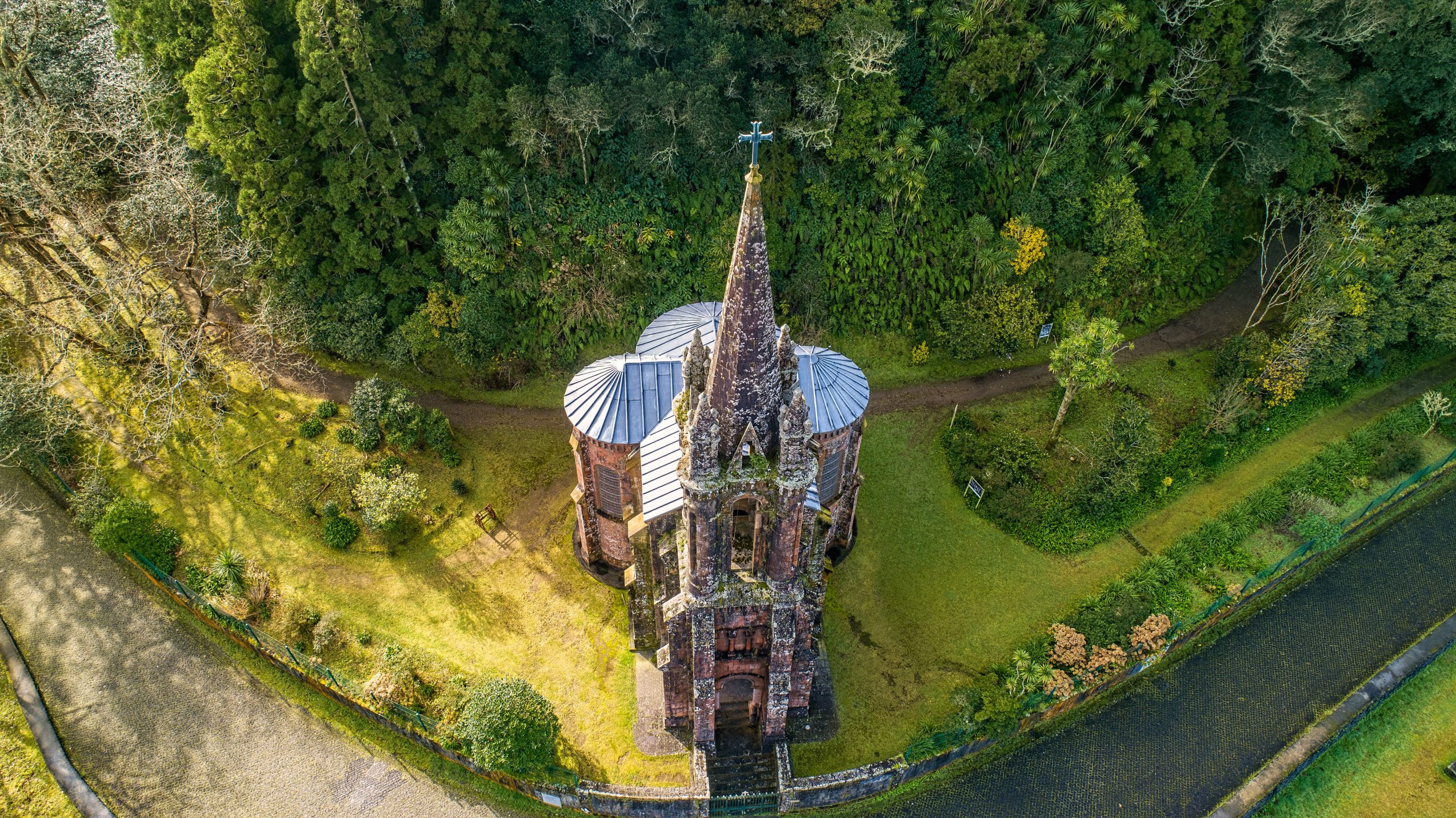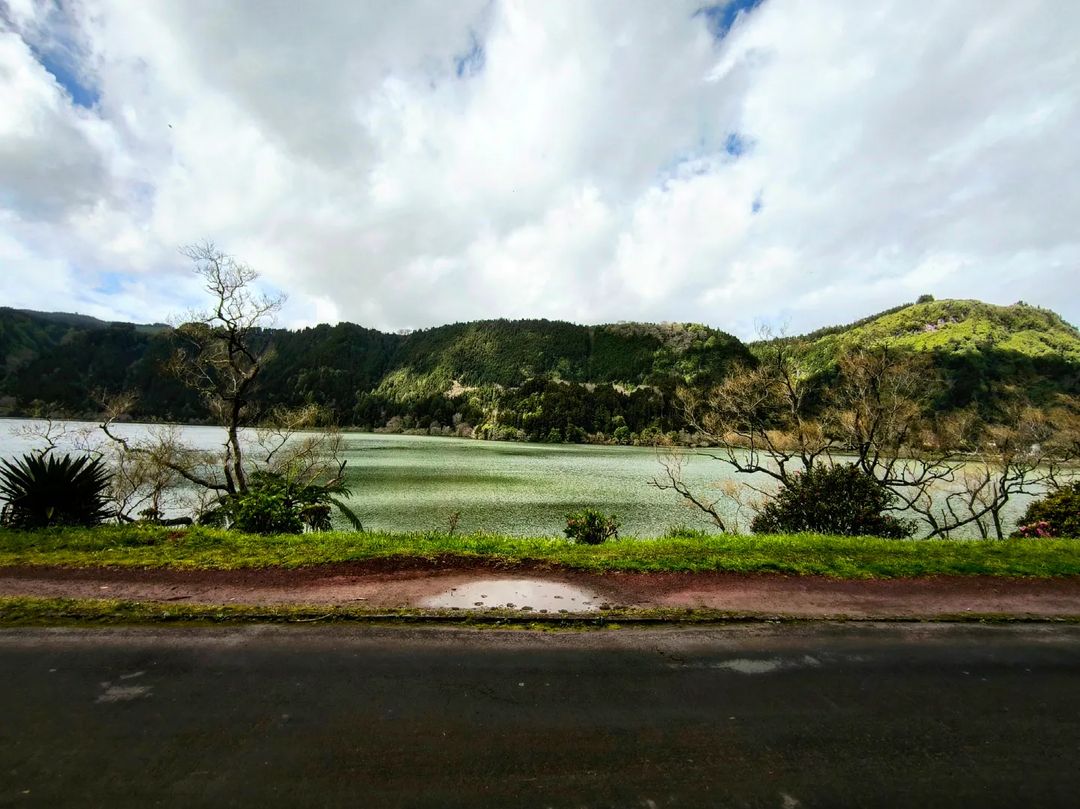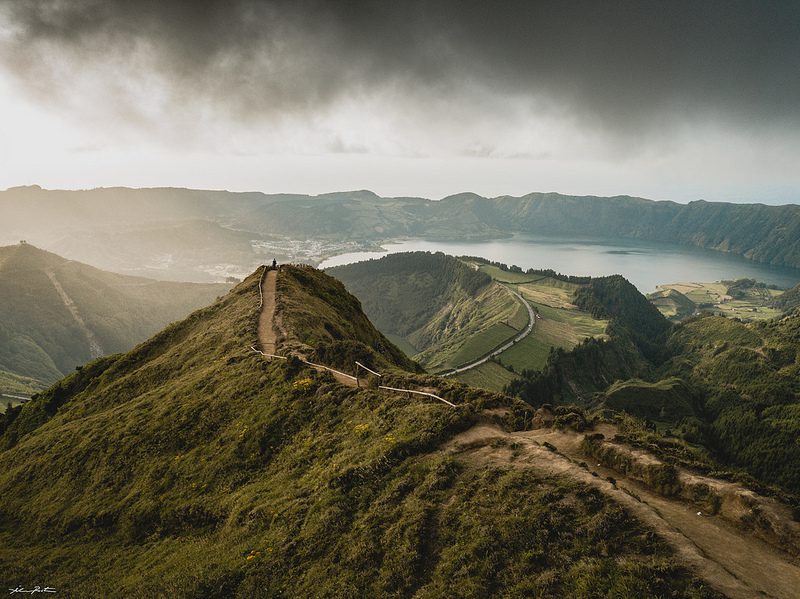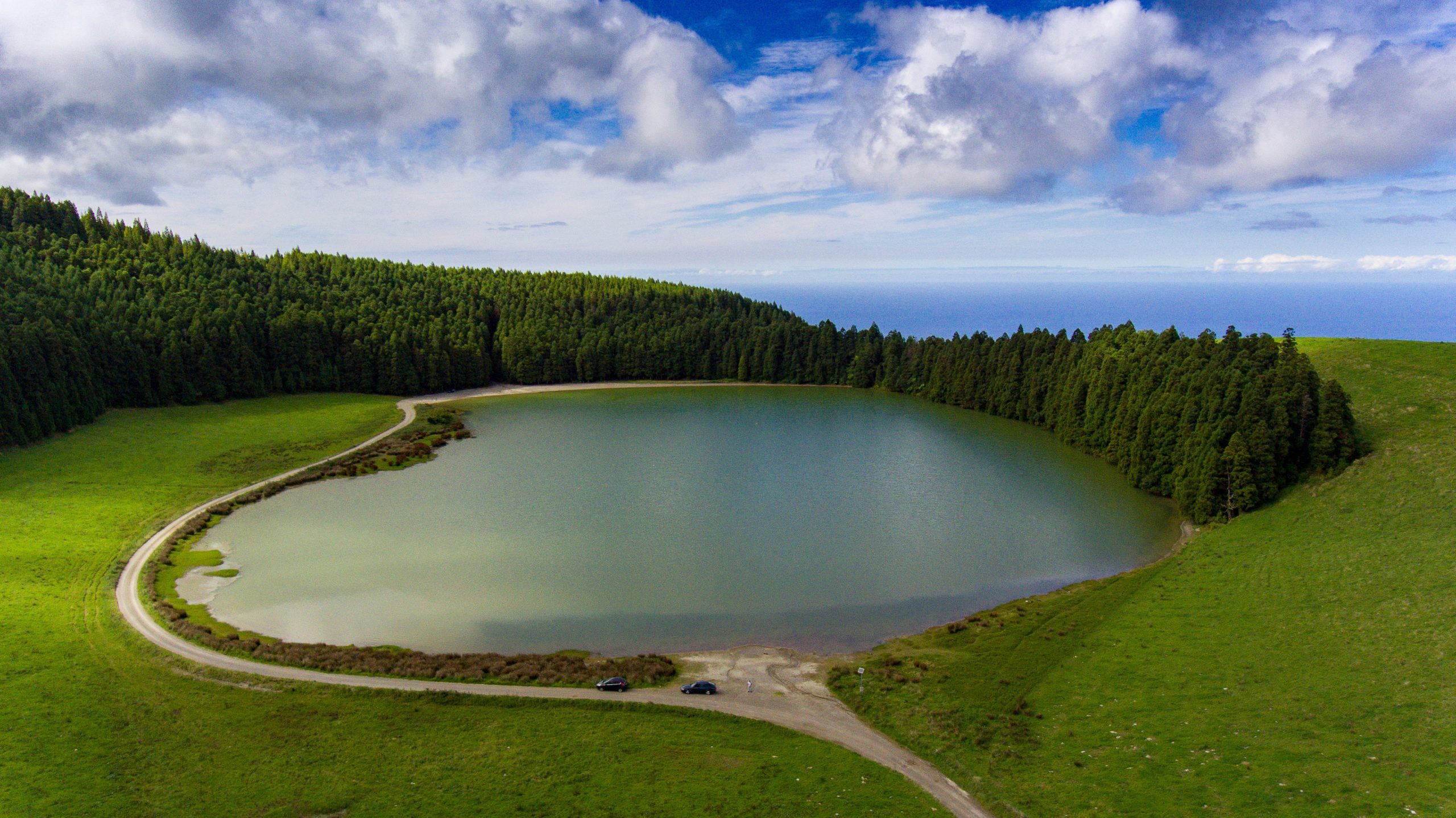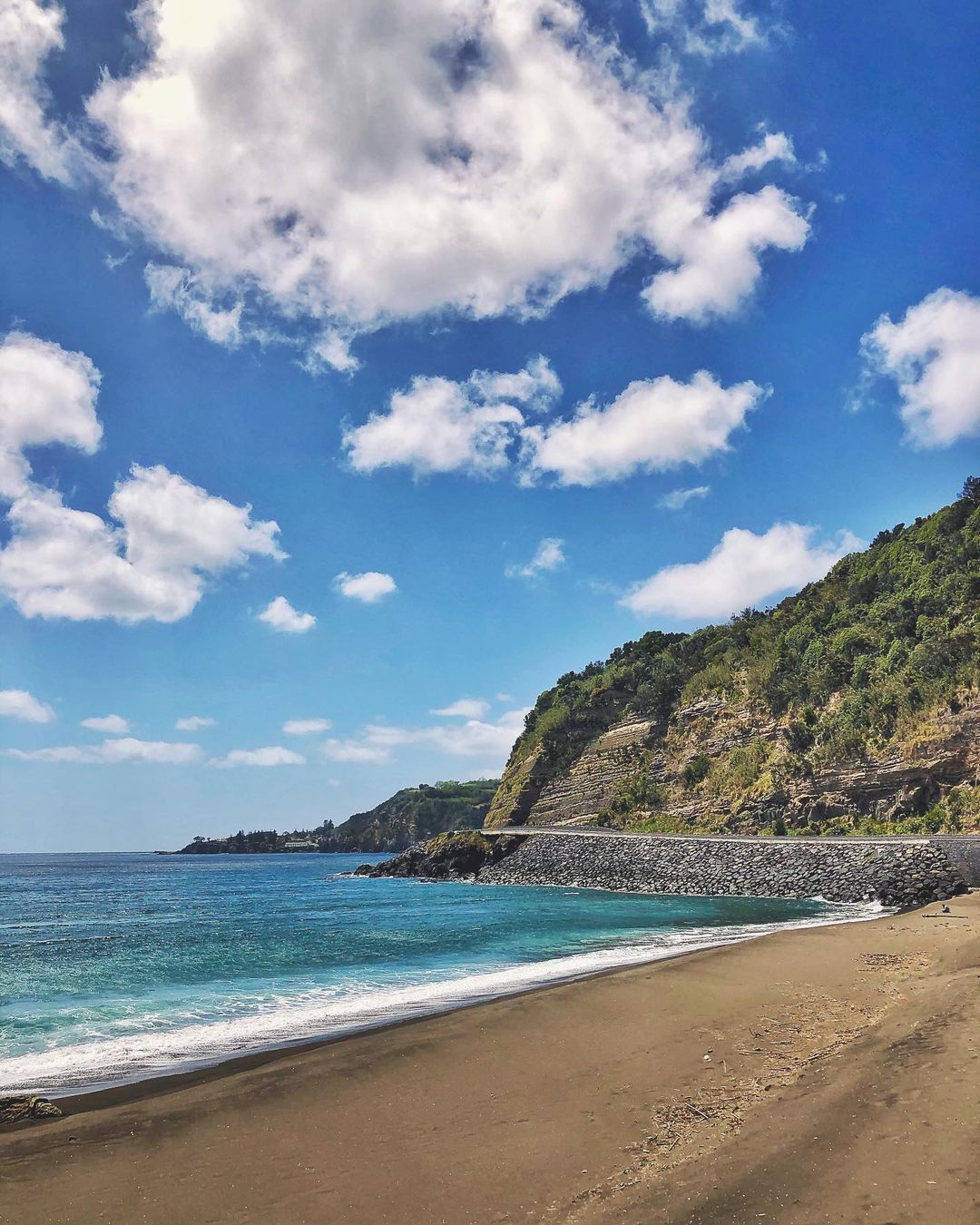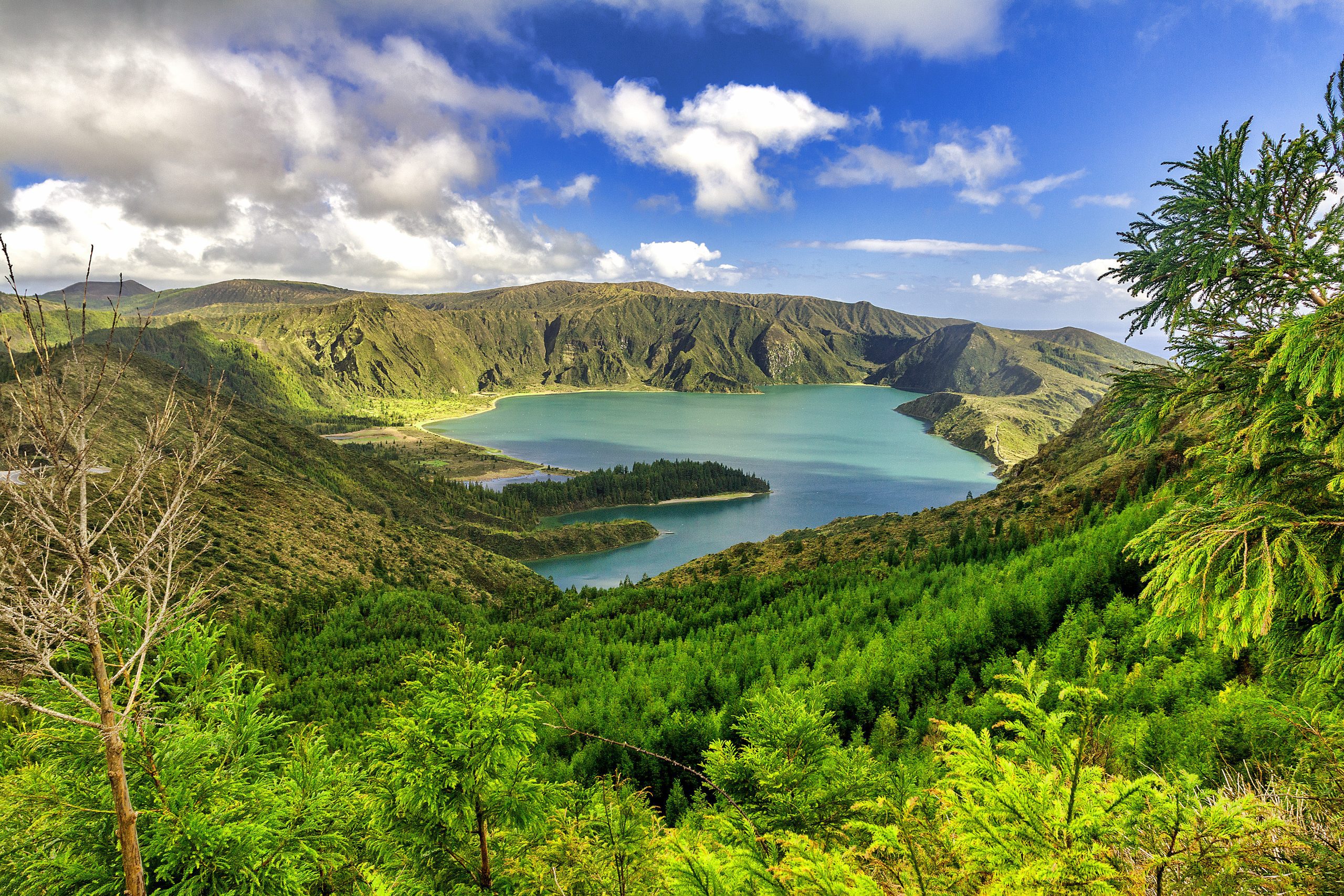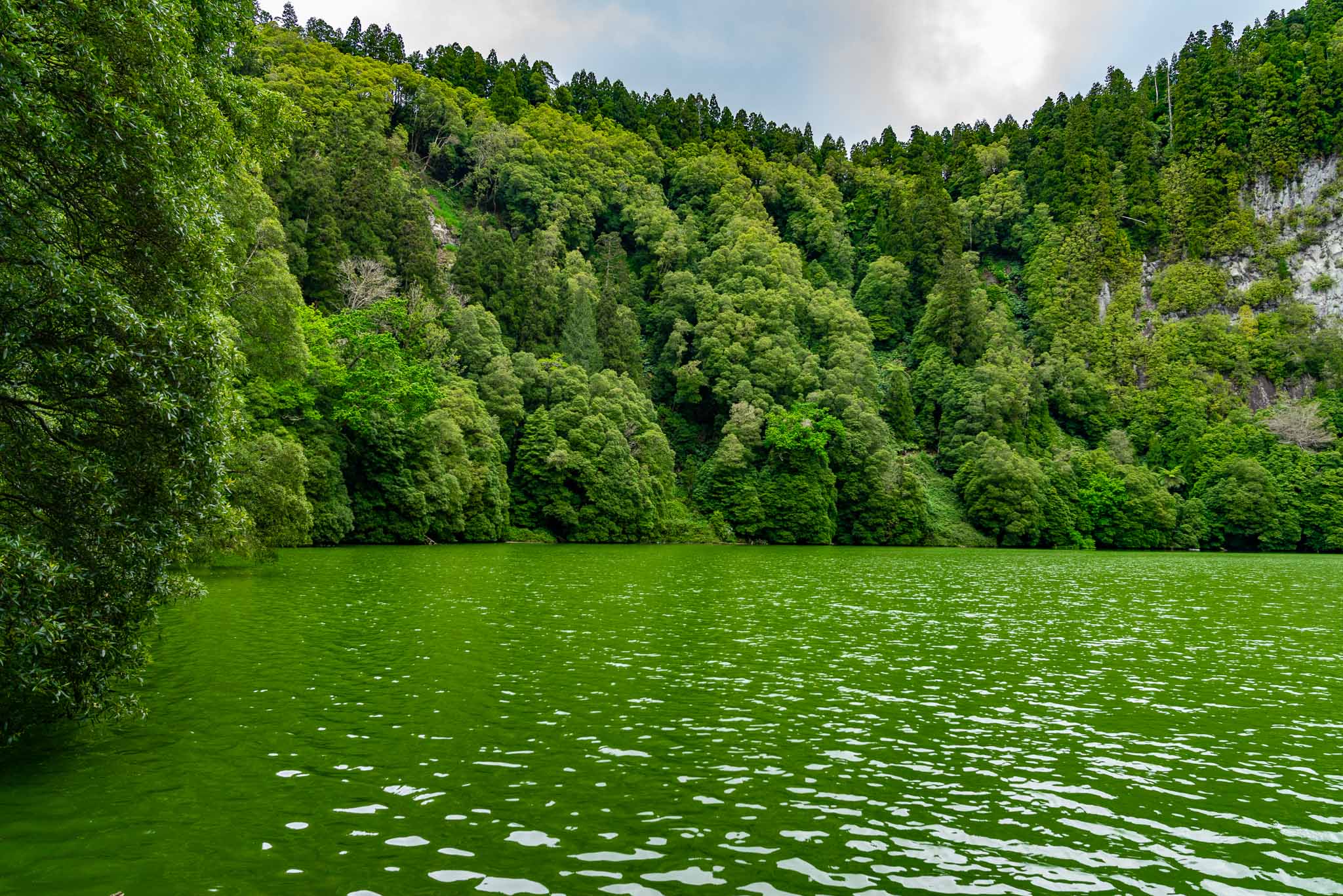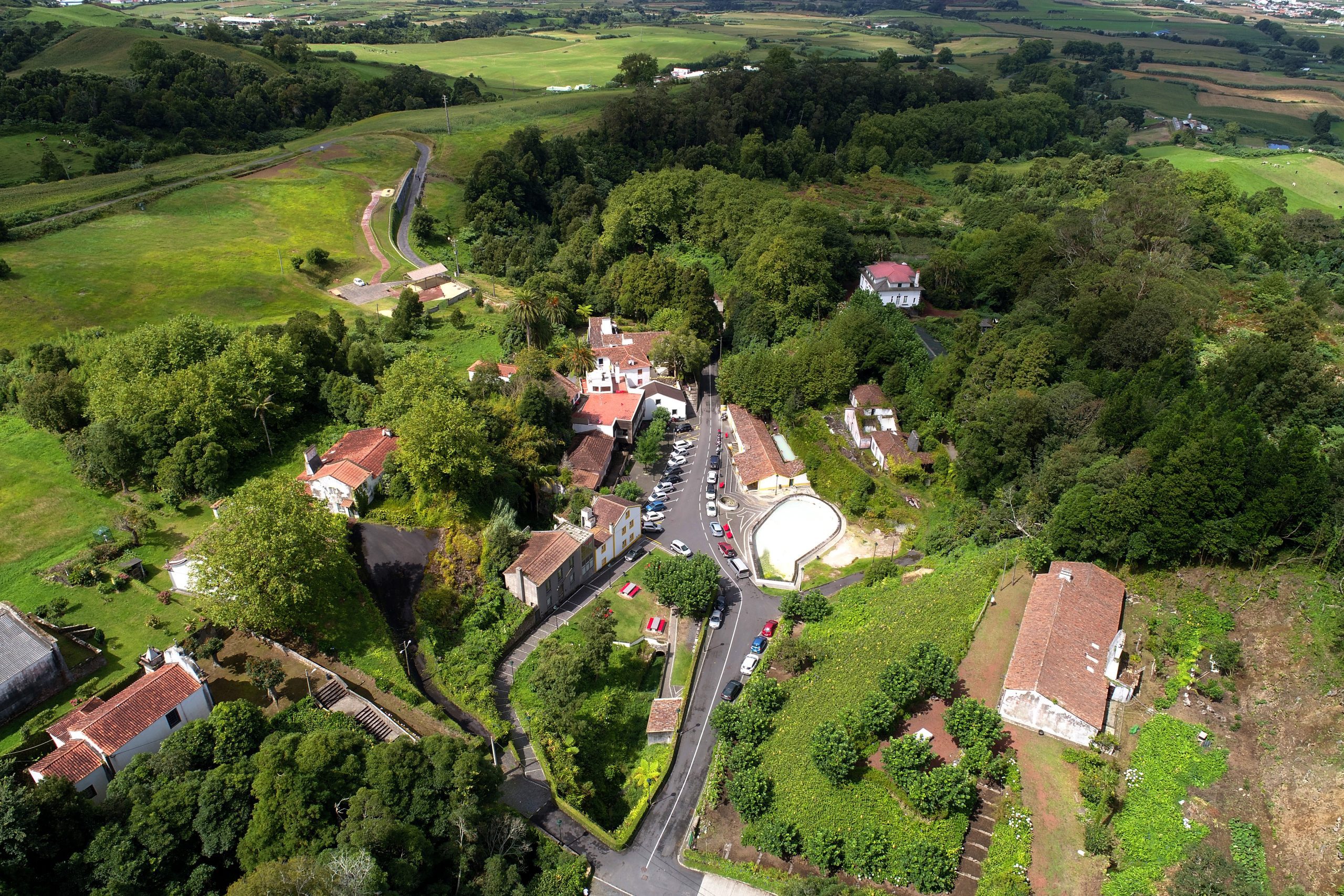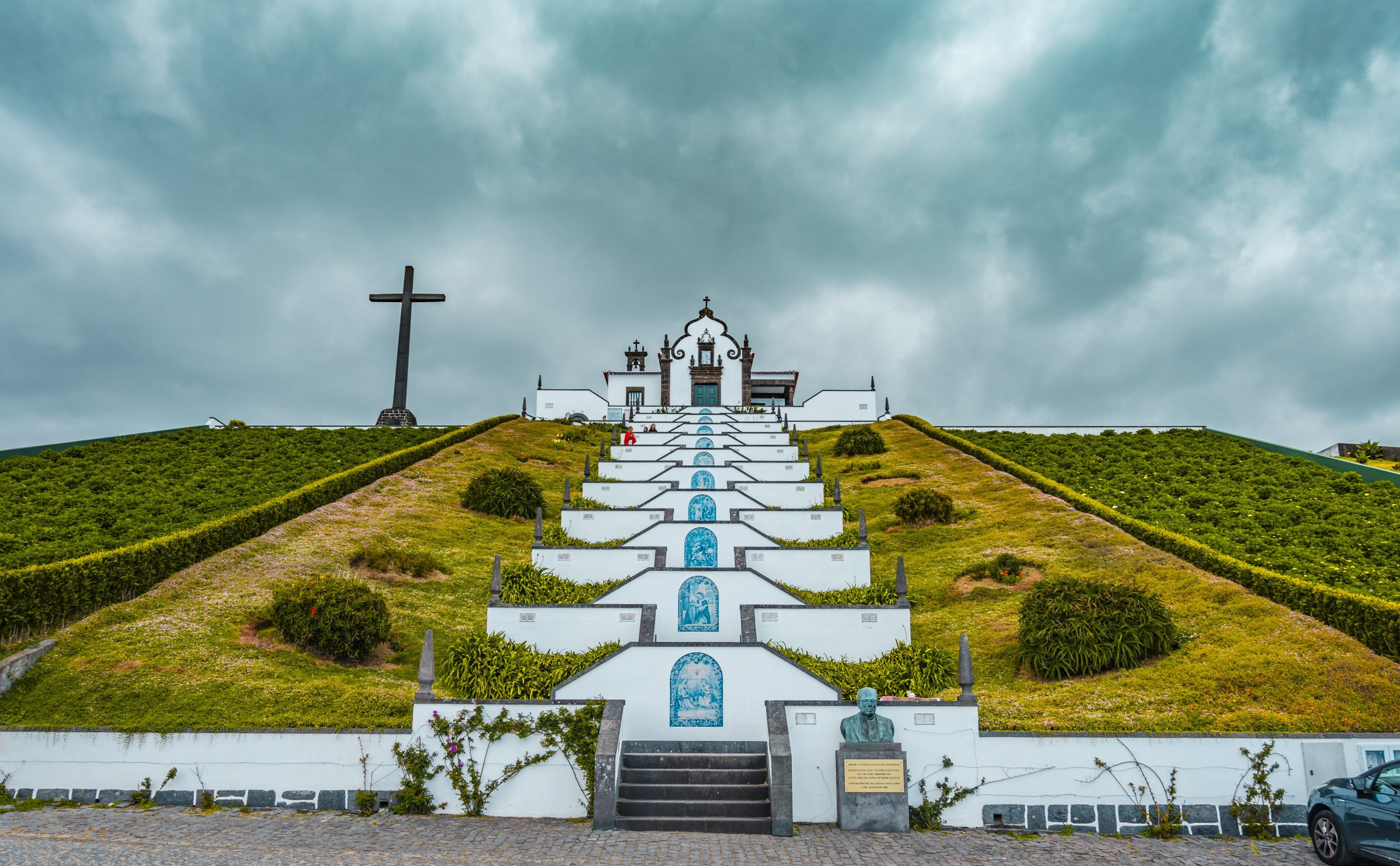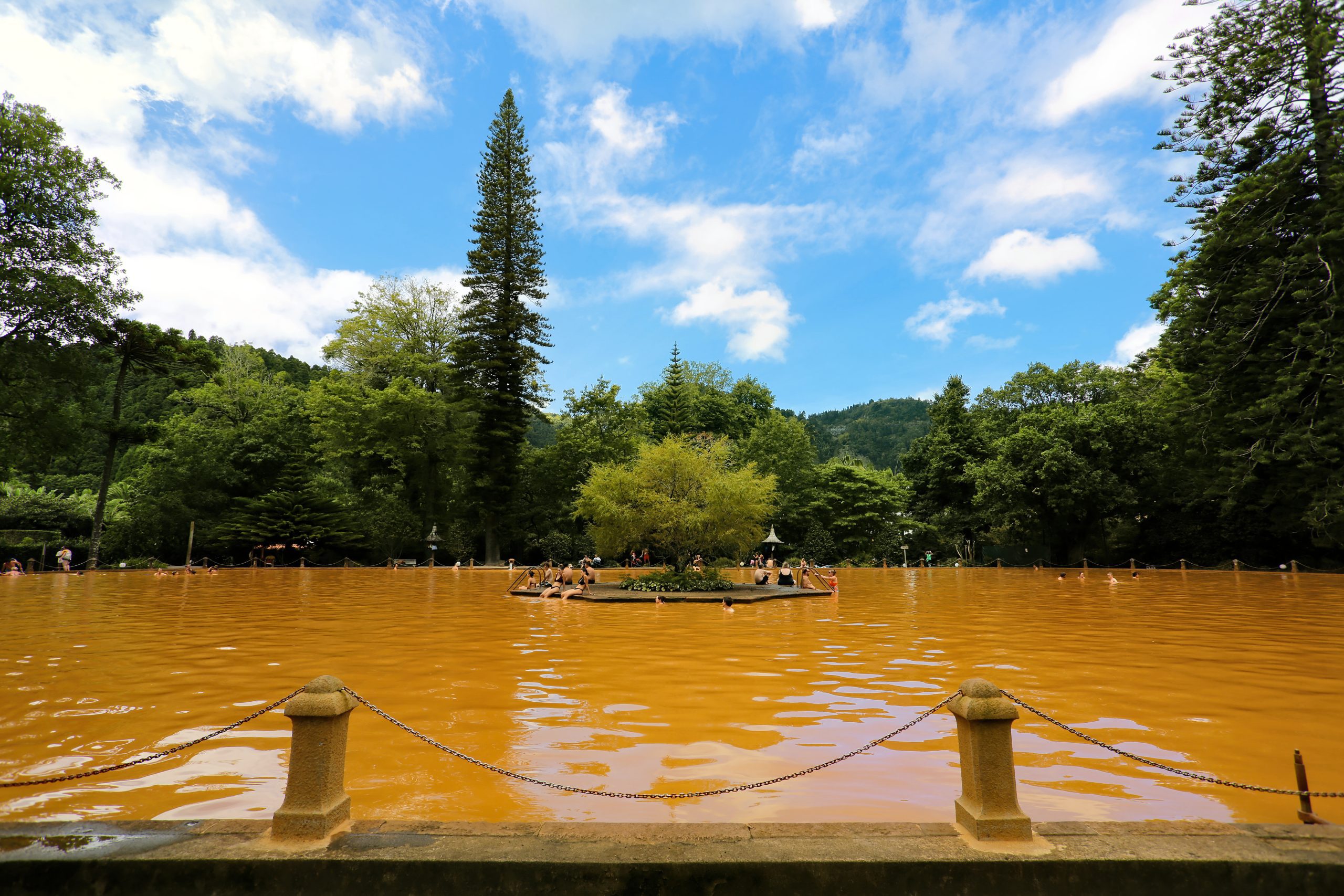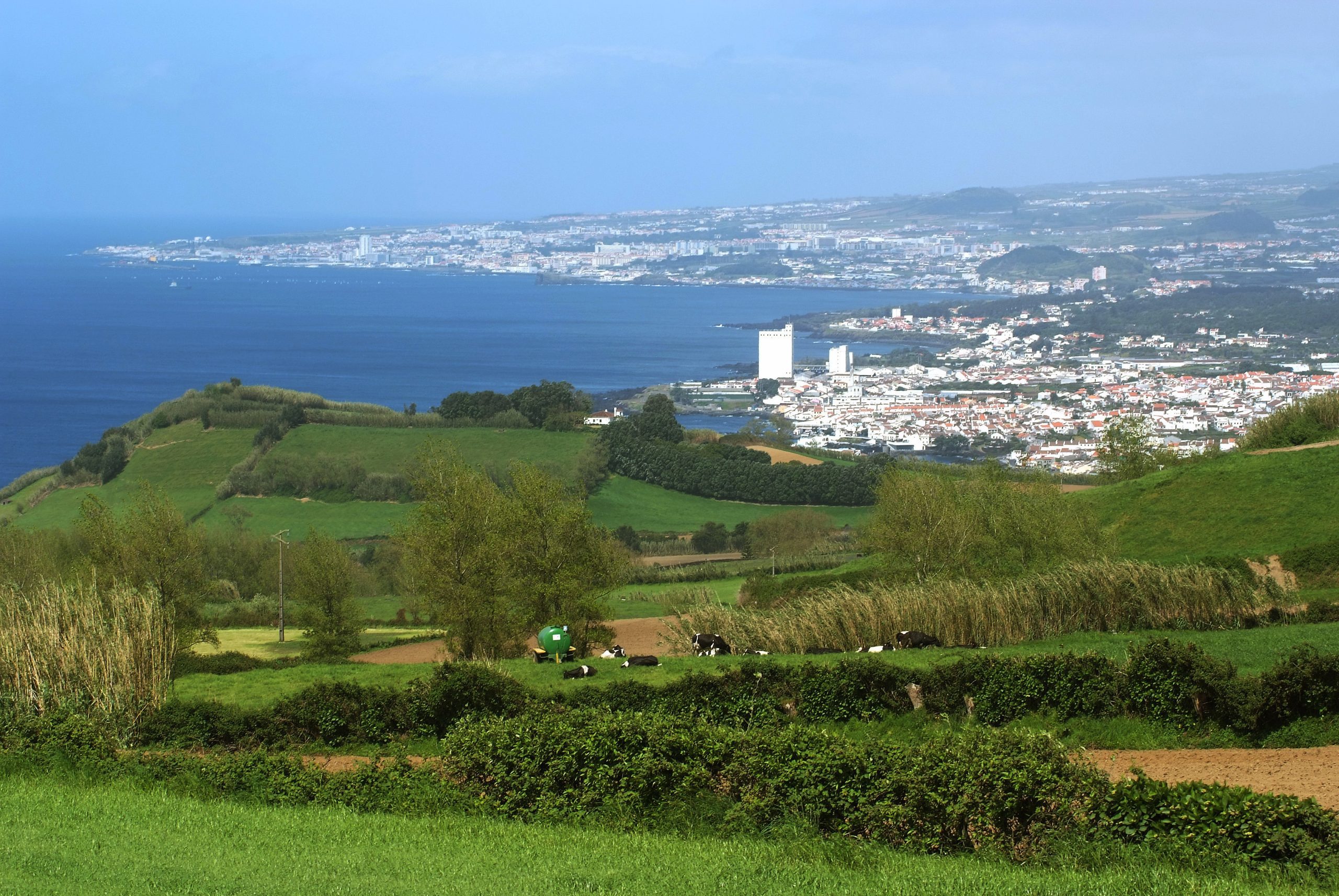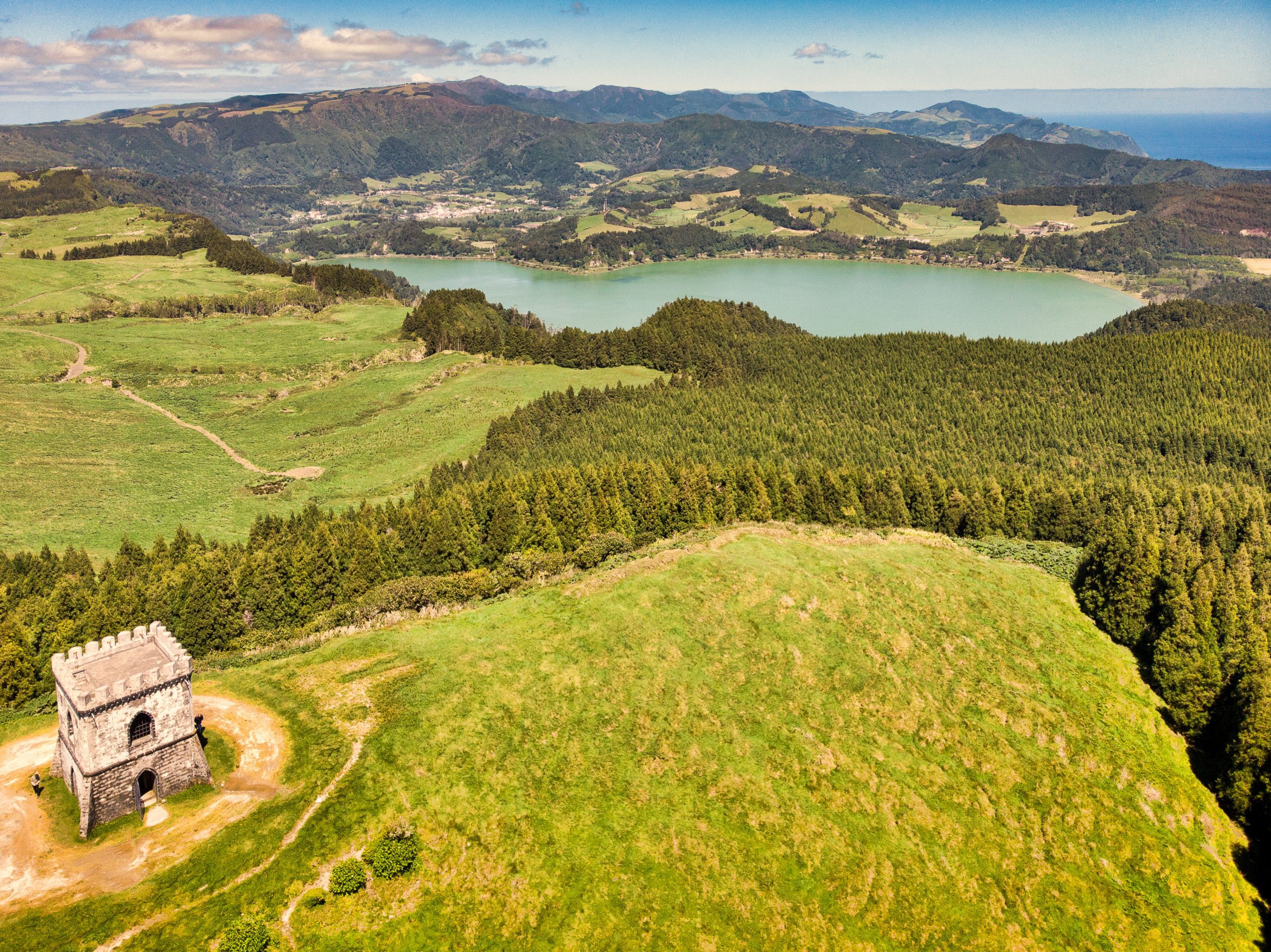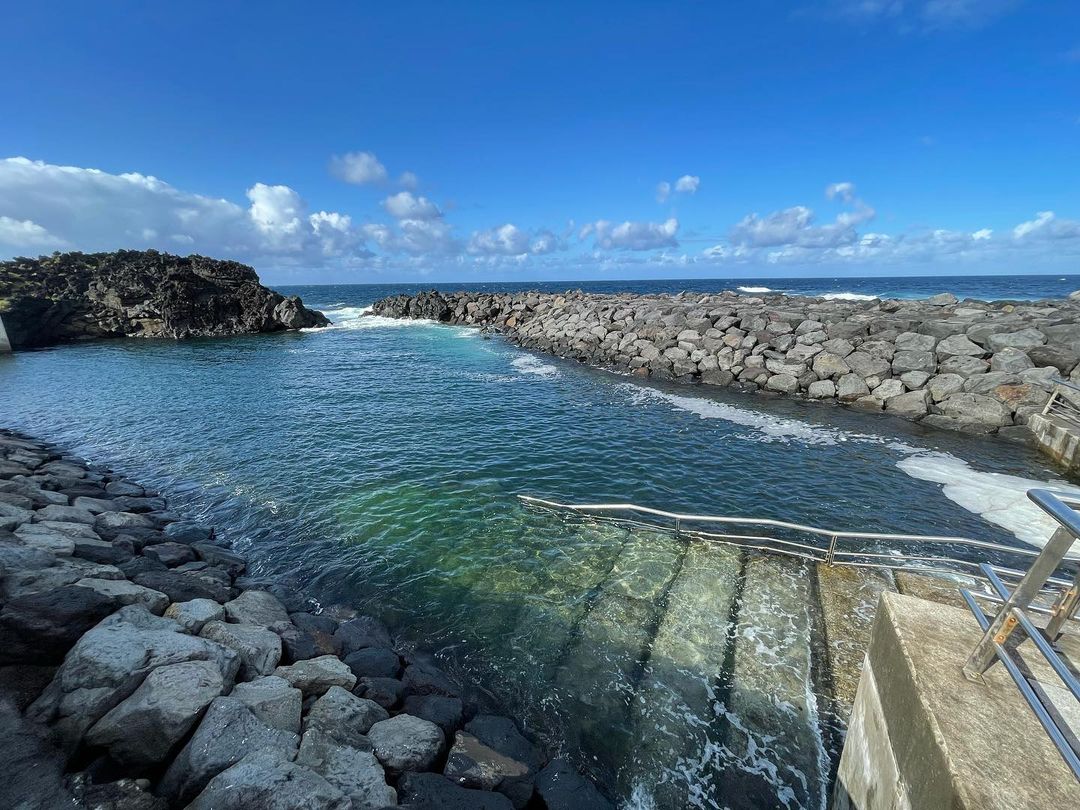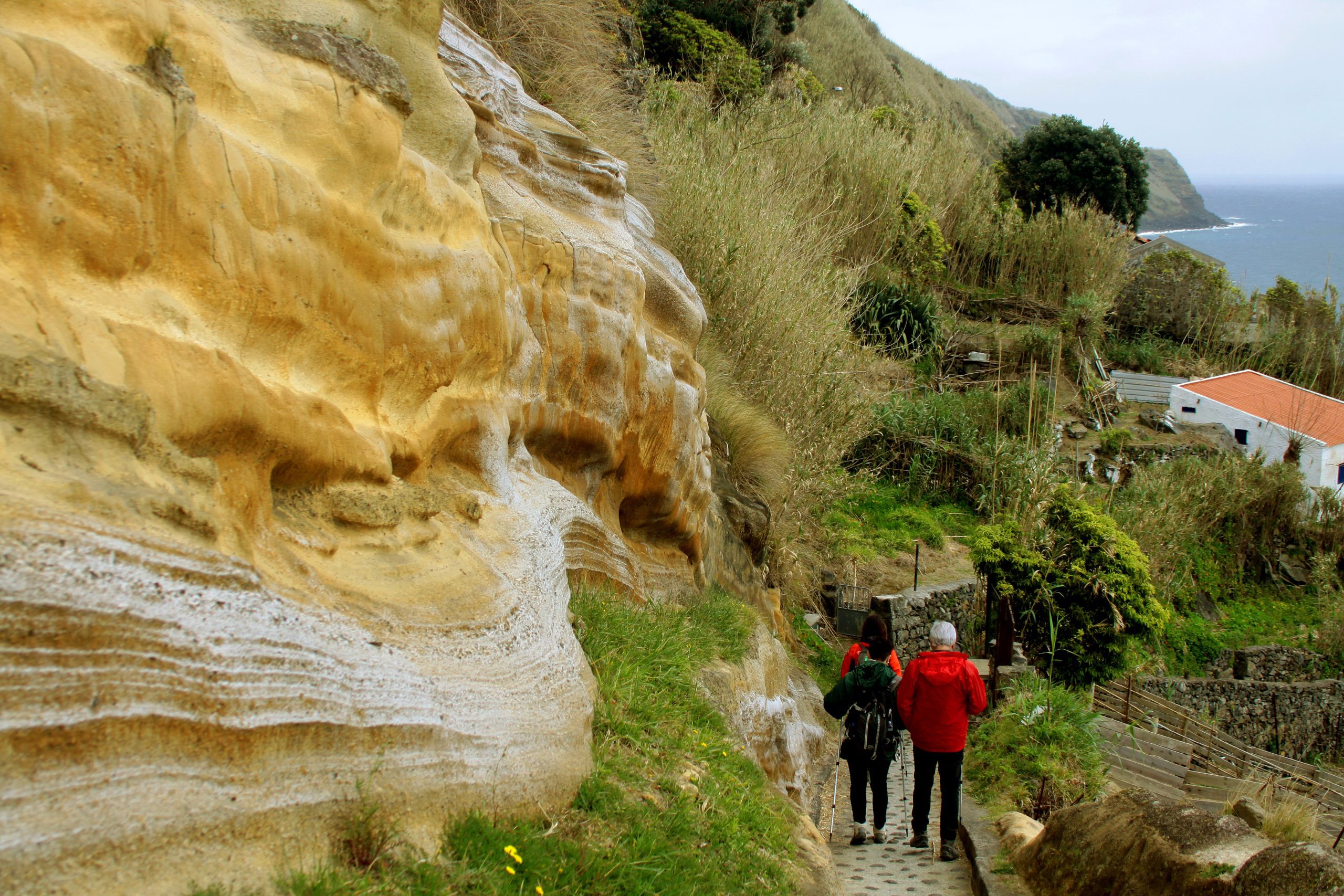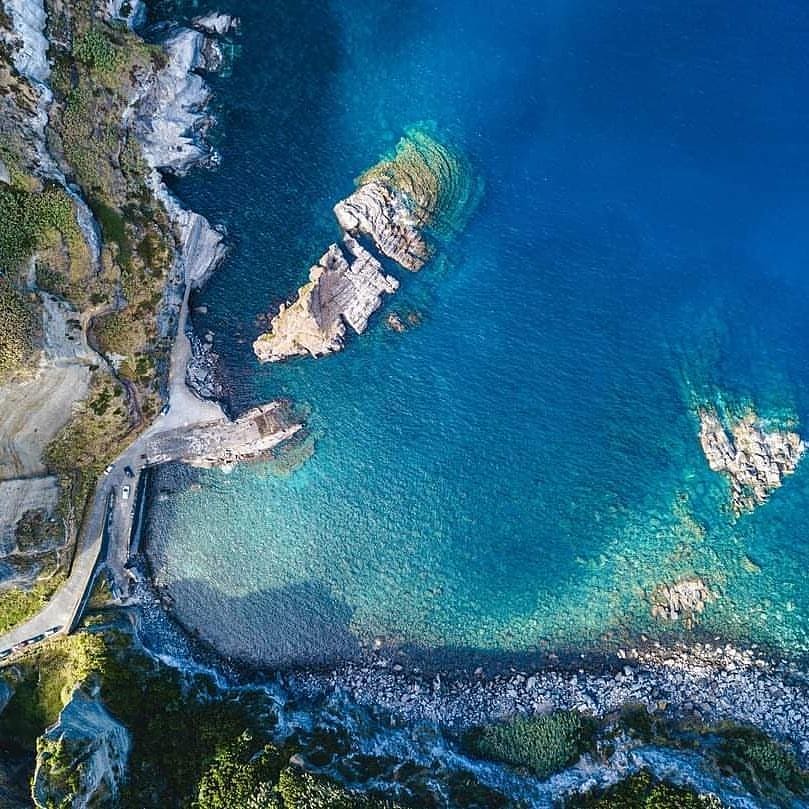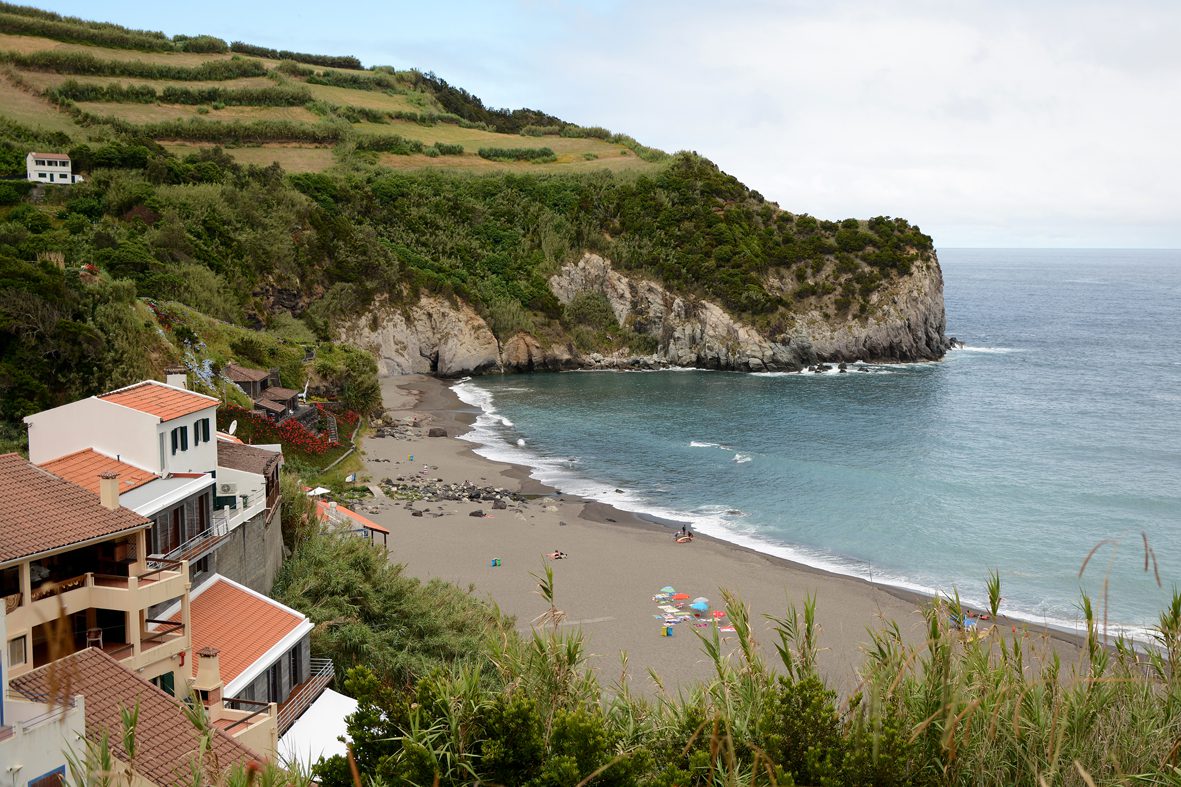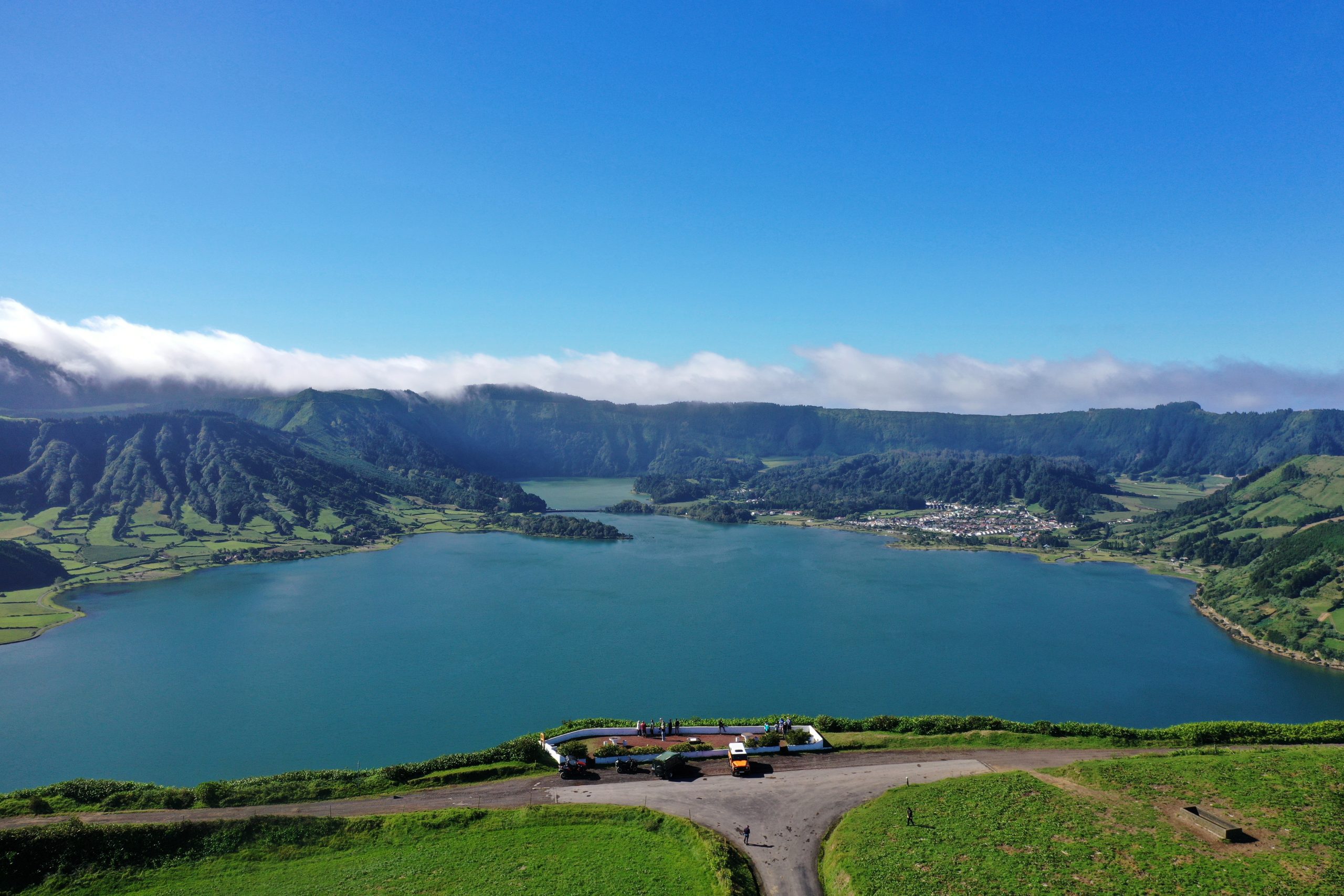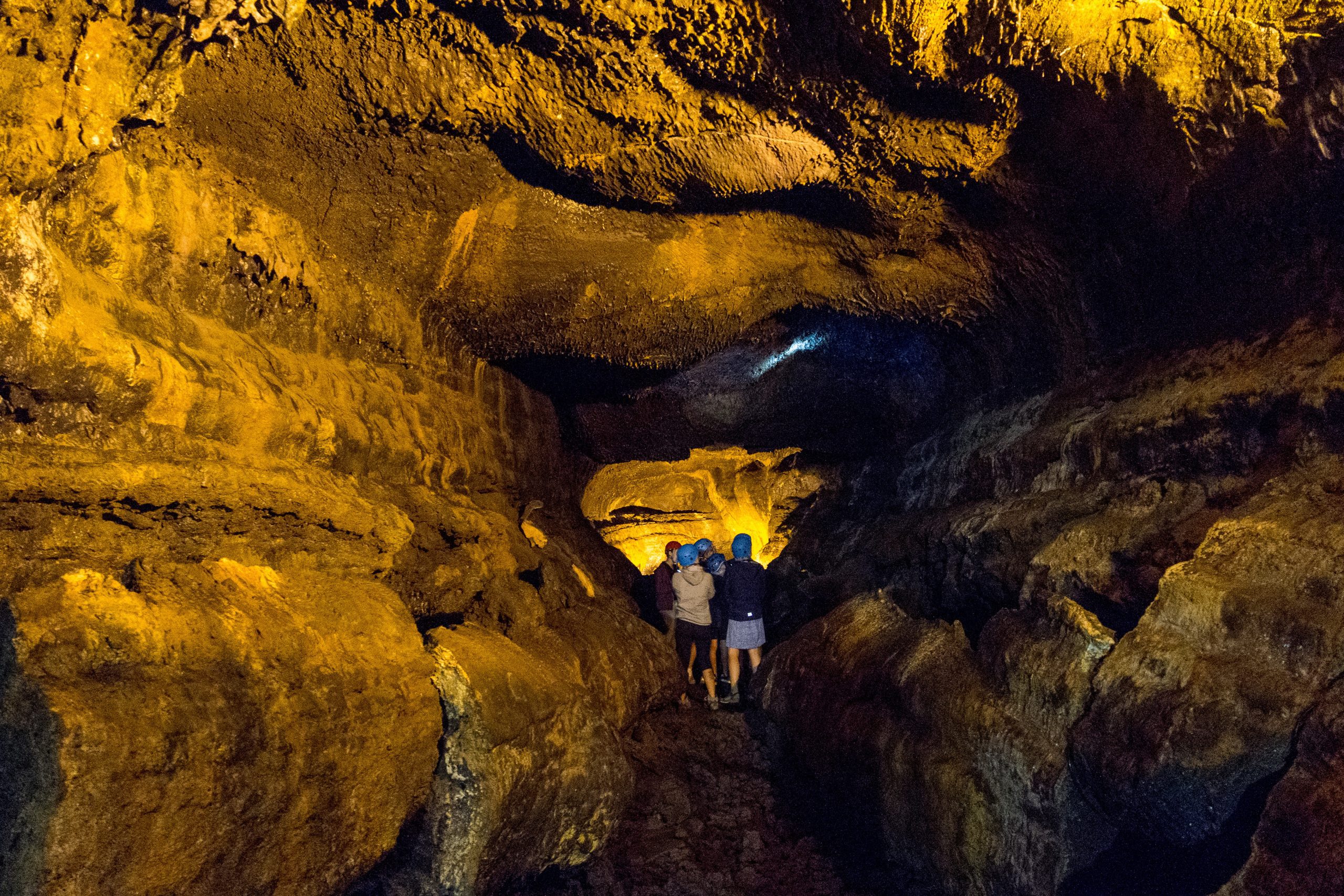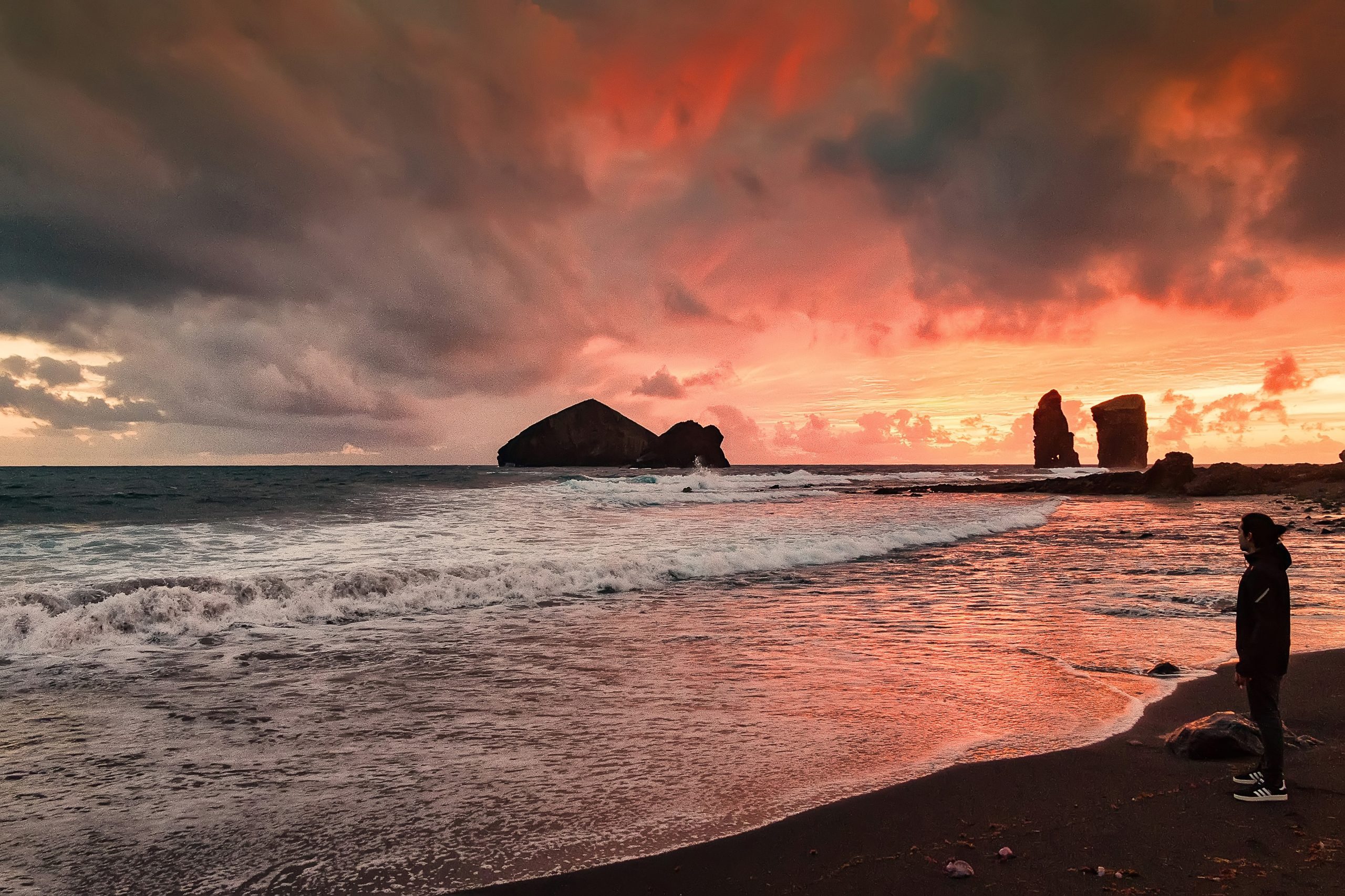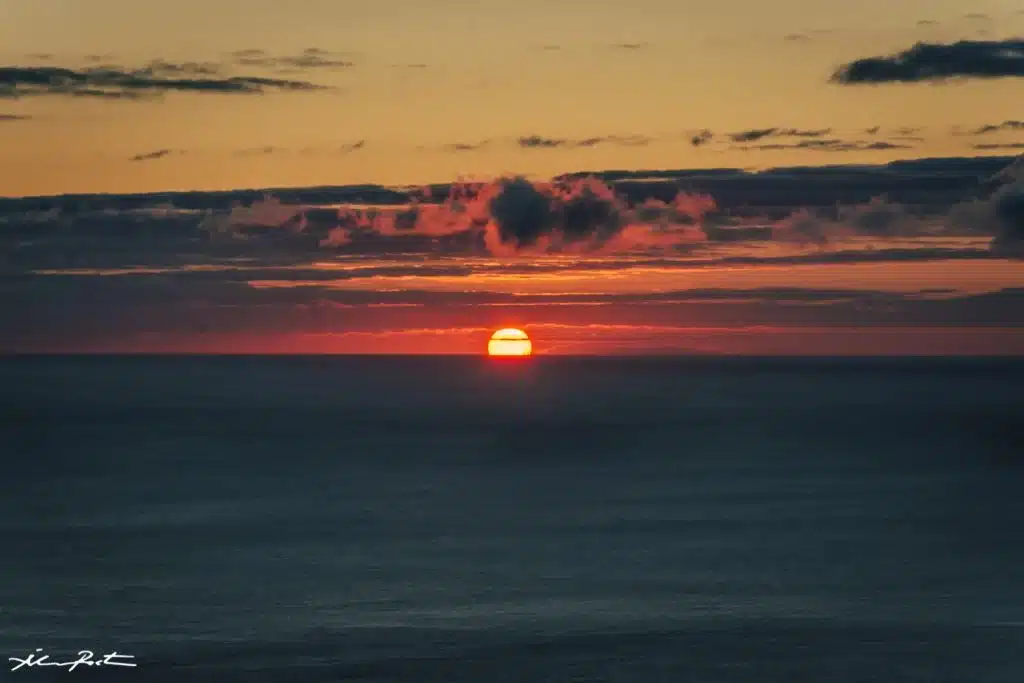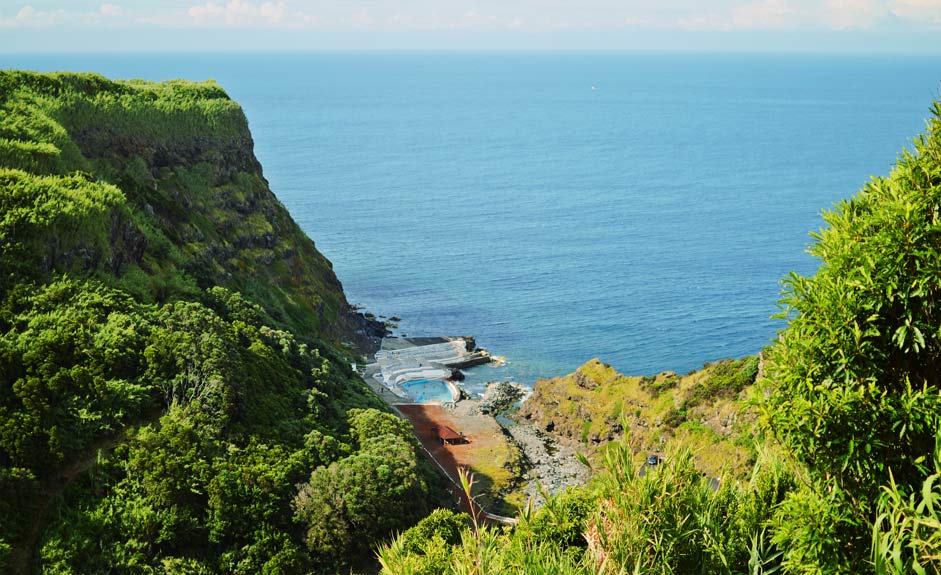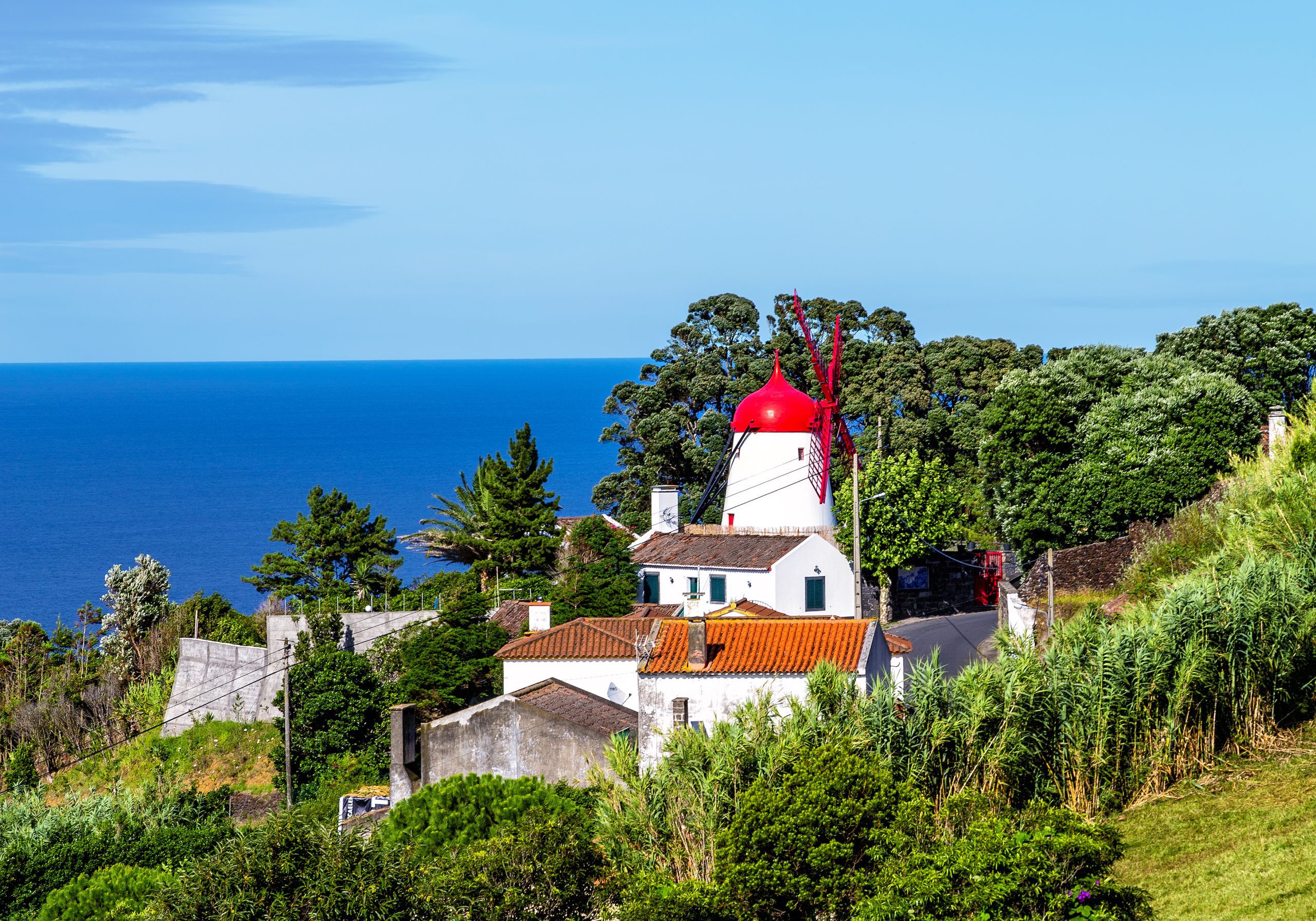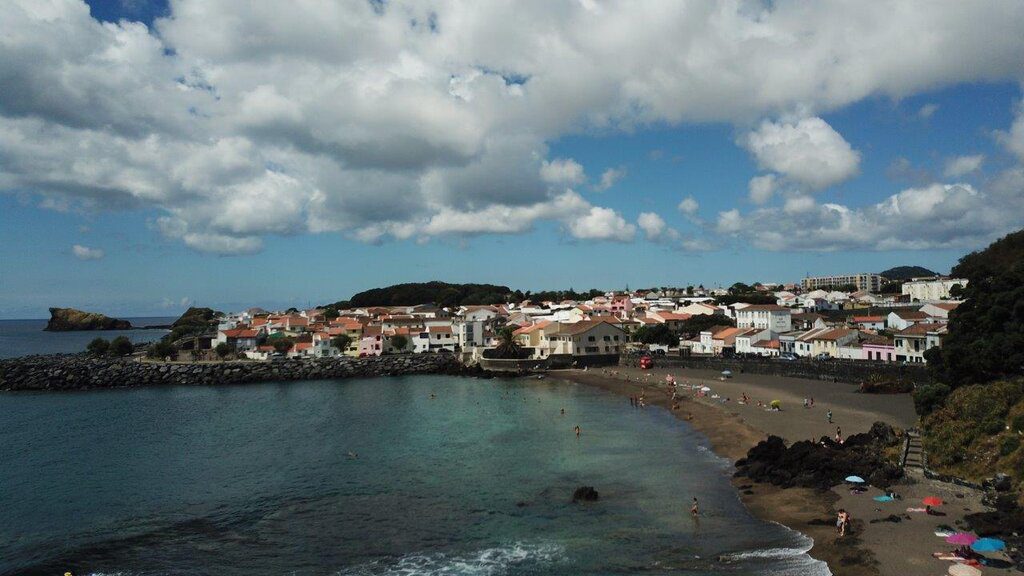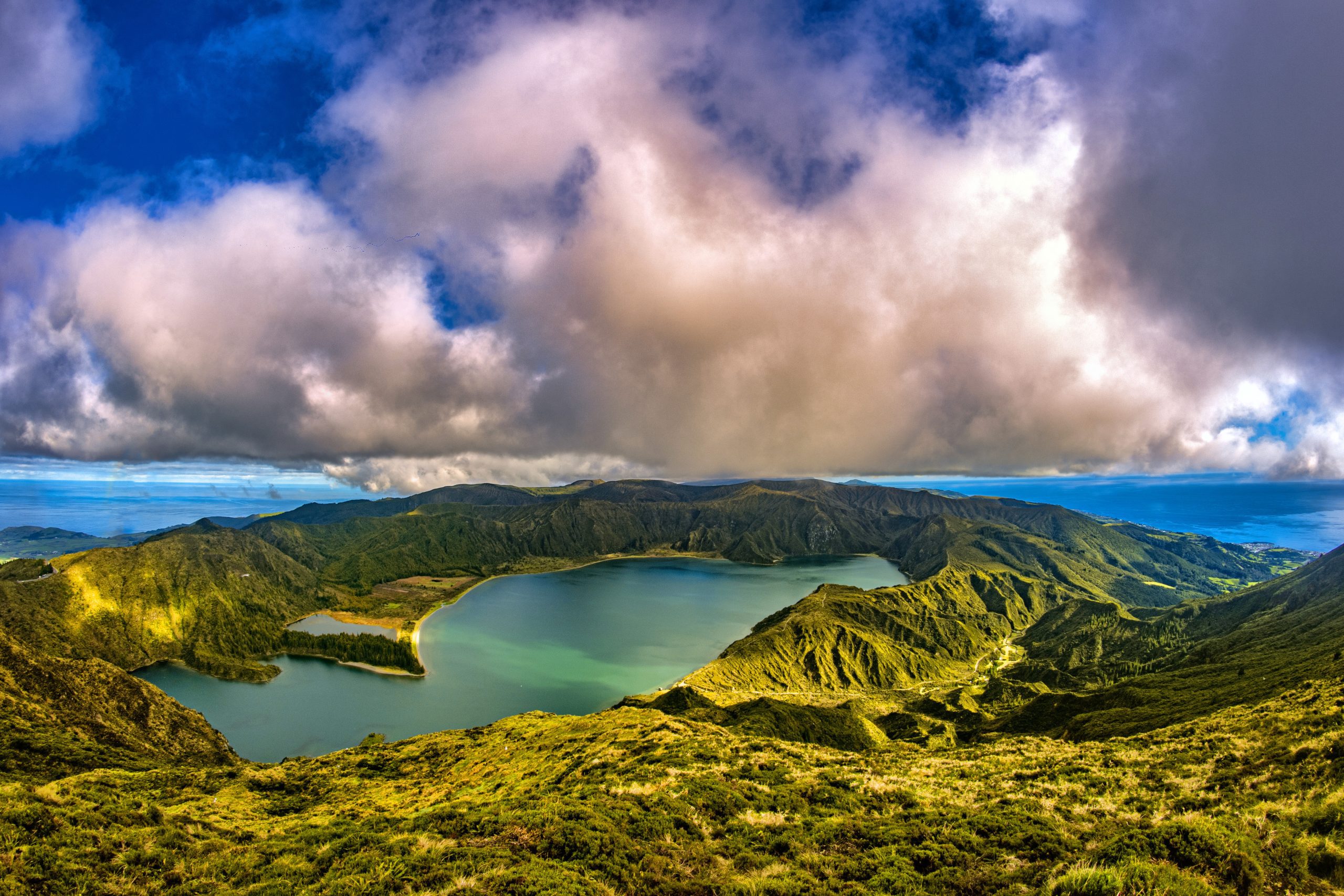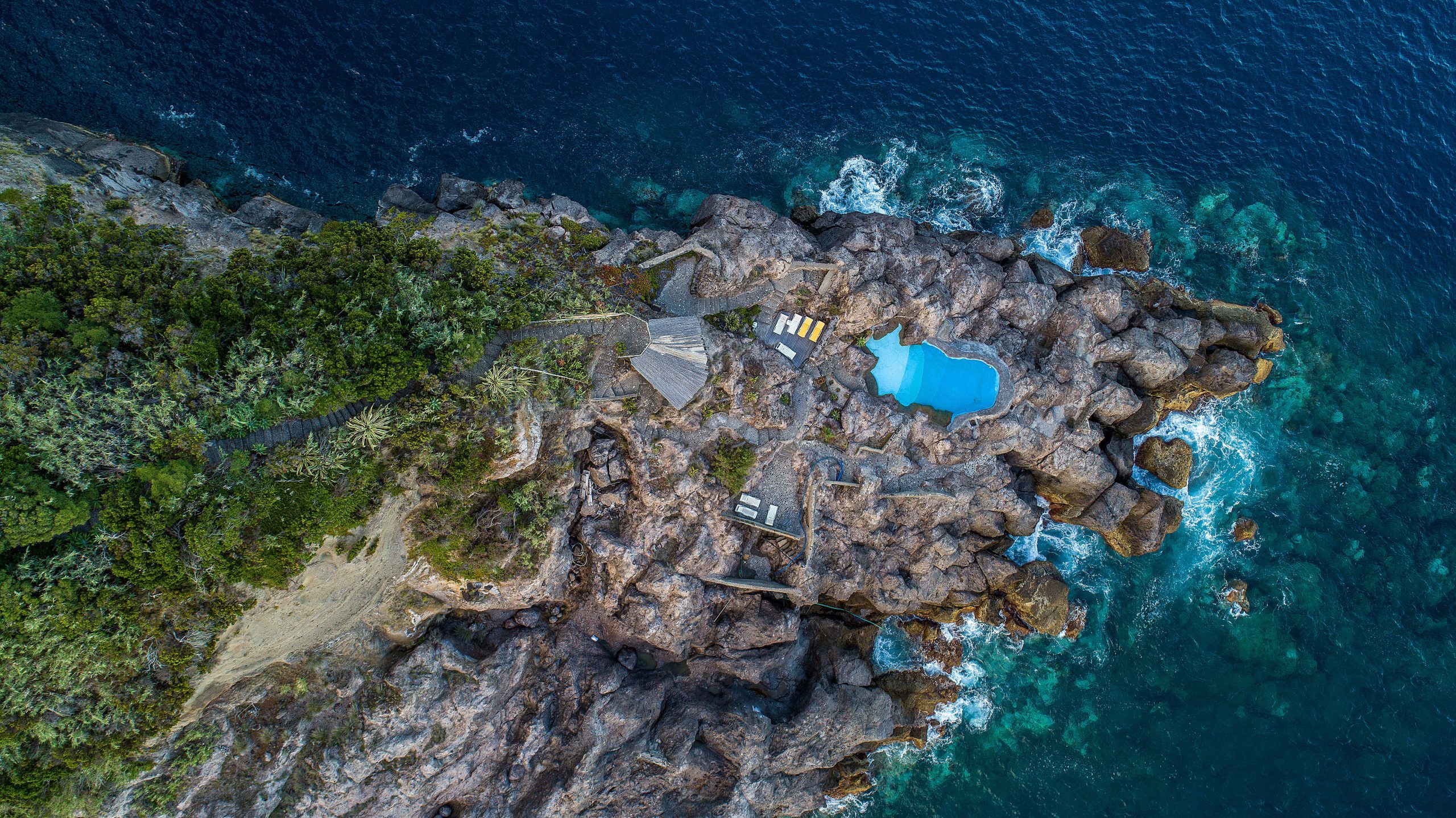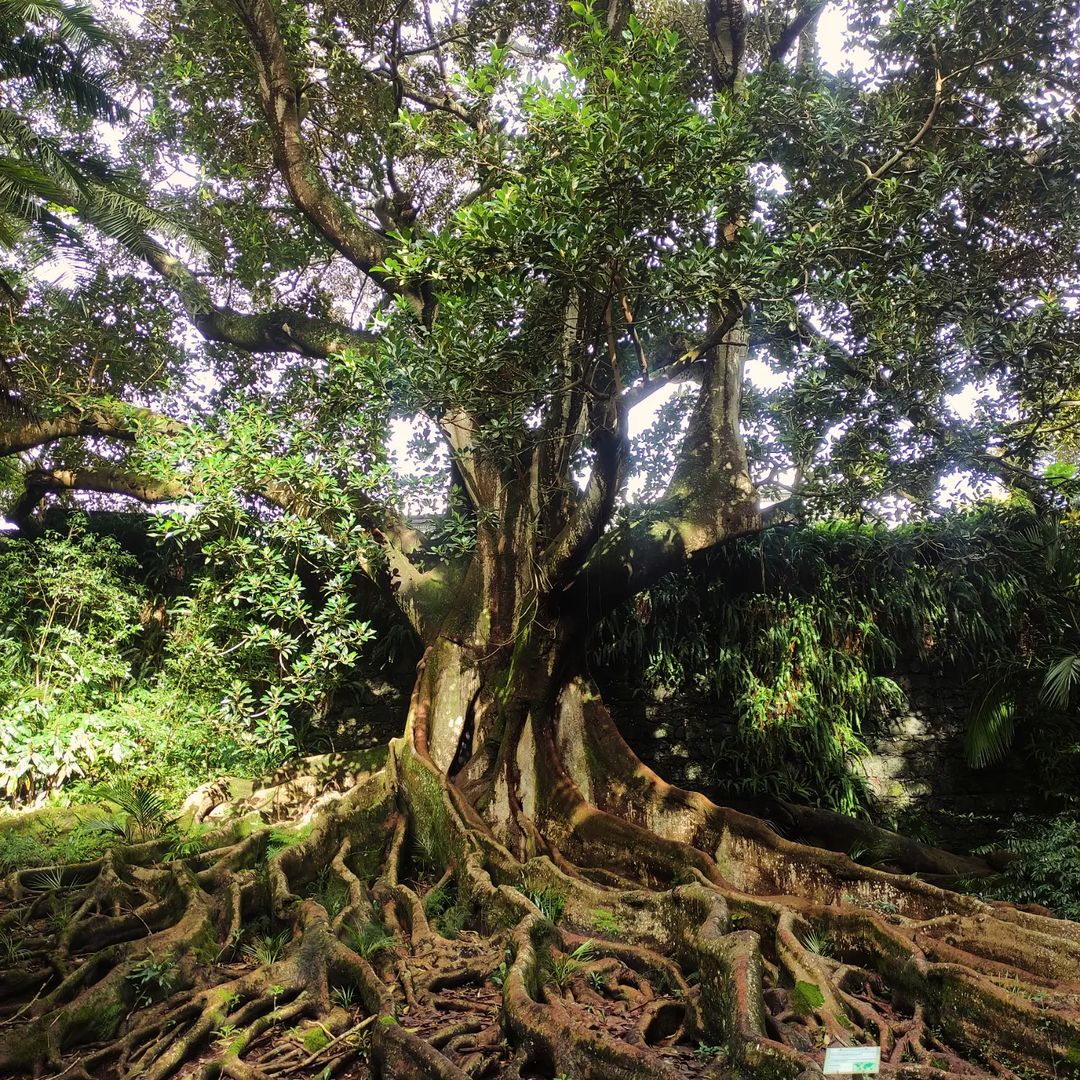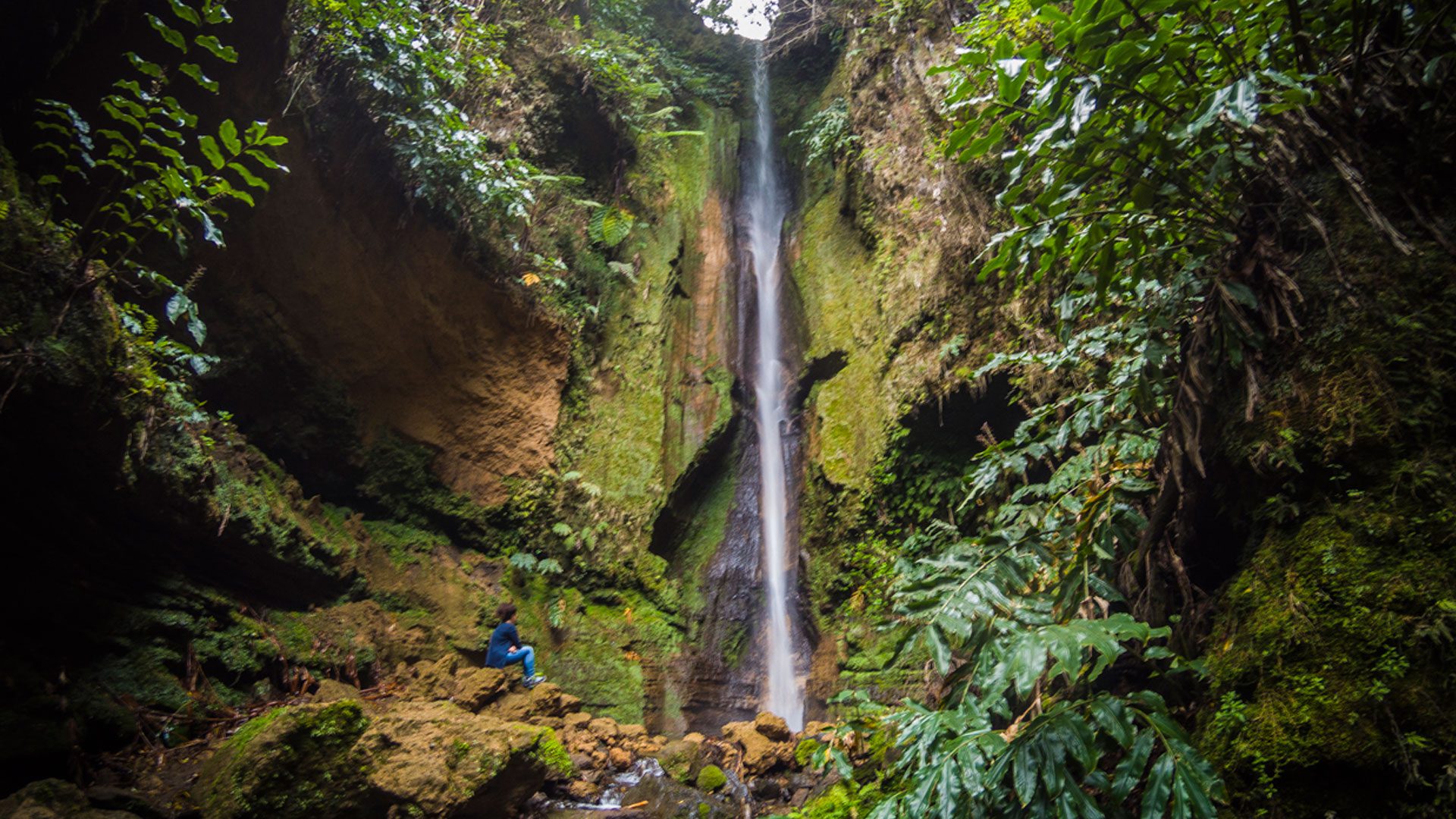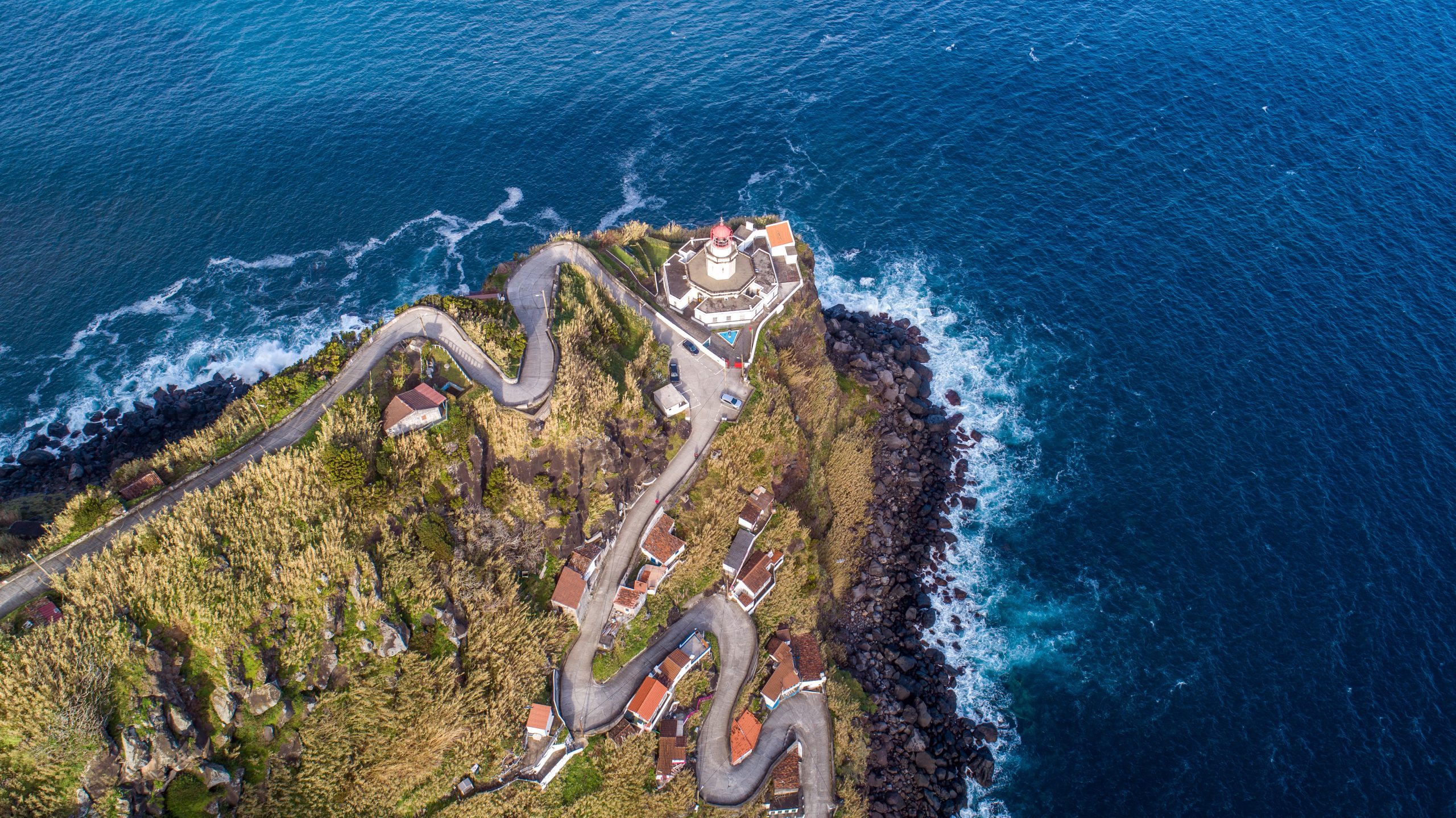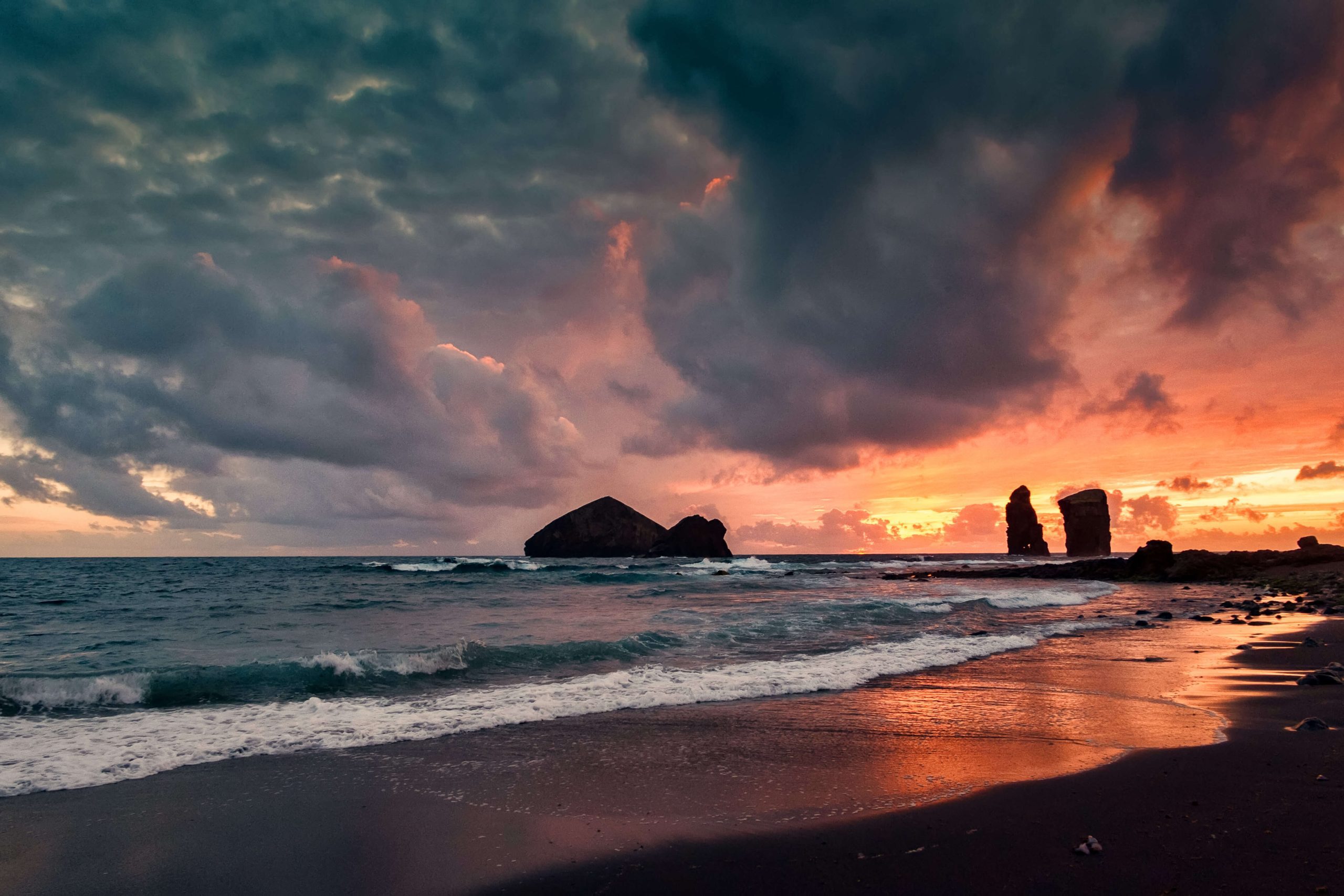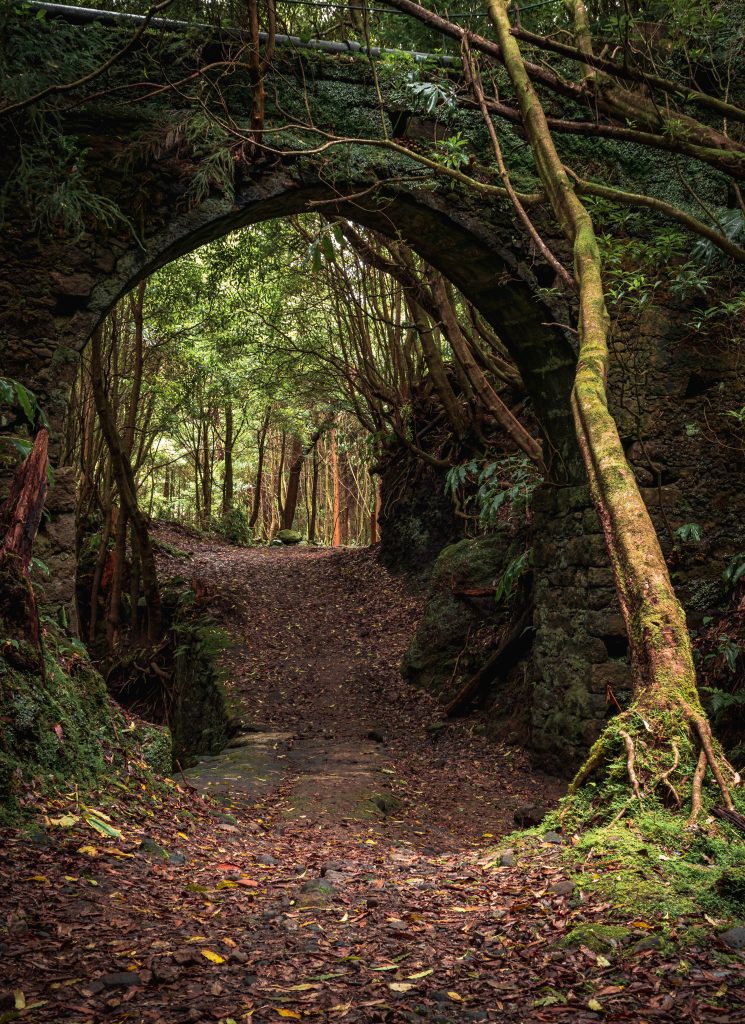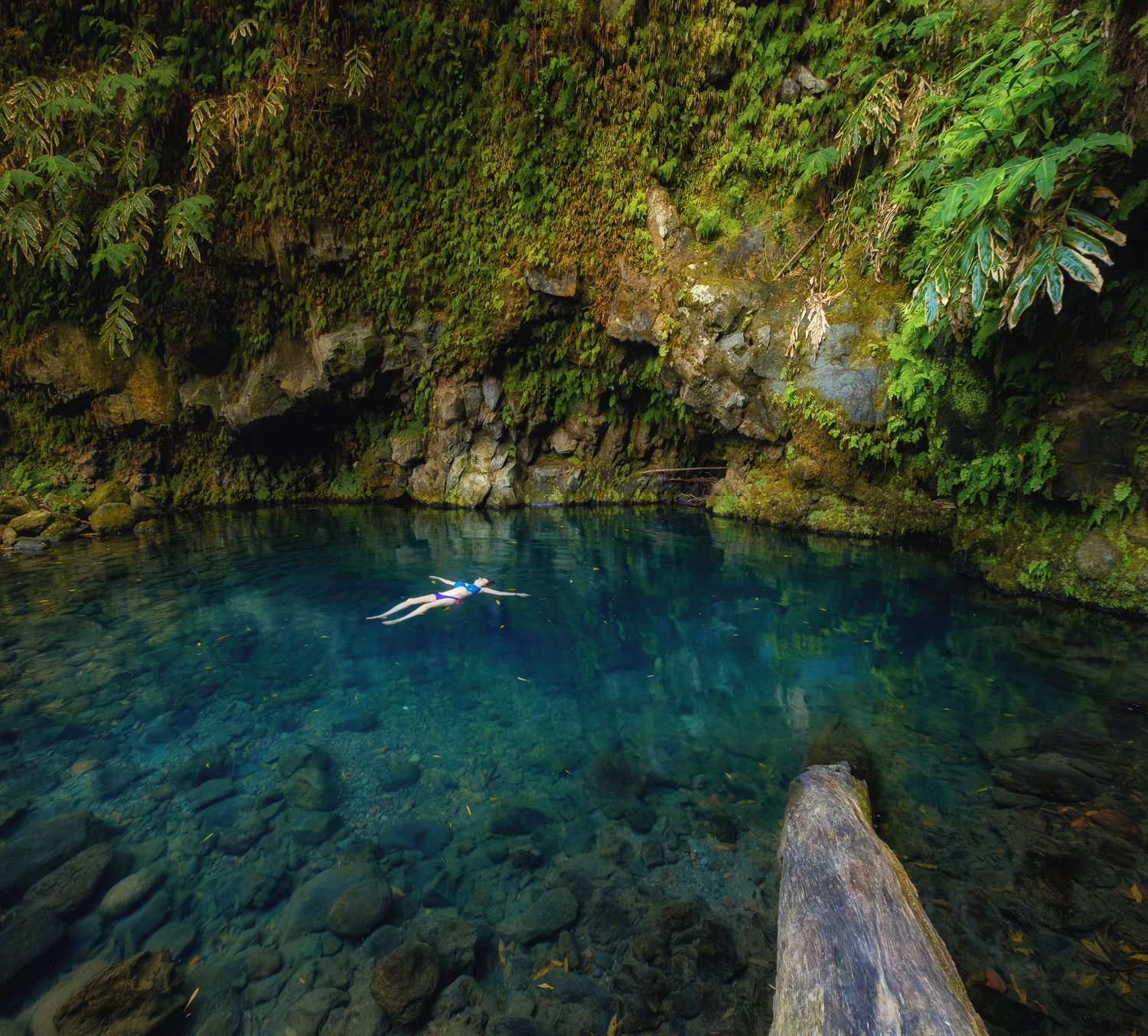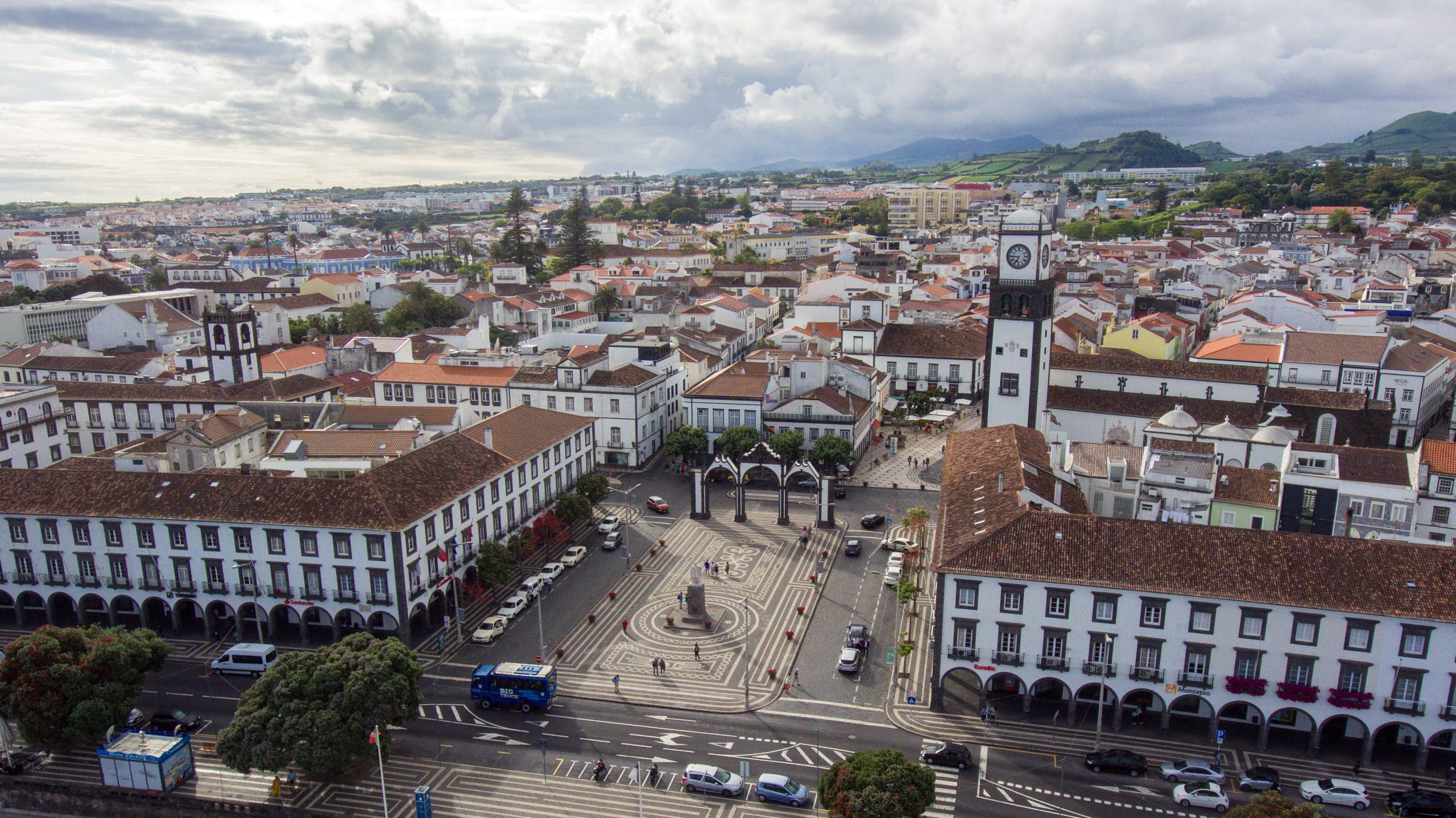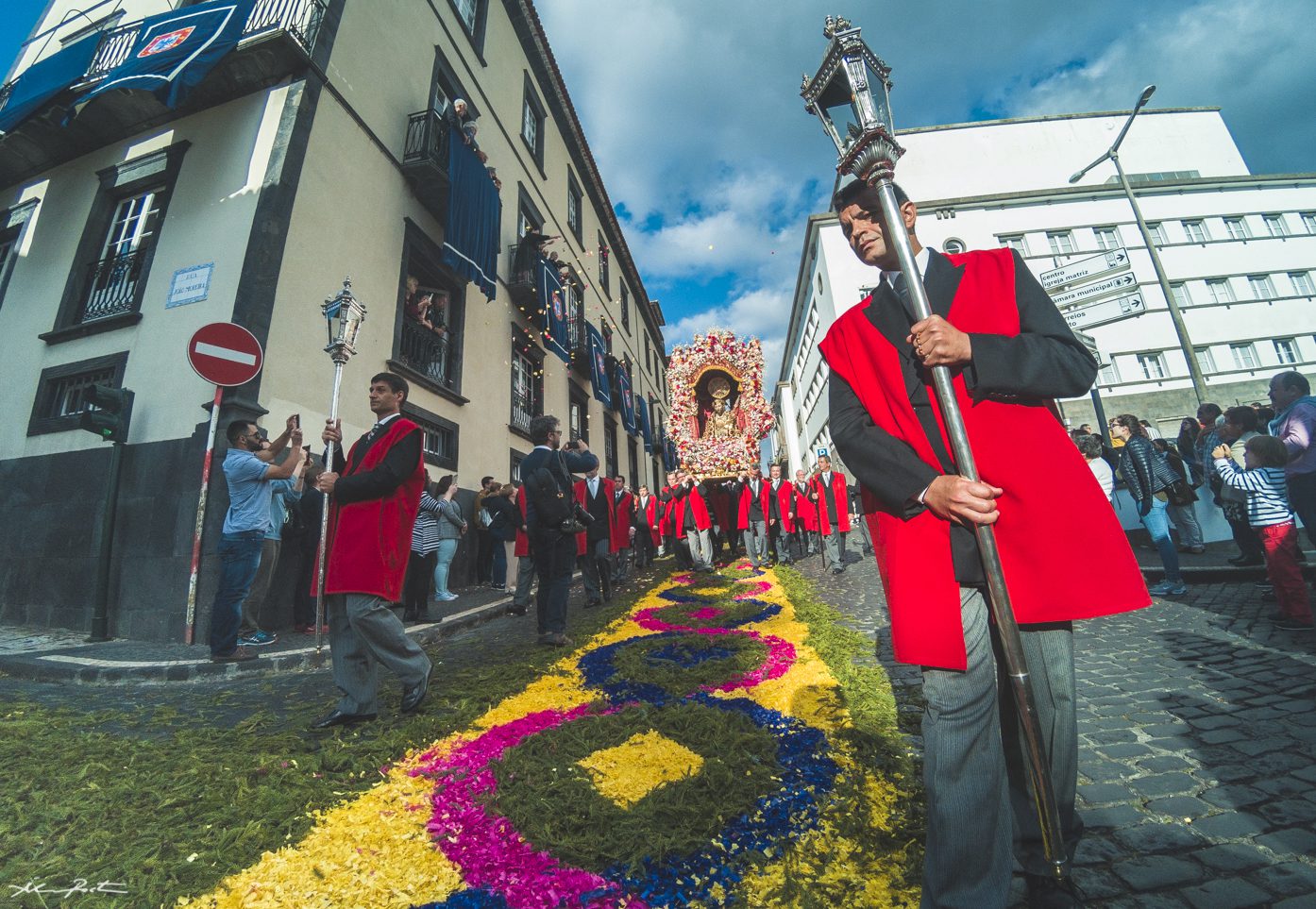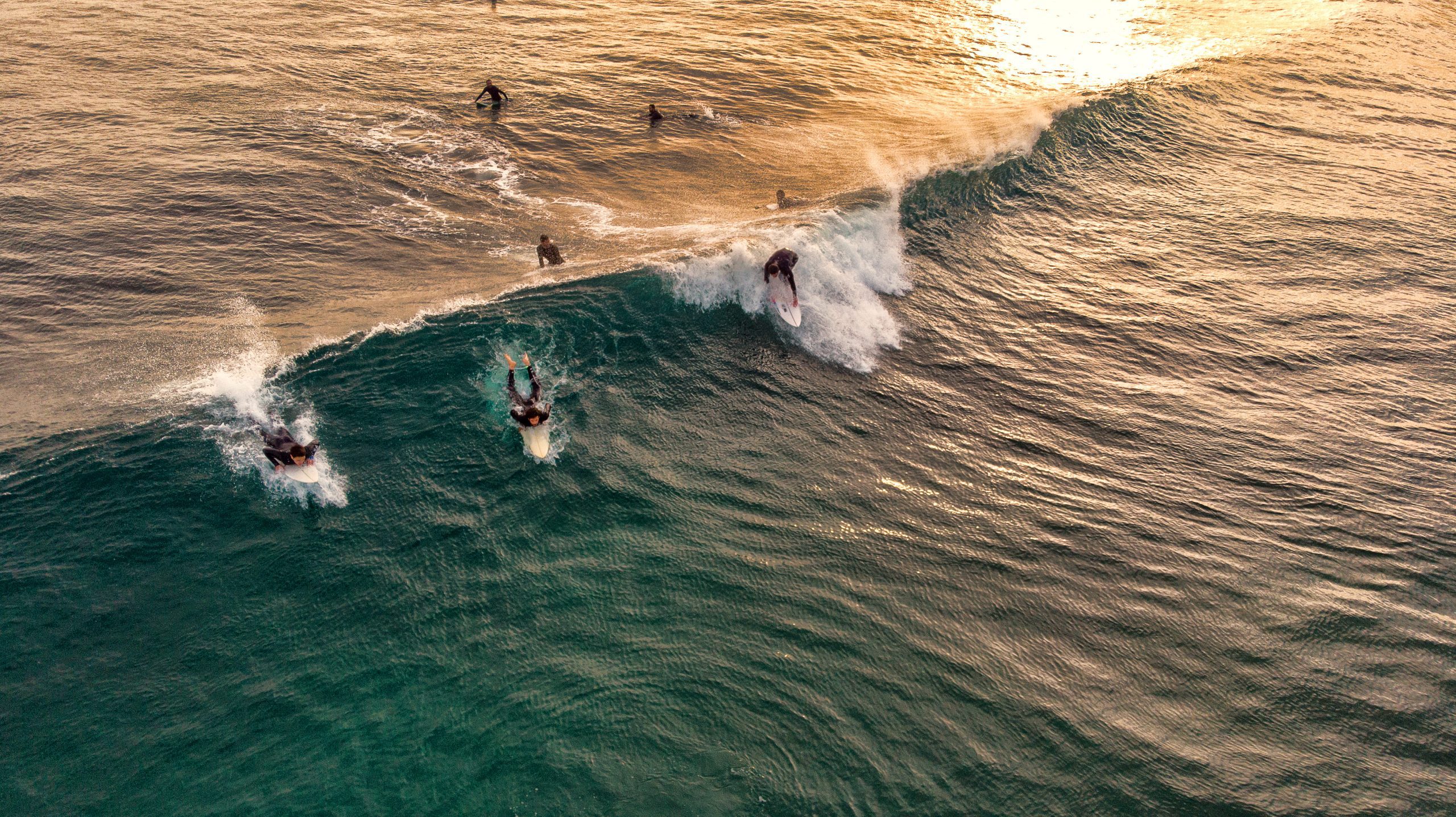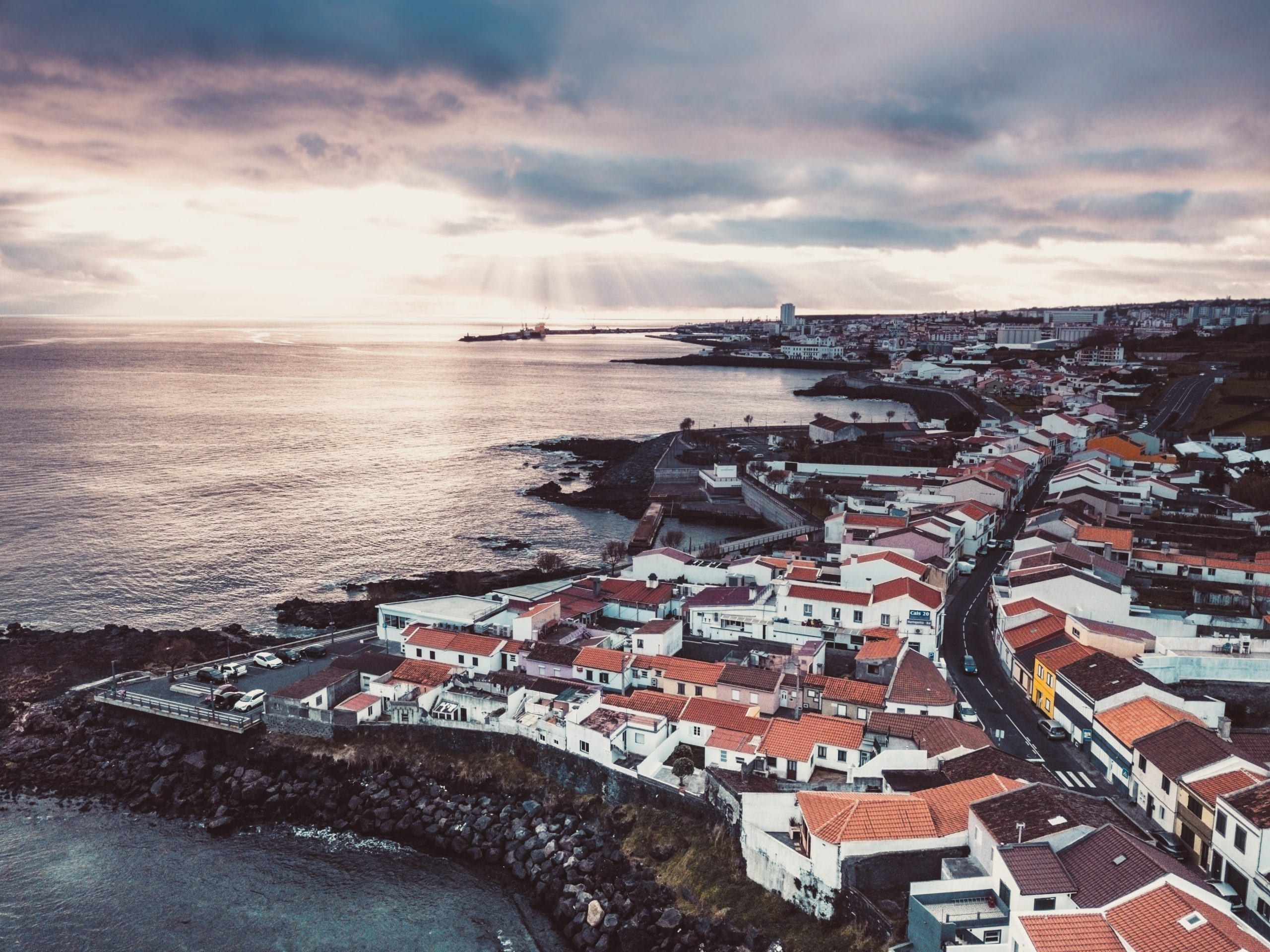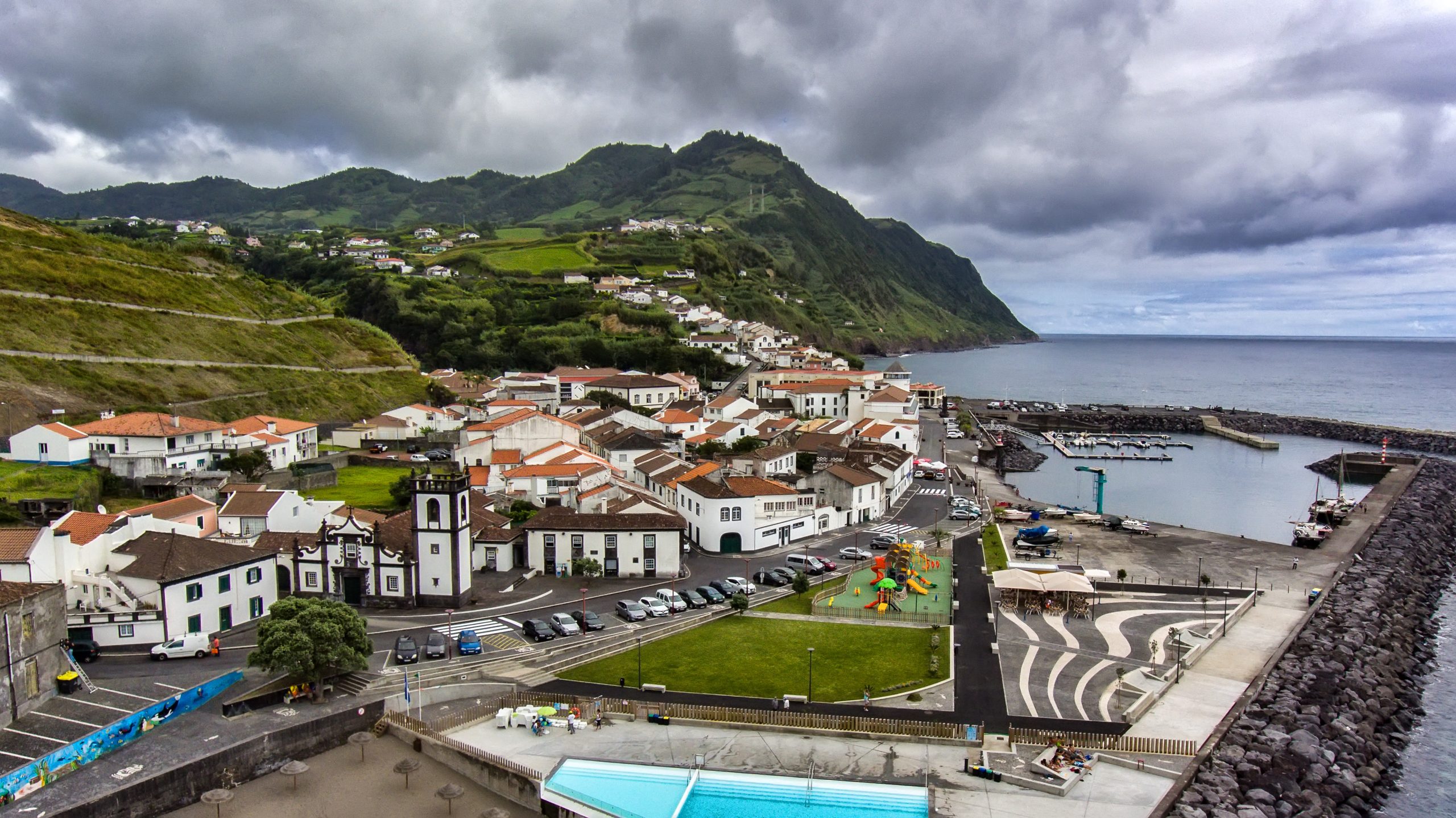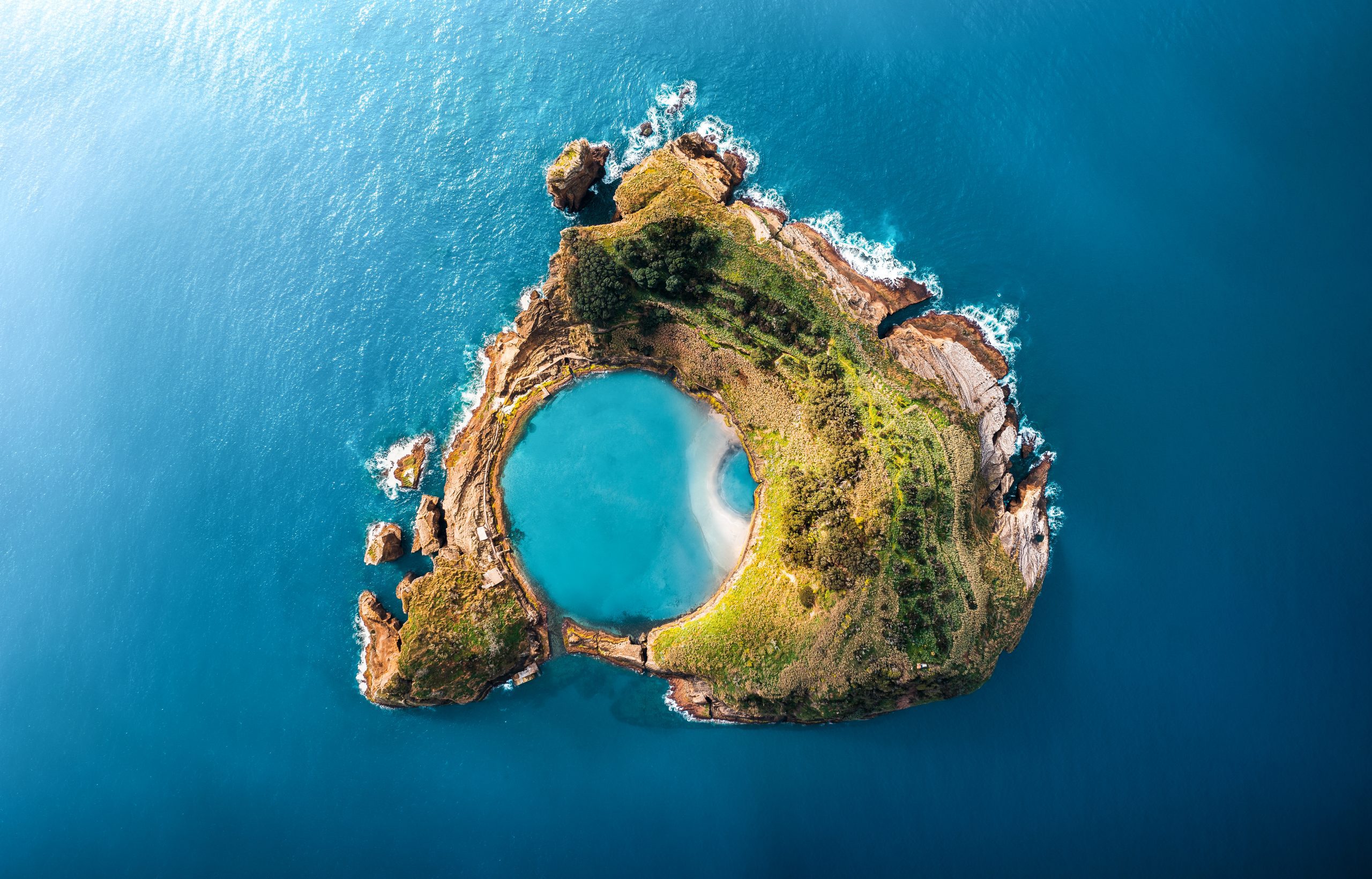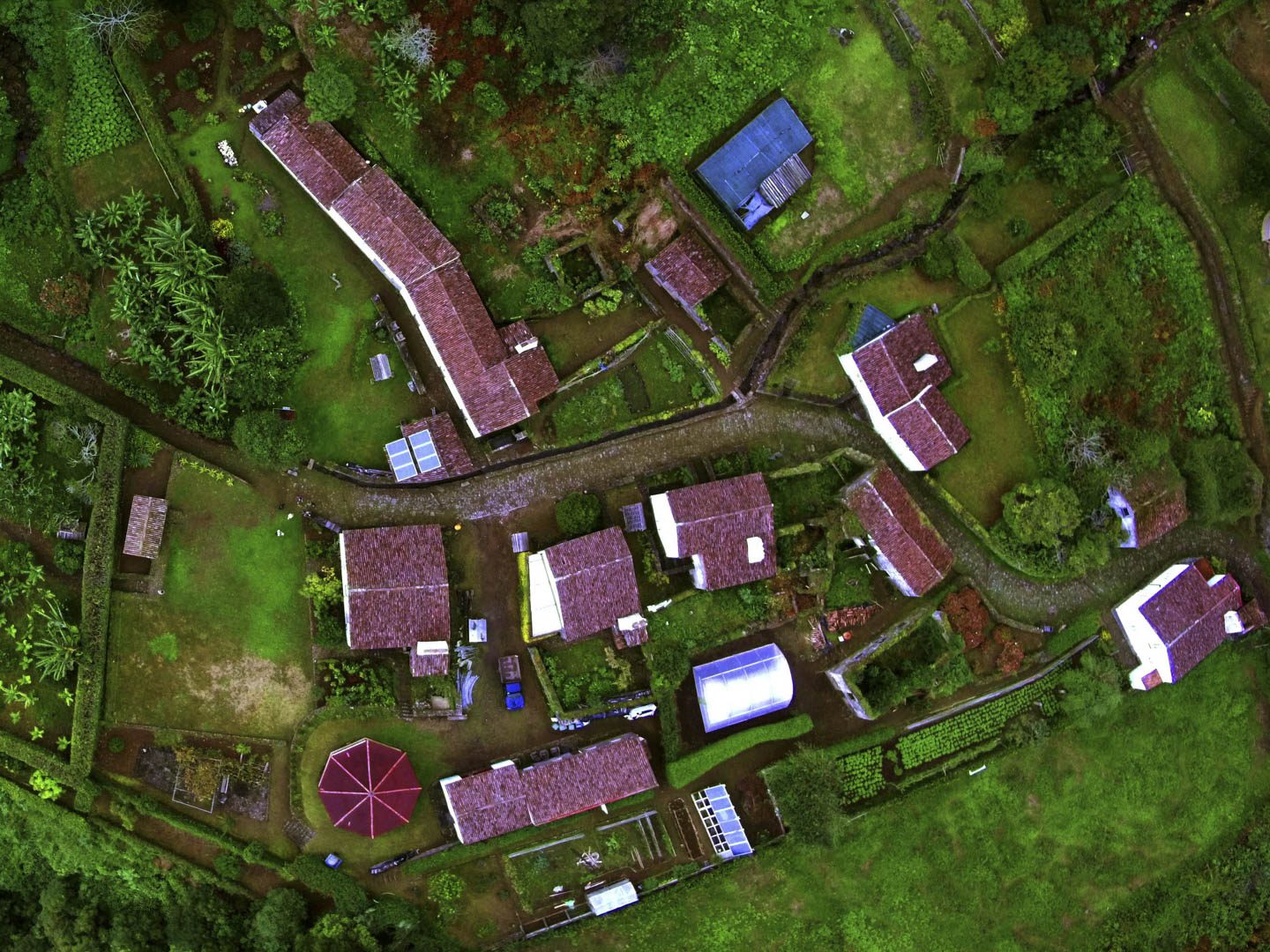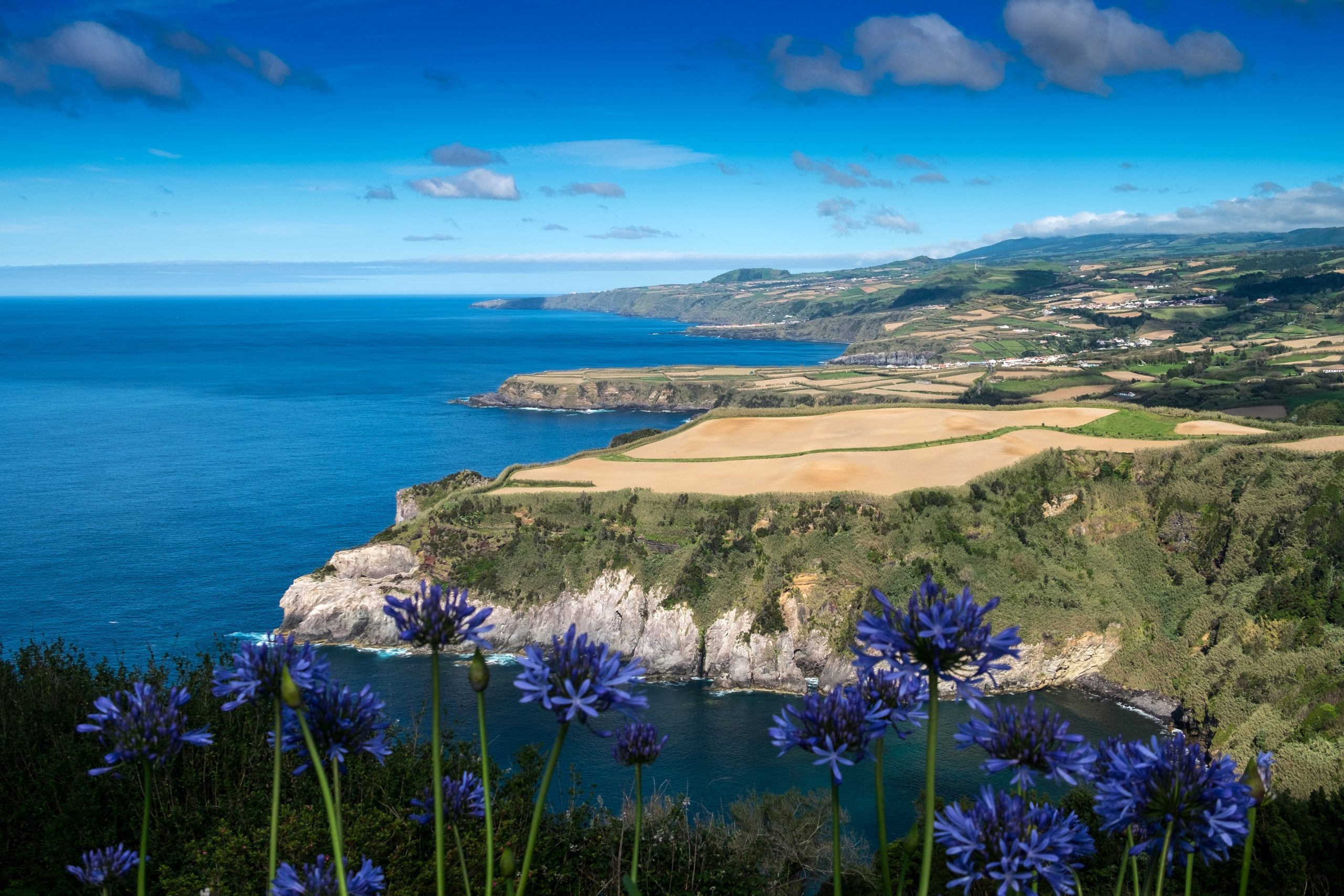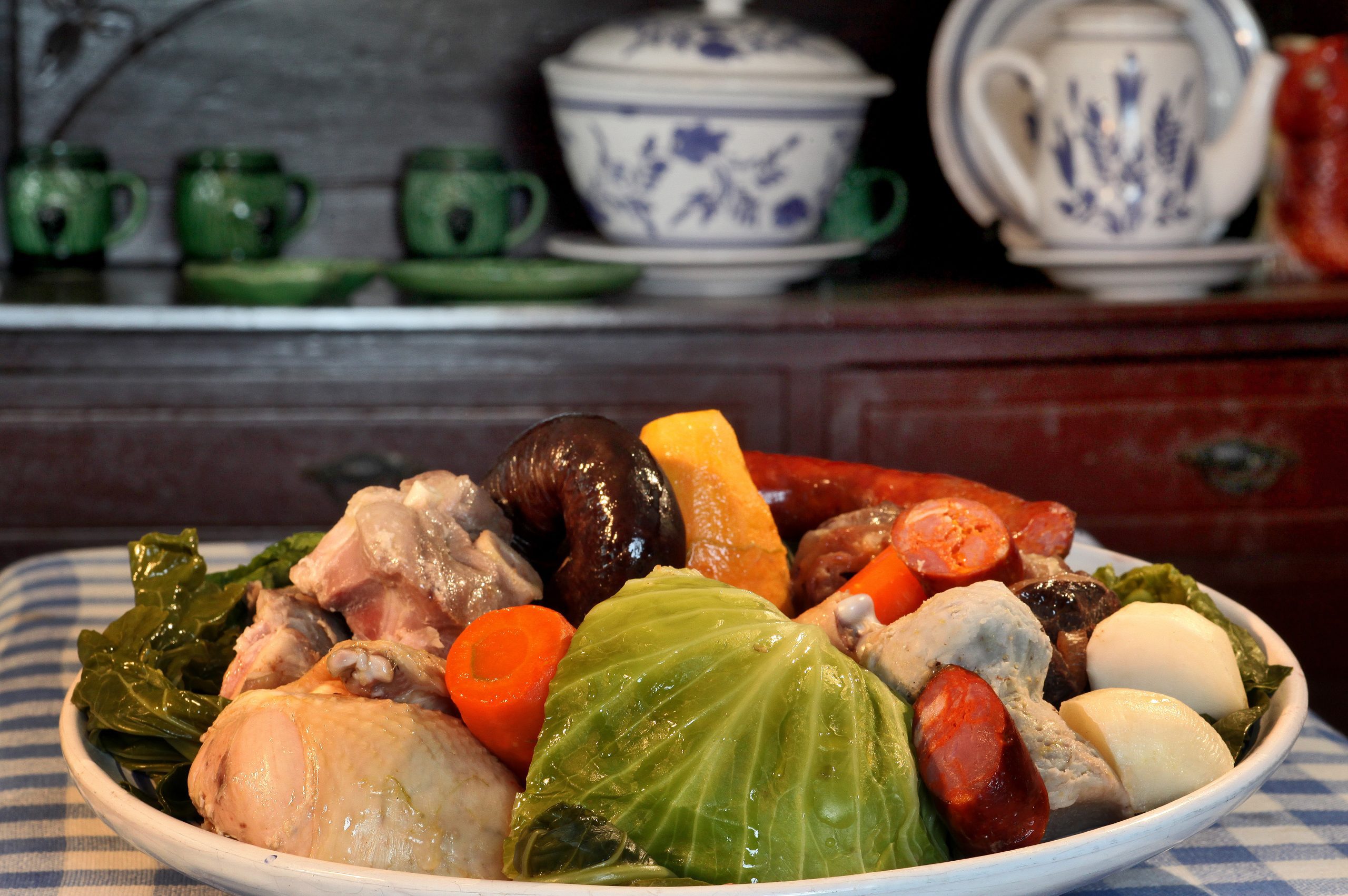Jardim António Borges is a botanical garden located only a few minutes from Ponta Delgada downtown. This peaceful paradise, a true green lung of the city centre, is free to enter, where you may find winding paths, endemic and native plants, caves, tunnels built from the red lava stone, and ponds.
Adding to this, while walking around the garden, you will find an emblematic ancient tree, the Australian banyan, straight out of a fairy tale.
What is Jardim António Borges

The António Borges Garden is one of the city’s – and the island’s – main historic gardens. It is a delightful place to walk around and discover its diverse fauna and flora from the four corners of the world. Enjoy the shade or the sunny spots, relax on a bench reading a book, or even work out.
For the children, there is a playground and many appealing places for their playful games.
Geology & Volcanology
The António Borges garden is part of the Picos Volcanic System (Ponta Delgada Platform), the most recent geomorphologic unit on the island, which develops between the flanks of the Sete Cidades and Água do Pau massifs.
The type of dominant volcanism is fissural, marked by the alignment of numerous eruptive volcanoes (cinder cones), with associated lava flows and basaltic pyroclasts, covered by pumice deposits expelled by the surrounding central volcanoes.
According to experts, the dominant lithology in the city of Ponta Delgada is mixed, originating from the intercalation of lava flows and pumiceous products. It is plausible that the rocky materials that decorate the caves and cavities in the garden originate from local excavations.
History & Geography
António Borges’s garden began being called Lombinha Garden (located at the top of Dog’s Alley). After António Borges da Câmara Medeiros death (1879) the garden’s name was switched to António Borges Garden in honour of its owner and founder.
When Lombinha Garden was built (1857-60) Ponta Delgada lived an unusual time of urban, economic and cultural dynamics resulting from the entrepreneurship of wealthy families. António Borges, José do Canto, and José Jácome Correia are the prominent names linked to the passion for building gardens: they became known as the gentlemen farmers.
Romantically inspired by English gardens, followed by the European taste of the time, the 19th-century gardens of Ponta Delgada were built in the hinterland and marked the transition between urban and rural spaces.
In the region of Ponta Delgada, where the António Borges garden is located. The soil and climate conditions have made possible the botanical acclimatization of fascinating ornamental species, from very distant origins, mainly from the low latitudes and the Southern Hemisphere. Environmental factors for the success of these “tropicalization” trials implemented in the Azores at the time are linked to the climatic and geological singularities then existing, and that can be found in other island groups of Macaronesia.
Culture & Festivities
It has been part of the memories of most inhabitants in Ponta Delgada the long hours spent in the garden, the adventures in the mysterious caves and tunnels, full of myths and stories; and Many other memories of fascinating animals, throughout several decades, made the delight of both children and grown-ups, unthinkable at the present, but very much to the liking of that time.
Even nowadays, the Garden arouses the curiosity of visitors, and the varied sceneries awaken feelings and emotions, as if in a theatre setting.
Many activities take place in the garden: concerts; World Dance festivals; Art installations within the Walk & Talk – Azores Festival; musical events within the ambit of the Tremor Festival; guided tours; tourist walks; guided activities for children; bat watching; Thai Chi and Chi Kung sessions; Yoga; school marathons; Urban Sketchers activities; Tourism operator’s meetings, among others.
Fauna & Flora

Nowadays, the botanical families represented by a greater number of species in António Borges’ Garden are Arecaceae (palm trees), Asparagaceae (such as dragon tree), and Mirtaceae (such as Melaleucas).
In 2020, the Municipality of Ponta Delgada published a new brochure about the garden, emphasizing a set of landmarks and specimens of interest. The select specimens correspond to 15 species with very different histories that are described below:
- Silk floss tree;
- Australian banyan;
- Cabbage tree;
- Picconia;
- Queensland Kauri pine;
- Chilean wine palm;
- Canary Islands date palm;
- Turpentine tree;
- Giant bird of paradise;
- Queen sago;
- Dragon tree;
- Norfolk Island pine;
- Guanacaste;
- Totara;
- New Zealand Christmas tree.
The António Borges garden is a diverse and varied expanse, featuring a wide variety of plants, rugged topography, and grottoes and ponds. These conditions are favourable to the coexistence of not only native Azorean fauna but also fascinating species.
Of the 37 species of Azorean breeding birds, it is possible, for example, to spot regularly endemic subspecies such as the Azorean buzzard, the Azorean wood pigeon, the Euroasian Blackbird, or even an endemic Macaronesian species such as the Atlantic canary. In the ponds, we can see domestic ducks all year round, and in the autumn, we can occasionally spot wild migrant ducks and herons.
It is possible to observe in this garden the common species of amphibians and reptiles that occur in the Azores, the Iberian water frog and the Madeira Wall lizard, respectively.
Visitors can spot the Azorean bat — one of the 11 mammal species living in the Azores — inside the garden. This bat, the only mammal endemic to the archipelago, becomes especially visible during its breeding season from April to September.
What to Do at Jardim António Borges
Jardim António Borges is a beautiful place for a run or a stroll, offering a variety of experiences for everyone. You may find some suggestions below:
- Relax, situated in the Valley of Ferns.
- Look up at the viewpoint.
- Explore red lava caves and tunnels.
- Walk along Palm Tree Lane.
- Take a picture next to the emblematic fig tree.
- Have a good time at the Children’s playground.
- Try our local treats at the Cafeteria.
- Sit on a bench, reading a book and feeling the garden.
- Yoga, work out, and stroll around.
With you, Jardim António Borges is alive!
Plan Your Visit to Jardim António Borges
Pro Tips
Check the weather before you head out and wear comfy shoes. Botanical gardens can be lovely shortly after rain, so don’t let a bit of water scare you away!
Where to Eat
If you need somewhere to eat near Jardim António Borges, click here. In this link, you’ll find the 10 best restaurants on TripAdvisor.
Where to Stay
To make your life easier, we’ve filtered the search by:
Nearby Attractions
Mata-Jardim José do Canto

José do Canto, a significant historical figure of São Miguel Island, established the botanical garden Mata-Jardim José do Canto in the 19th century. You’ll find it in Ponta Delgada. The garden boasts a vast collection of plants from various regions around the globe, making it an excellent location to experience nature while still in the heart of the city.
We highly recommend botany enthusiasts visit this beautiful site. Moreover, the garden has recently incorporated a specific area dedicated to endemic species of Macaronesia, further enhancing its appeal to visitors.
➞ Related Articles: Chapel of Nossa Senhora das Vitórias | Salto do Rosal
Igreja de Todos os Santos (Colégio dos Jesuítas)

This church is a stunning example of Baroque art, established by the Order of the Society of Jesus in 1592. However, in 1760, the Marquês de Pombal ordered the expulsion of the Jesuits from Portugal. Nicolau Maria Raposo de Amaral purchased the church in 1834, and his heirs subsequently donated it to the Municipality of Ponta Delgada.
Today, it is a part of the “Núcleo de Arte Sacra do Museu Carlos Machado” and is open to visitors. While the exterior of the church is breathtaking, the interior and its numerous sacred art pieces on display are definitely worth exploring.
Ponta Delgada

Ponta Delgada is officially one of the best counties in Portugal to live in. The modern city is the biggest and most populous of the Azores. There, the ocean breeze, mountain views, and delicious local food are part of everyday life. Despite being an energetic city, Ponta Delgada has no rush and no annoying traffic jams.
In the beginning, Ponta Delgada was only a small fishing village. But quickly, thanks to its safe bays, it became the most important harbour for trade on the island. In 1546, the authorities declared Ponta Delgada a city and considered it the capital of the island after a terrible earthquake destroyed the first capital, Vila Franca do Campo, in 1522. Nowadays, Ponta Delgada, with its almost 70,000 inhabitants, is a cosmopolitan city, attracting visitors from all over the world.
Check all our articles about each one of the most relevant points of interest in Ponta Delgada: Gruta do Carvão | Ponta Delgada | Jardim António Borges | Jardim Botânico José do Canto | Pinhal da Paz | Portas da Cidade | Milícias & Pópulo Beaches | Praia de São Roque | Pico Vermelho Windmill | Rocha da Relva | Mercado da Graça | Miradouro Vigia da Baleia
Complementary Information
Best Season to Visit the Azores
The Azores Archipelago boasts a unique climate that shapes its lush landscapes, making it a splendid year-round destination. With mild temperatures and minimal fluctuations, each season offers something unique. Spring averages 16 °C, summer reaches 21 °C, autumn cools to 18 °C, and winter remains mild at 14 °C.
→ For a detailed breakdown of the weather by month, check the following links 🌤️☔️: January | February | March | April | May | June | July | August | September | October | November | December
How to Get to the Azores
The Azorean Archipelago is easily accessible through numerous flight routes. Lisbon and Porto are the main entry points to the continent, with direct flights available to São Miguel (PDL), Terceira (TER), Faial (HOR), Pico (PIX), and Santa Maria (SMA). To find the best flight, use search engines like eDreams or Skyscanner. These platforms let you compare prices and schedules from multiple airlines in one convenient location.
For more details on how to get to the Azores, take a look at our complete guide. But what if you want to explore beyond your arrival island? We’ve got you covered!
- Azores airports 🛬
- Flights between islands ✈️
- Ferries between islands ⛴️
- Which island to choose? 🏝️
- What airlines fly to the Azores? 🛩️
→ Once you’ve found the perfect route, book your tickets and get ready to experience one of the world’s most stunning island groups!
Travel Essentials
Essential Information for your Azores trip: Azorean Language & Phrases 🗣️ | Currency & Banks 💵 | Credit Cards & Traveler’s Cheques 🏧 | Driving in the Azores 🚗 | Electricity 🔌 | Experiences & Tours 🗺️ | Health & Safety 🩺 | Internet & Wi-Fi Access 🛜 | Phones & Mobile Service 📞 | Post Offices & Buying Stamps ✉️ | Public Holidays 🏖️ | Shopping 🛒 | Time & Daylight 🕒 | Whale Watching Guide 🐳 | Best Island to Visit 🏞️
Useful Tools & Apps
The weather in the Azores can be variable, so it’s helpful to use some apps before visiting the islands. Spotazores provides live camera feeds from the main tourist attractions, allowing you to check the weather and plan your visit. For accurate weather predictions, use Windy or Windguru — they provide the most reliable predictions.
Video
Conclusion
Botanical gardens are not just for city dwellers to connect with green spaces. They also provide inspiration, education, and wonder. Each botanical garden is unique and is a great activity any time of year.
Ready to explore tunnels, lava caves, and learn about the António Borges Garden fauna and flora?

